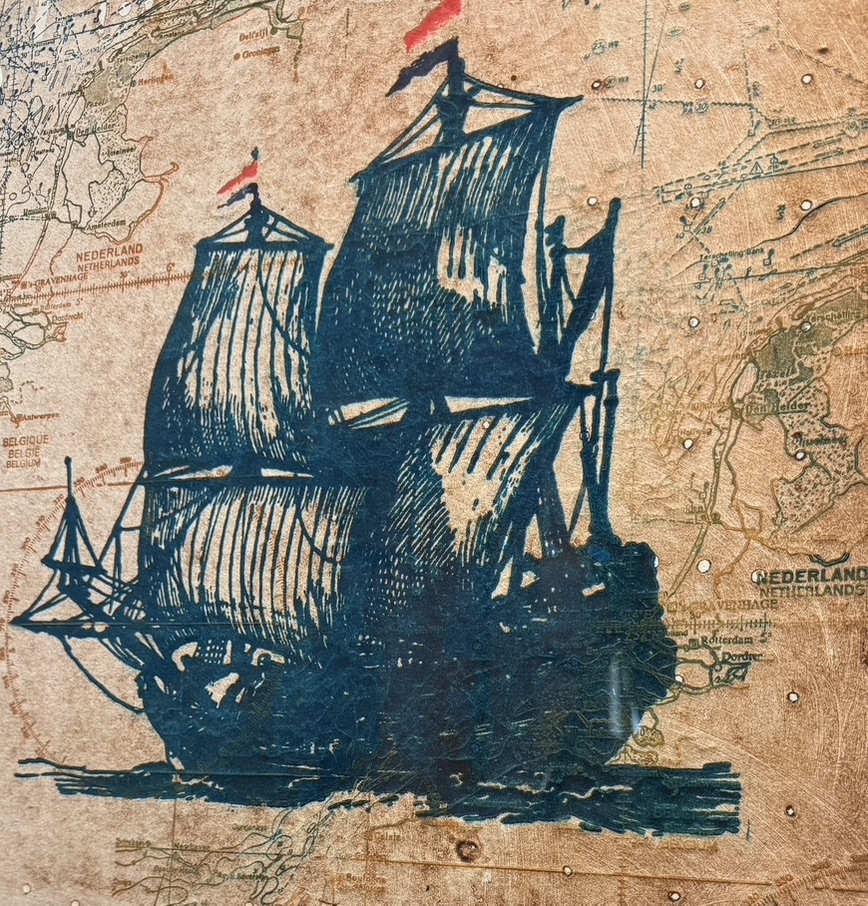 It is common to assume the inevitability of history. After all, the story usually favors the victor. Was it really North America’s manifest destiny to be English? In the middle of the 17th century, it appeared North America could have become multi-national like Europe. Not everyone accepted that the establishment of the English colony at Jamestown, already hemmed in by the French in Canada and the Spanish in Florida, created an English claim to all the Eastern seaboard in between.
It is common to assume the inevitability of history. After all, the story usually favors the victor. Was it really North America’s manifest destiny to be English? In the middle of the 17th century, it appeared North America could have become multi-national like Europe. Not everyone accepted that the establishment of the English colony at Jamestown, already hemmed in by the French in Canada and the Spanish in Florida, created an English claim to all the Eastern seaboard in between.
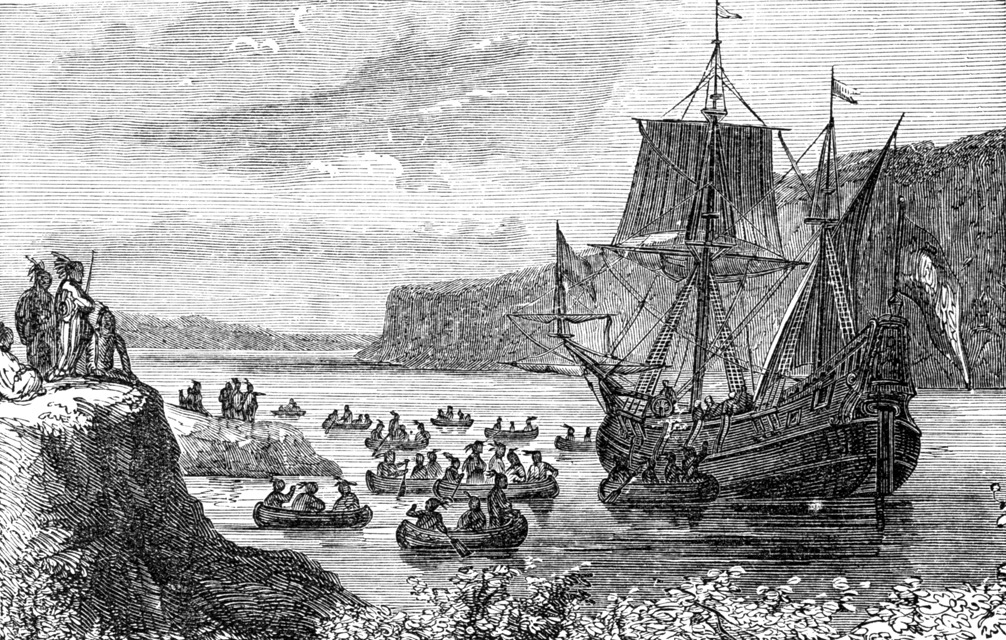
In 1609 when Jamestown was facing its Starving Time, Henry Hudson, an English explorer, accepted a commission from merchants of the Dutch East India Company of the Netherlands (which was in competition with the English East India Company) to find a northern sea route to the East Indies. On this journey, Hudson, finding the route across the Arctic still blocked with ice in May, turned his ship Halve Maeri (Half Moon) around and decided to look for a route through North America. Though not the first to find the “North River” (later renamed the Hudson River in his honor), his exploration went as far as present-day Albany. This became the basis of Dutch claims and the settlement of New Netherlands in what is now New York and New Jersey. Capt. Hudson journeyed as far south as the tip of the Chesapeake Penninsula. The following year, Hudson led an English expedition where he claimed Hudson Bay to the north for the English, after which he was set adrift by his own mutinous crew with his teenage son and 7 loyal crewmen in James Bay, never to be heard of again. [1]
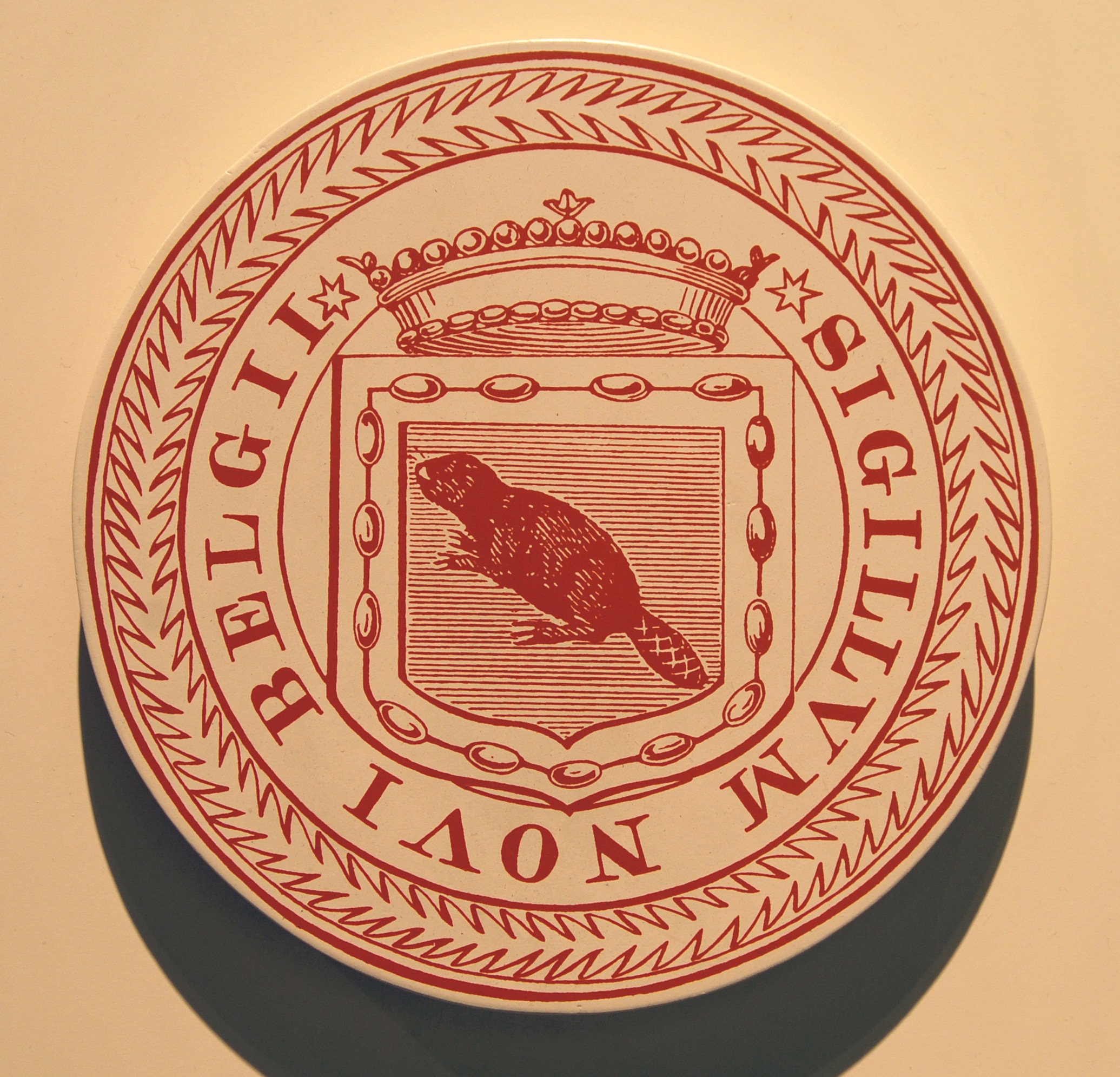
The Dutch settled New Netherlands by 1623 and founded their key city New Amsterdam (Manhattan) in 1626. Much of the wealth of the colony came from lucrative fur trading through alliances with the local indigenous tribes. Like its European namesake, New Amsterdam quickly drew settlers from a variety of countries. Alongside the Dutch lived French-speaking Huguenots, Scandinavians, Germans, and English. The Dutch were heavily involved in the slave trade, so Africans were unwillingly also part of their communities. [2]
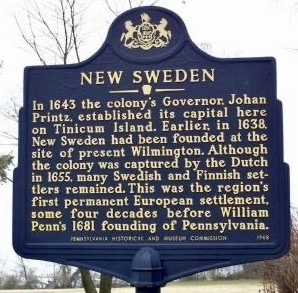 Nor were the Dutch the only Europeans settling the mid-Atlantic. Sweden, a rising European power, authorized the New Sweden Company and enticed Peter Minuit, a former governor of New Netherlands who was unhappy about his recall to Holland, to lead their first expedition to North America. They purchased land from the local Lenape chiefs and established Fort Christina in the area of today’s Wilmington, Delaware. In Anglo-centric history, William Penn is credited with founding Pennsylvania in 1681, but the Swedes were there by 1640 and had a thriving community outside today’s Philadelphia. Although there were bickering claims over the Delaware River Valley between the Dutch and Swedes, they combined forces in 1641-42 to drive out a group of English settlers trying to establish their claim there. Ultimately, the Dutch under their governor/ general Peter Stuyvesant attacked and conquered New Sweden in 1655. [3]
Nor were the Dutch the only Europeans settling the mid-Atlantic. Sweden, a rising European power, authorized the New Sweden Company and enticed Peter Minuit, a former governor of New Netherlands who was unhappy about his recall to Holland, to lead their first expedition to North America. They purchased land from the local Lenape chiefs and established Fort Christina in the area of today’s Wilmington, Delaware. In Anglo-centric history, William Penn is credited with founding Pennsylvania in 1681, but the Swedes were there by 1640 and had a thriving community outside today’s Philadelphia. Although there were bickering claims over the Delaware River Valley between the Dutch and Swedes, they combined forces in 1641-42 to drive out a group of English settlers trying to establish their claim there. Ultimately, the Dutch under their governor/ general Peter Stuyvesant attacked and conquered New Sweden in 1655. [3]
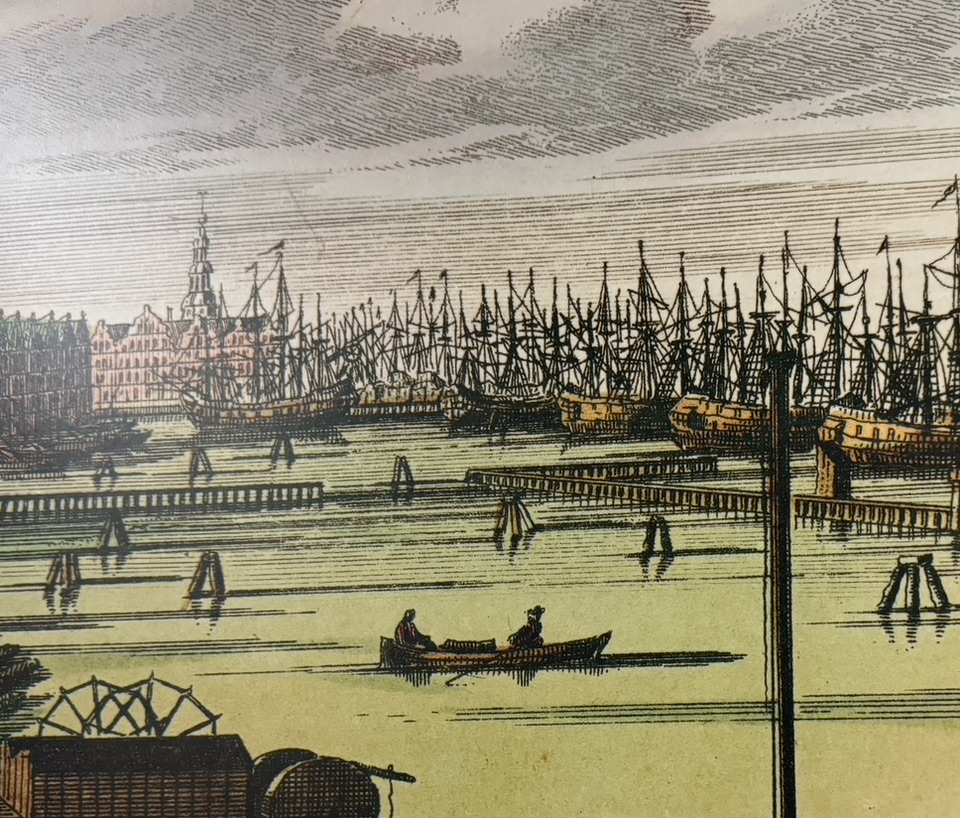 So what does this history have to do with my meandering story of the Thorowgoods in Virginia and their connections? First, one must grapple with the term “Dutch merchant.” Should that term be restricted to someone born of Dutch parents in the Netherlands who was engaged in trading goods in Dutch ships? Could it include those ex-patriots, born in England, but who migrated to the Netherlands to do business through Dutch or even English companies? What about those, like John Custis II, who were born in the Netherlands to English parents? Although John Custis II arrived in Virginia about 1651, he had to wait until 1658 before he was naturalized by an Act of the Assembly and received the rights with his Dutch-born brother William “as if they had been Englishmen born.” Were they considered “Dutch” before that? [4]
So what does this history have to do with my meandering story of the Thorowgoods in Virginia and their connections? First, one must grapple with the term “Dutch merchant.” Should that term be restricted to someone born of Dutch parents in the Netherlands who was engaged in trading goods in Dutch ships? Could it include those ex-patriots, born in England, but who migrated to the Netherlands to do business through Dutch or even English companies? What about those, like John Custis II, who were born in the Netherlands to English parents? Although John Custis II arrived in Virginia about 1651, he had to wait until 1658 before he was naturalized by an Act of the Assembly and received the rights with his Dutch-born brother William “as if they had been Englishmen born.” Were they considered “Dutch” before that? [4]
The nationality and birth place of those merchants sailing in and out of Dutch ports is not always known. The Dutch identity is further confused as “Dutch” is a language and adjective, not a country, but is usually associated with the country the Netherlands which was also known as the United Provinces, Dutch Republic, or Lowland Countries. However, that is not the same as Holland (an important province), and was distinct from Flanders or the Spanish Netherlands. Despite the confusions, much of the 17th century is viewed as the “Dutch Golden Age,” and the “Dutch” exerted great influence in the trade, arts, and politics of the time.

It was not surprising, then, that Capt. David DeVries, a noted Dutch explorer, visited Virginia in 1633. He had already had adventures in the Far East, encounters with indigenous tribes along the Delaware River, and provided service to the Dutch in New Netherlands. De Vries received a warm welcome from Virginia’s Gov. John Harvey, a former friend from their days in the East Indies. DeVries also visited Capt. Samuel Matthews, Capt. Stone, and Capt. Daniel Goegen (Gookin) along the Elizabeth River, through which he garnered valuable information about the the conditions, problems, and politics of the Virginia colony. DeVries visited Virginia thrice more in 1635, 1636, and 1643 . Daniel Gookin’s younger brother, John, with whom Daniel shared the plantation which DeVries visited, would become the second husband of Sarah Thorowgood Gookin Yeardley. [5]
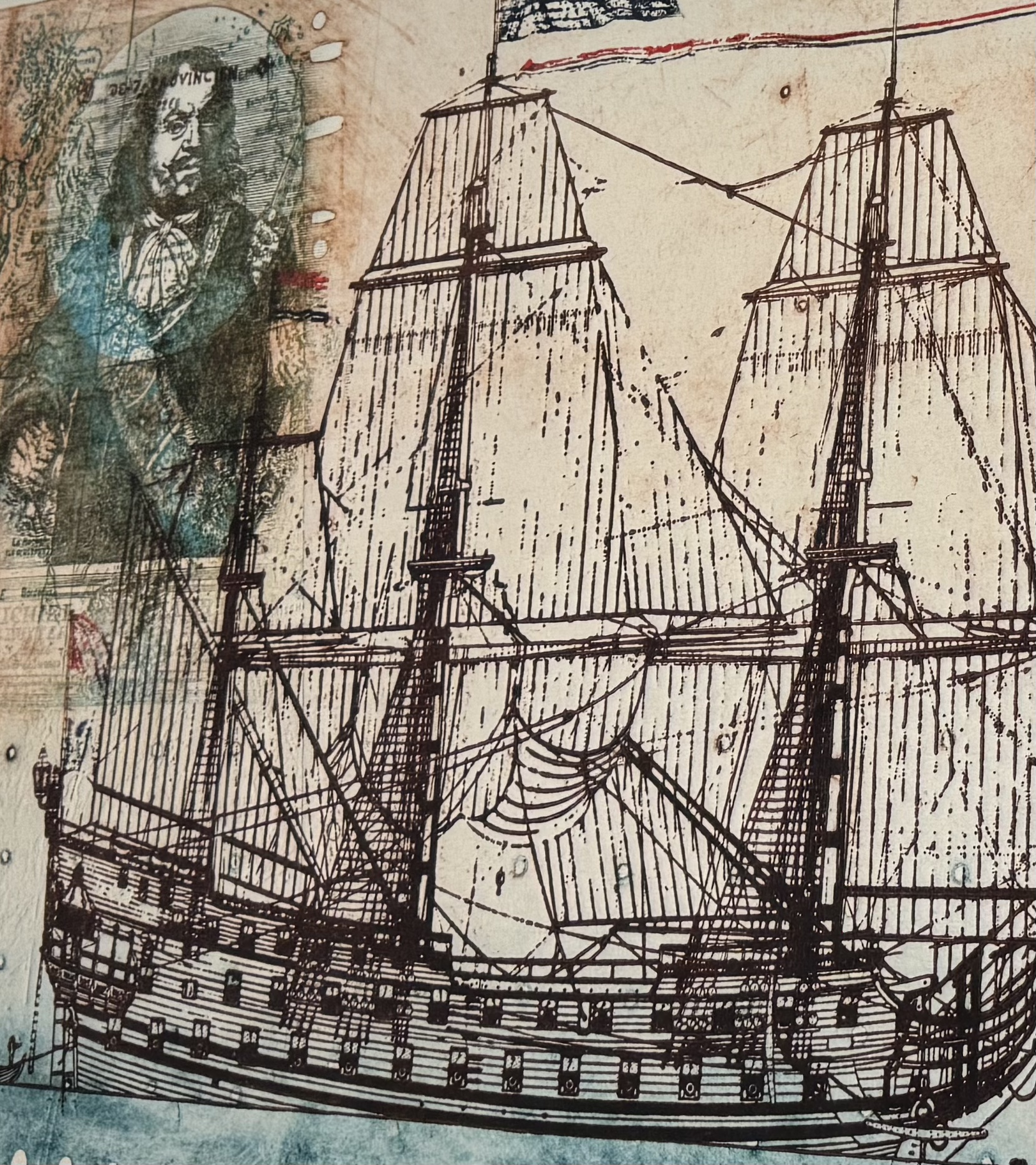 During this time of Dutch presence in North America, strong mercantile ties were established between the English colonies, the Netherlands, and New Netherlands. Virginians found a ready market there for their quality tobacco and enjoyed the Dutch-style “free-trade” arrangements for importing goods. During the tumultuous years of the English Civil War in the 1640s, there was relative stability in dealing with the Dutch. Over 33 Dutch ships were known to be involved in Virginia’s tobacco trade then. [6]
During this time of Dutch presence in North America, strong mercantile ties were established between the English colonies, the Netherlands, and New Netherlands. Virginians found a ready market there for their quality tobacco and enjoyed the Dutch-style “free-trade” arrangements for importing goods. During the tumultuous years of the English Civil War in the 1640s, there was relative stability in dealing with the Dutch. Over 33 Dutch ships were known to be involved in Virginia’s tobacco trade then. [6]
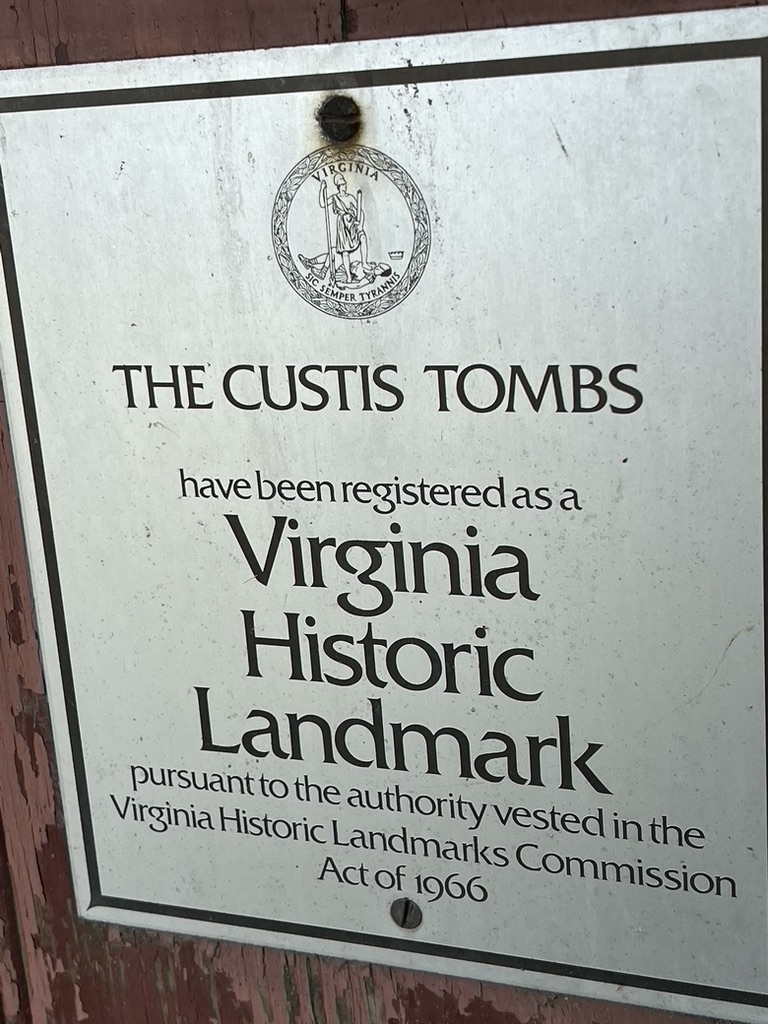 Argoll Yearley and his brother Francis, who had married the then twice-widowed Sarah Thorowgood Gookin, were among those Virginia planters who sold to the Dutch. A Dutch connection was not surprising in that their father, Gov. George Yeardley, had been one of the early Virginia leaders who had fought in the Low Countries war for the independence of the Dutch Republic. It was in a journey with his shipment of tobacco to Rotterdam in 1649 that Argoll Yeardley married Ann Custis, the daughter of English ex-patriots Henry and Joan Custis who managed a popular inn there. Subsequently, not only Ann, but her uncle John Custis I and brothers John Custis II, William II, and Joseph came from the Netherlands to the Eastern Shore, though John I did not settle there. [7]
Argoll Yearley and his brother Francis, who had married the then twice-widowed Sarah Thorowgood Gookin, were among those Virginia planters who sold to the Dutch. A Dutch connection was not surprising in that their father, Gov. George Yeardley, had been one of the early Virginia leaders who had fought in the Low Countries war for the independence of the Dutch Republic. It was in a journey with his shipment of tobacco to Rotterdam in 1649 that Argoll Yeardley married Ann Custis, the daughter of English ex-patriots Henry and Joan Custis who managed a popular inn there. Subsequently, not only Ann, but her uncle John Custis I and brothers John Custis II, William II, and Joseph came from the Netherlands to the Eastern Shore, though John I did not settle there. [7]
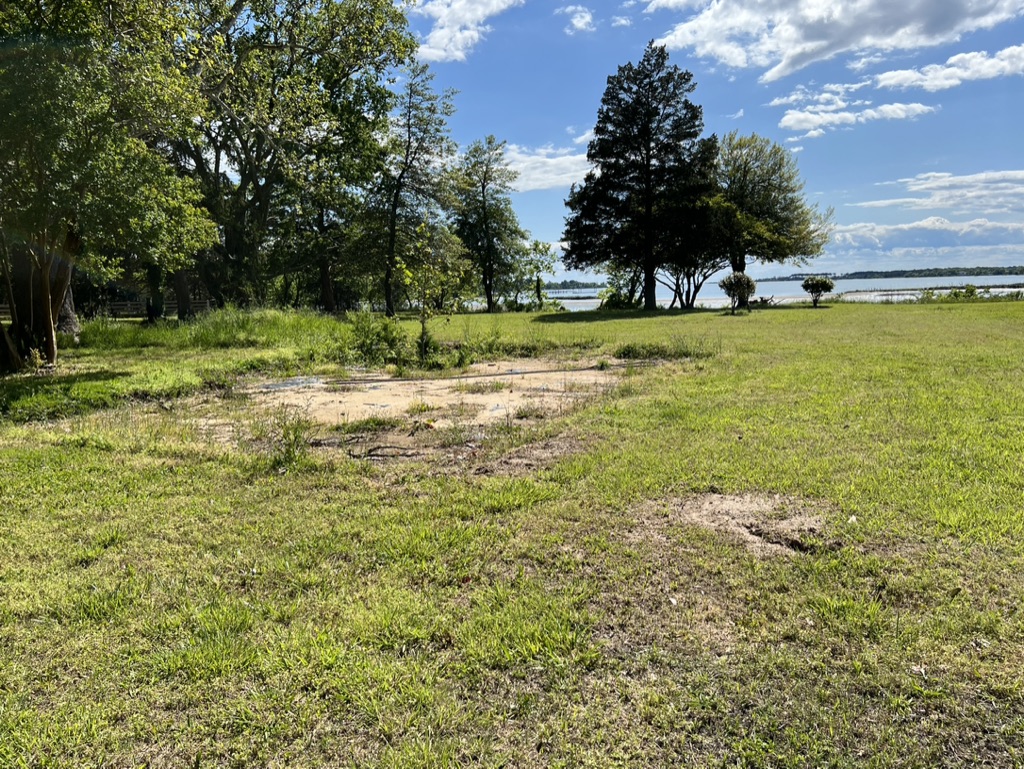
Exciting new archaeological evidence has been found of early Dutch influence and trading at Eyreville on the Cherrystone Inlet of the Eastern Shore. Having been the site of John Howe’s home in the 1630s and of the yellow-brick lined foundation of the 1657 house of William Kendall, a successful merchant and court commissioner, the artifacts reveal that this was one of the earliest sites on the Eastern Shore with substantial evidence of Dutch trade and/or possible short-term occupation. Numerous Dutch-made tobacco pipes, ceramics, and a great quantity of yellow bricks from the Netherlands have been found in the excavations. [8]
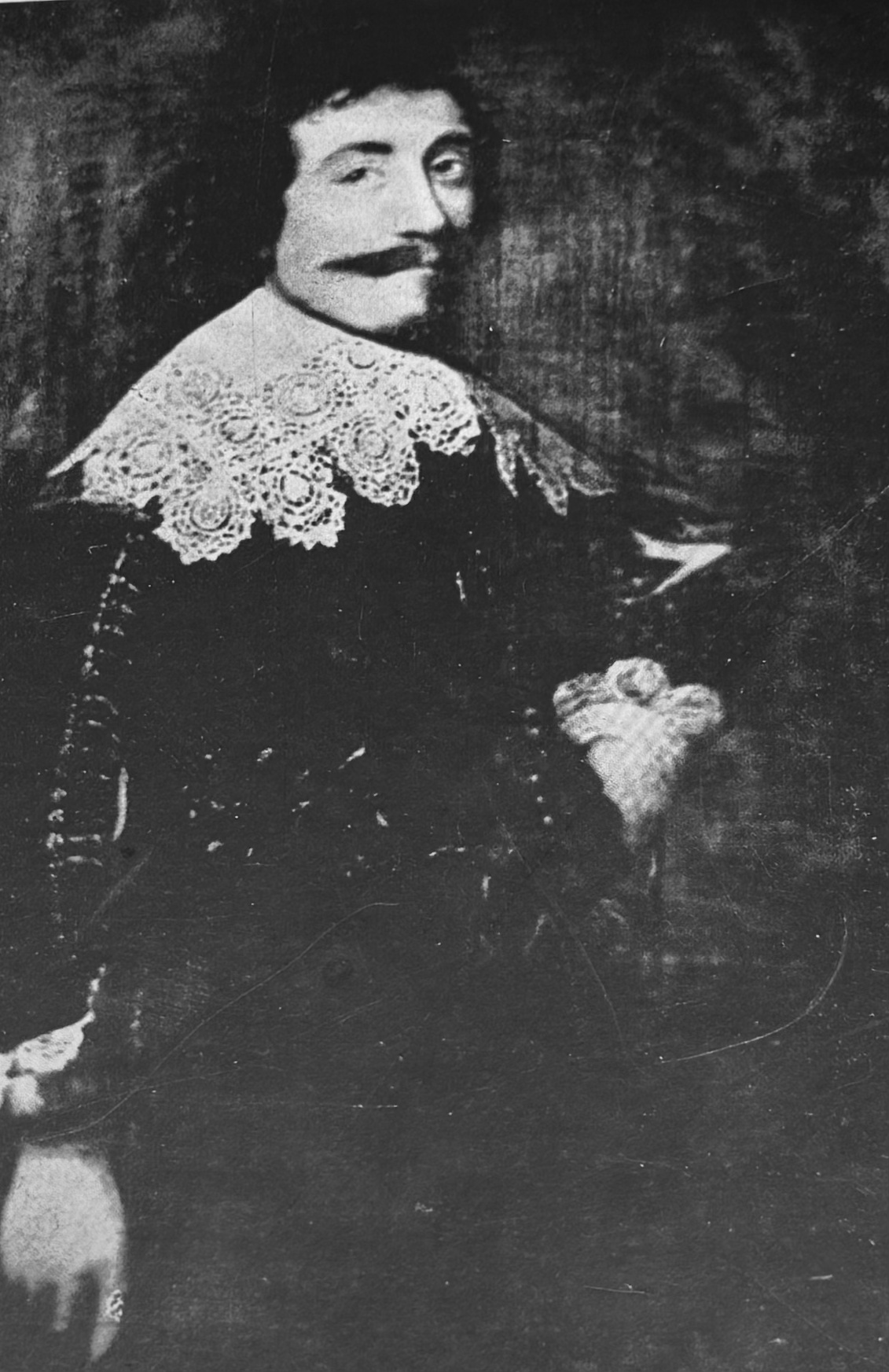
During this same time, another English merchant living in Rotterdam moved to Lower Norfolk County, Virginia, with his two sons William II and Arthur. William Moseley I and his wife Suzanne brought with them jewels from Rotterdam to use as an exchange to purchase needed livestock for their new home in Virginia.
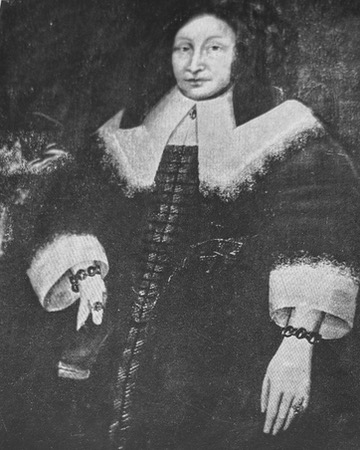
As recorded in the Lower Norfolk Court records in November 1652, William Moseley paid the equivalent of 612 guilders for nine cattle from Francis Yeardley using an enameled gold and diamond buckle for a hat band, a gold ring set with a diamond, ruby, saphire and emerald, and a gold enameled pendant with diamonds. In a gracious letter, Suzanne Moseley wrote that “I had rather your wife should wear them than any gentlewomen I yet know in the country and … I wish Ms. Yeardley health and prosperity to wear them.” [9]
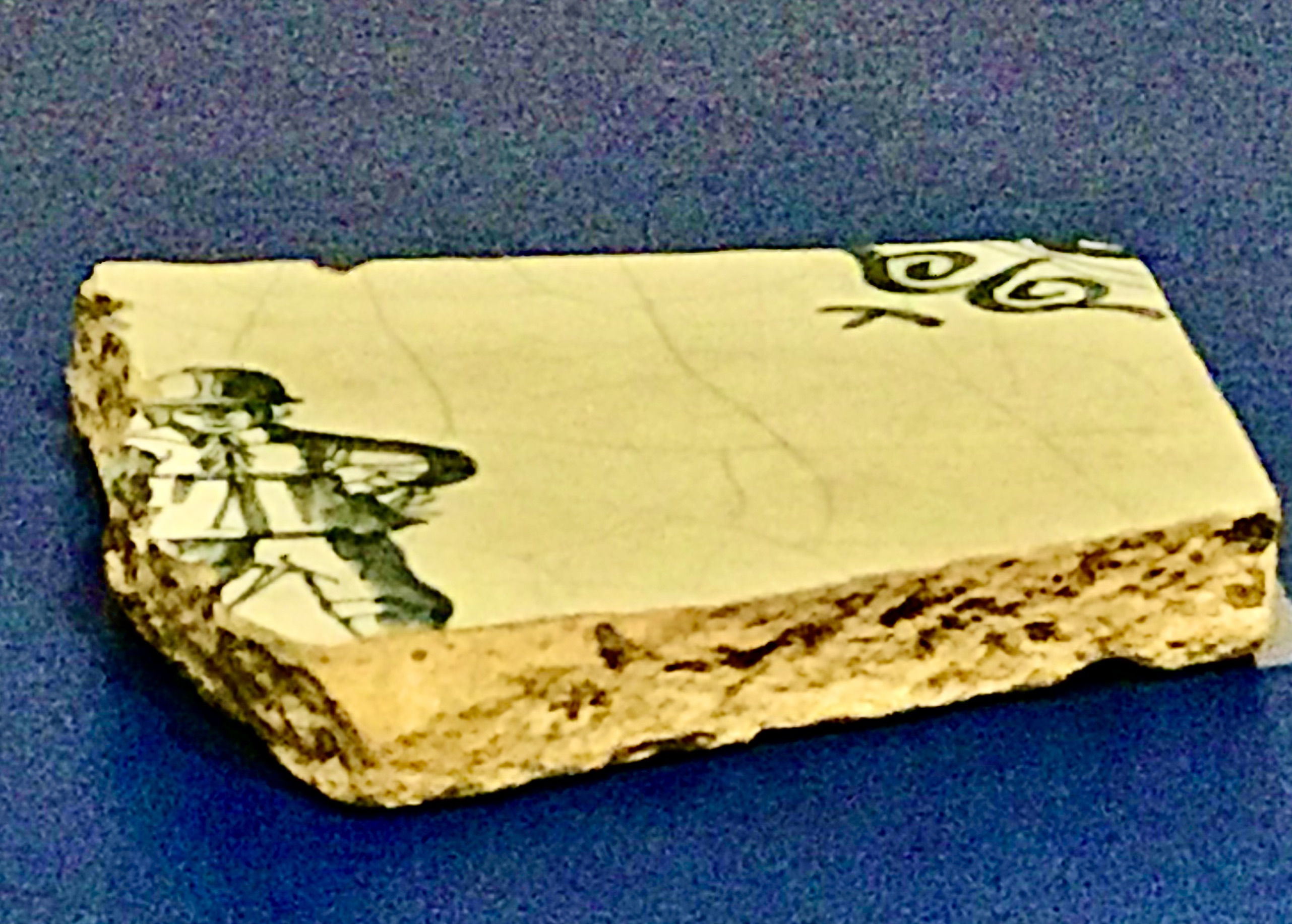
It is not surprising then that the remains of the original house built in Lower Norfolk County by Adam and Sarah Thorowgood and continually lived in by Sarah and her subsequent husbands should be replete with artifacts of Dutch goods. In a study of Dutch trade goods and ceramics in the 17th century English colonies, it was noted that “one of the largest aggregations of Dutch artifactual remains yet found archaeologically in Virginia was recovered from the so-called Chesapean site, believed to have been part of Adam Thoroughgood’s seventeenth century land holdings.” As that house burned and was abandoned in the 1650s, the artifacts are a time capsule of Dutch influence in that area. In addition, the inventory taken at Francis Yeardley’s death in 1656 included, among other items,”ten Dutch pictures.” [10]
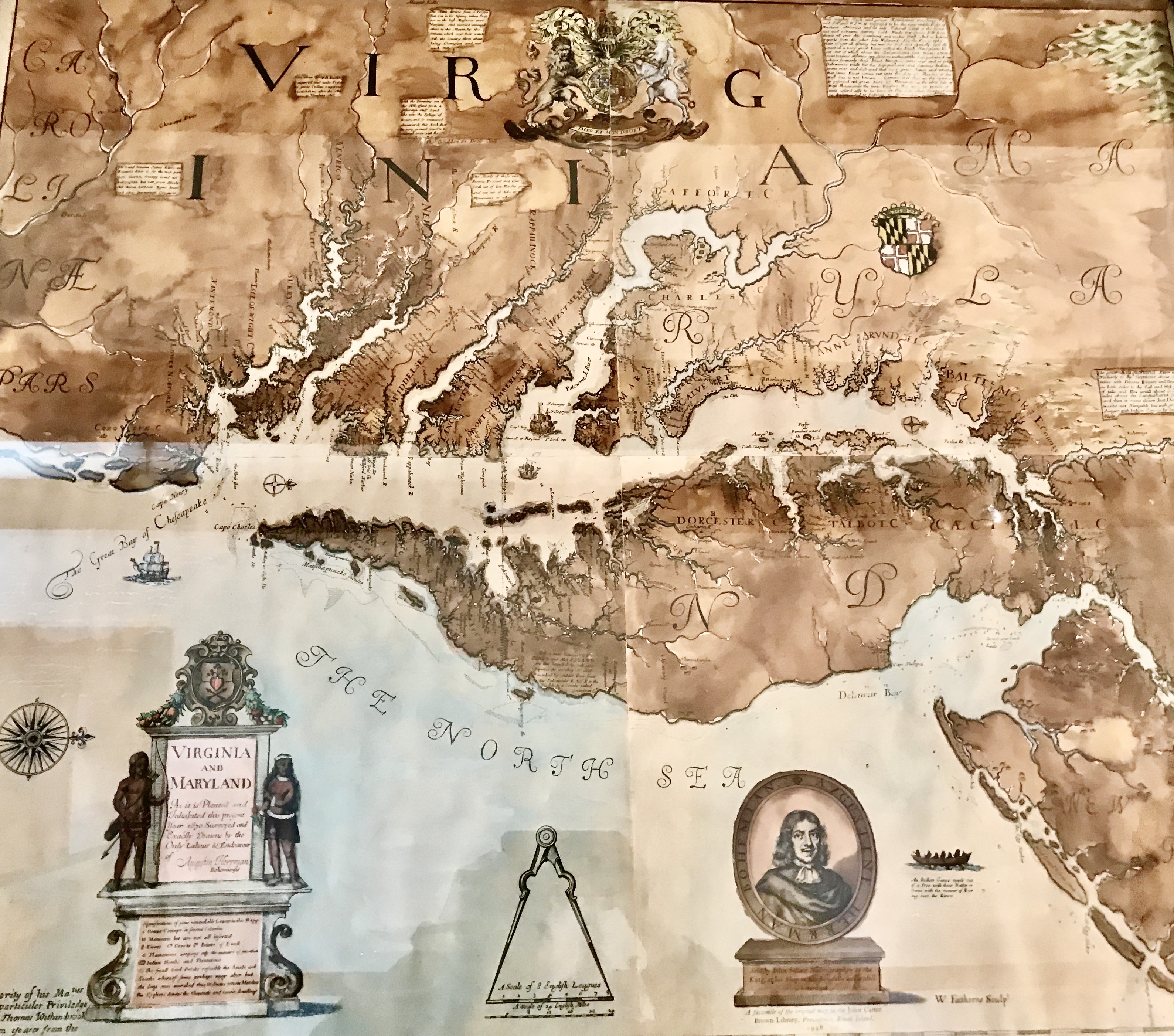
The complex interconnections are further evidenced in the experience of Augustine Herrman, a merchant born in Bohemia (now Czech Republic) who moved to Saxony (Germany), then the Netherlands, before coming to New Netherlands in 1644 as an agent for an Amsterdam merchant firm. As such, he traded with New Netherlands and New Sweden, then expanded into New England and the Chesapeake. He married Janetje Varleth of a notable Dutch merchant family and purchased land on the Eastern Shore of Virginia with the husband of his sister-in-law Ann Varleth, German-born Dr. George Hack. Hermann then expanded his networks south into Virginia’s Hampton Roads. He conducted business with the newly resident Dutch merchants John Michael and Simon Overzee, as well as John Custis, the Yeardleys, and Edmond Scarborough. Herrman also obtained land in St. Mary’s County, Maryland. As a skilled cartographer, successful merchant, and trusted negotiator, Herrman was asked to help resolve boundary disputes between the colonies. While Herrman may not have been able to satisfy all the claimants, he put his skills to creating one of best maps of the Chesapeake area of that time. [11]
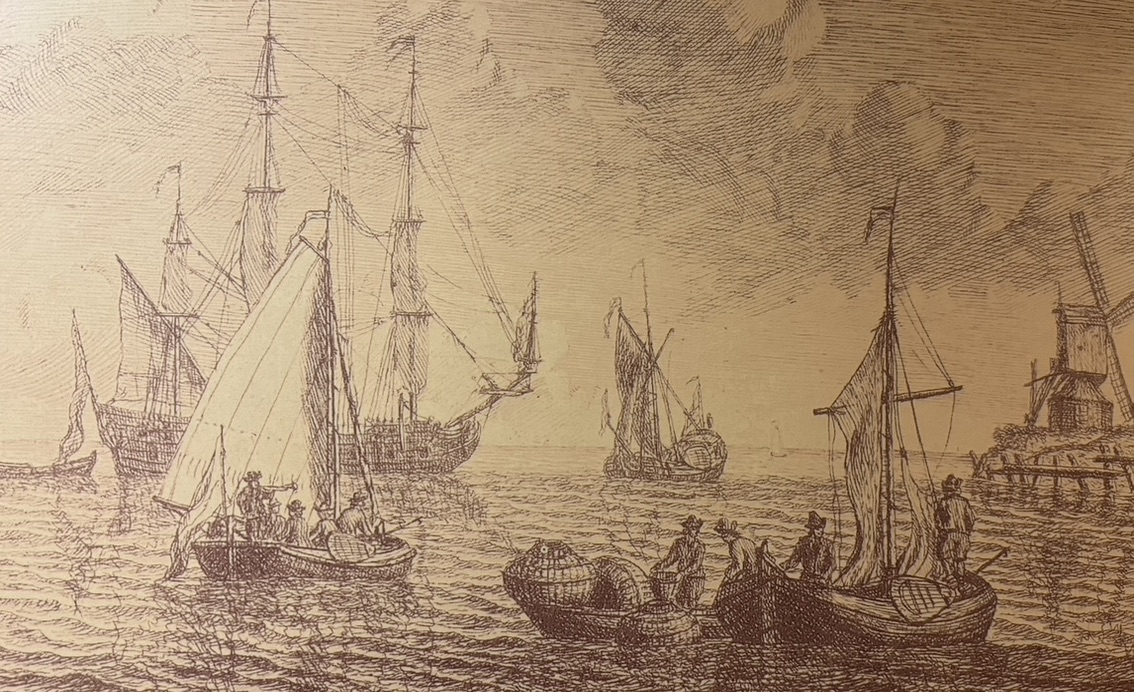 However, not all were pleased with the profitable, free-flowing Dutch trade, especially in England, as the purpose of the colonies was to enrich the motherland. In an attempt to coerce and punish those colonies who remained loyal to the royalist cause, the Commonwealth Parliament in 1650 prohibited trade with the “notorious robbers and traitors ” in Antigua, Barbados, Bermuda, and Virginia and prohibited them from “any manner of commerce or traffic with any people whatsoever.” In addition, they declared that no foreign ships were allowed to trade with the English colonies without a permit from Parliament, a requirement that Parliament then turned into law in 1651 as the first of the Navigational Acts. Virginia’s Gov. Berkeley complained,
However, not all were pleased with the profitable, free-flowing Dutch trade, especially in England, as the purpose of the colonies was to enrich the motherland. In an attempt to coerce and punish those colonies who remained loyal to the royalist cause, the Commonwealth Parliament in 1650 prohibited trade with the “notorious robbers and traitors ” in Antigua, Barbados, Bermuda, and Virginia and prohibited them from “any manner of commerce or traffic with any people whatsoever.” In addition, they declared that no foreign ships were allowed to trade with the English colonies without a permit from Parliament, a requirement that Parliament then turned into law in 1651 as the first of the Navigational Acts. Virginia’s Gov. Berkeley complained,
“The Indians, God be blessed, round about us are subdued, we can only feare the Londoners, who would faine bring us to the same poverty, wherein the Dutch found and relieved us. [The Londoners] would take away the liberty of our consciences, and tongues, and our right of giving and selling our goods to whom we please.” [12]
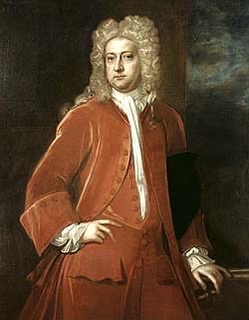
Gov. Berkeley was dismissed; Virginia had to submit to the rule of Parliament; and the Anglo-Dutch trade suffered. Unlicensed Dutch vessels were captured in Virginia waters, and with the mounting tensions between the Netherlands and England, the first Anglo-Dutch War erupted on 30 June 1652. There were a series of naval battles as these two maritime powers fought for dominance over fishing grounds, trade in the East Indies and North America, and Caribbean possessions. It was a war that most English and Dutch colonists in America did not want, and it made Atlantic trade more risky. Northampton on the Eastern Shore even passed measures to protect Dutch traders. However, at the end of the war in 1654, enforcement of navigational restrictions was lax, especially in the outlying areas of the Eastern Shore and Lower Norfolk. The Dutch and Virginians became skilled at circumventing the laws. [13]
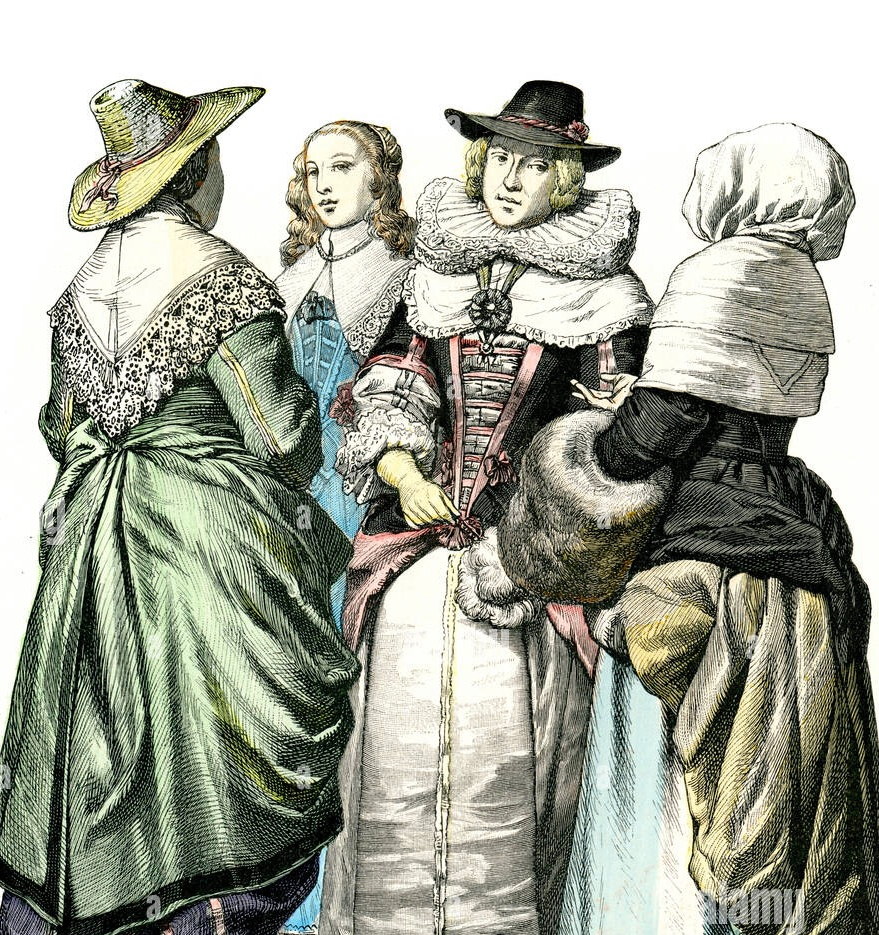 It was during this era that the daughters of Sarah and Adam Thorowgood were starting to come of age and be eligible for suitable marriages. In his will, Adam had given Sarah “guardianship of all of my children, until my daughters come to the age of sixteen years, and my son Adam to the age of one and twenty.” By 1649, Ann, the oldest, had married Job Chandler, an English immigrant who had lived not far from Francis Yeardley on the Eastern Shore and then apparently followed him to Lower Norfolk after Francis married Ann’s mother. Chandler purchased 240 acres there adjoining the Yeardleys. Although Chandler did not have Dutch ties himself, he quickly acquired connections. [14]
It was during this era that the daughters of Sarah and Adam Thorowgood were starting to come of age and be eligible for suitable marriages. In his will, Adam had given Sarah “guardianship of all of my children, until my daughters come to the age of sixteen years, and my son Adam to the age of one and twenty.” By 1649, Ann, the oldest, had married Job Chandler, an English immigrant who had lived not far from Francis Yeardley on the Eastern Shore and then apparently followed him to Lower Norfolk after Francis married Ann’s mother. Chandler purchased 240 acres there adjoining the Yeardleys. Although Chandler did not have Dutch ties himself, he quickly acquired connections. [14]
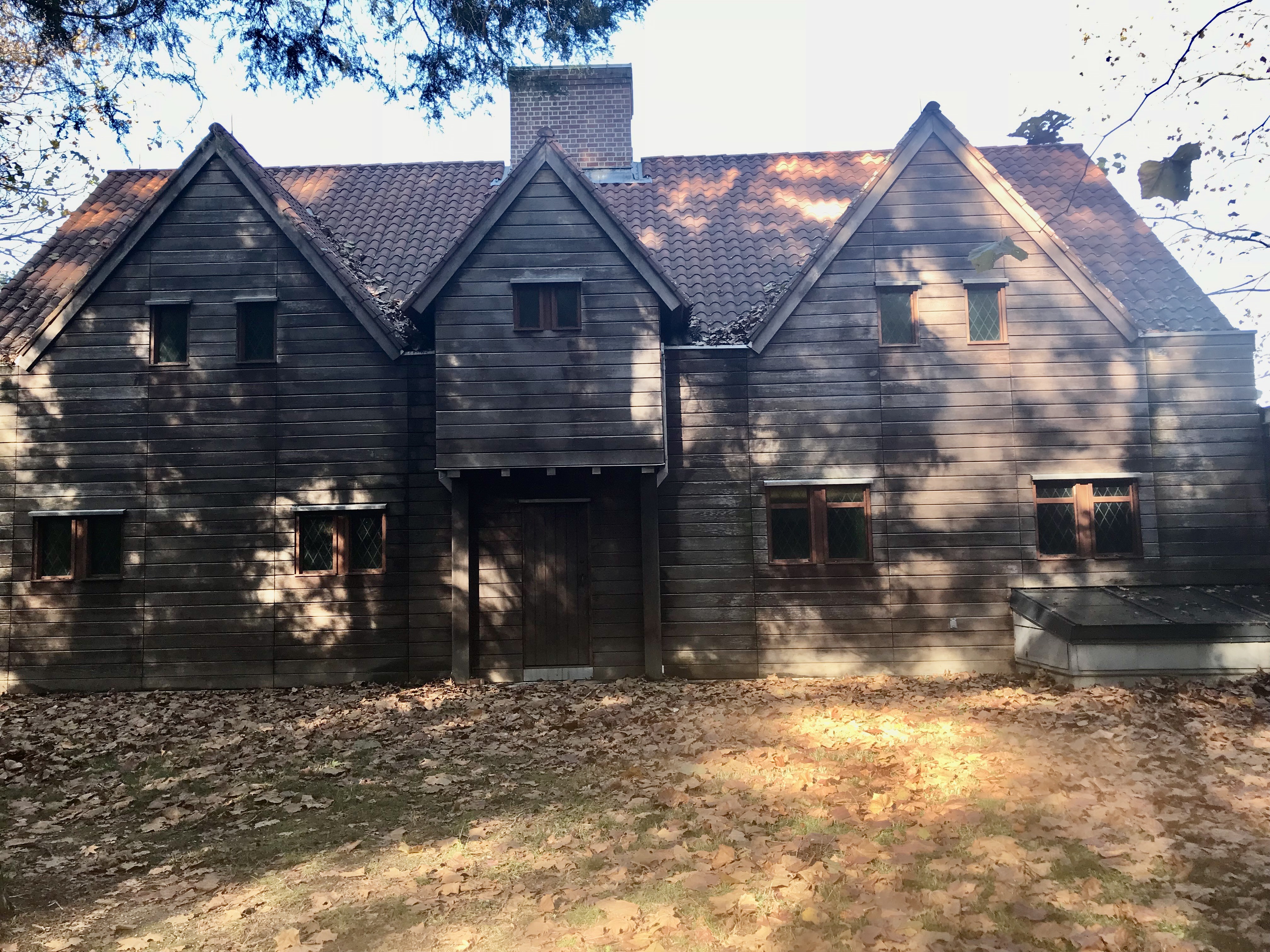
By 1646, the notable Dutch merchant, Simon (Symon) Overzee was trading for tobacco in Lower Norfolk County. In 1650, he and Francis Yeardley jointly purchased a Dutch ship, Het Wittepartt, for transporting tobacco. Job Chandler, who sometimes represented settlers in legal matters, did so for Simon Overzee in 1651. It was to this Simon Overzee that the second Thorowgood daughter, Sarah (II), was wed. Job and his wife Ann and Simon and his wife Sarah (II) soon thereafter moved to adjoining properties on Nangemy Creek in Charles County, Maryland. While in Maryland, Simon Overzee and Augustine Hermann set up a “firme Corpartnership and Common fellowship of trade and traffique for three yeares.” Even after the Overzees moved to the St. John’s house in St . Mary’s County, Maryland, he still continued to be actively involved in commerce in Lower Norfolk County and the Eastern Shore. It was at St. John’s that the tragic death of enslaved Antonio occurred. [15]
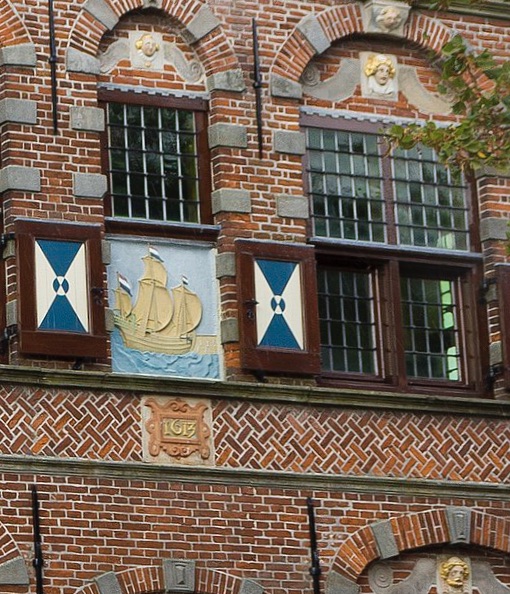
Elizabeth Thorowgood, Adam and Sarah’s third daughter, married John Michael (Machelle, Michielsz), a Dutch merchant from Graft, Holland, who was trading on the Eastern Shore by 1652. Michael was often asked to act as an attorney or representative in the affairs and disputes of other merchants from Amsterdam, New England, and Virginia. Still, in 1663, John Michael’s appointment to the Northampton Court was rescinded for a couple of months until he could provide proof that he was not an alien, but had been naturalized an English citizen. Margaret, a daughter of John and Elizabeth Thorowgood Michael, was the first wife of John Custis III and lived at Hunger’s Creek (Wilsonia) on the Eastern Shore. John Custis IV was one of her sons. [16]
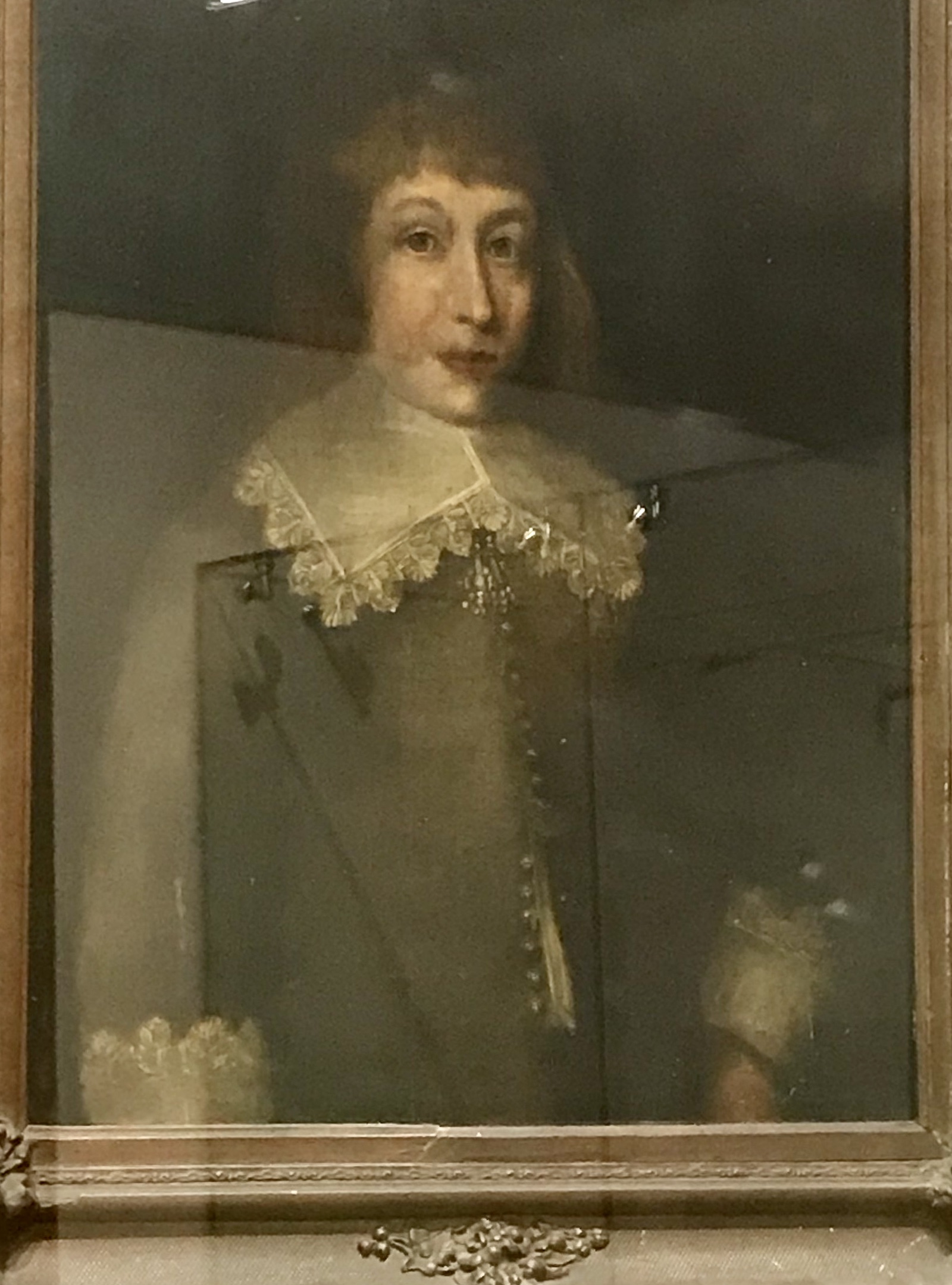
Sarah Thorowgood Gookin Yeardley’s fourth daughter, Mary Gookin, was born from her second marriage. Mary would have only been about 15 years old when her mother died in 1657. However, the Dutch connection was maintained in her marriage as well. Mary married William Moseley II who had come with his parents from Rotterdam when they exchanged jewels for cattle with the Yeardleys in Lower Norfolk County. [17]
Notably, there was one Thorowgood groom, Adam Thorowgood II. He must have been quite young when his father Adam Thorowgood died in 1640, as he had not yet obtained his majority at the death of his mother in 1657. He, therefore, selected his brother-in-law Simon Overzee as his guardian. Nor did Adam II look much outside the family network when it was time to marry. He selected Frances Yeardley, the daughter of Argoll and his first wife. Although connected through marriages, they were not blood relations. Frances would have grown up under the influence of her step-mother, Ann Custis Yeardley. [18]
These marriages and families each have their own complex stories which have only been introduced in this post. Clearly, Dutch connections were part of their heritage. Their stories and that of the evolving colonial experience will be expanded in my subsequent posts.
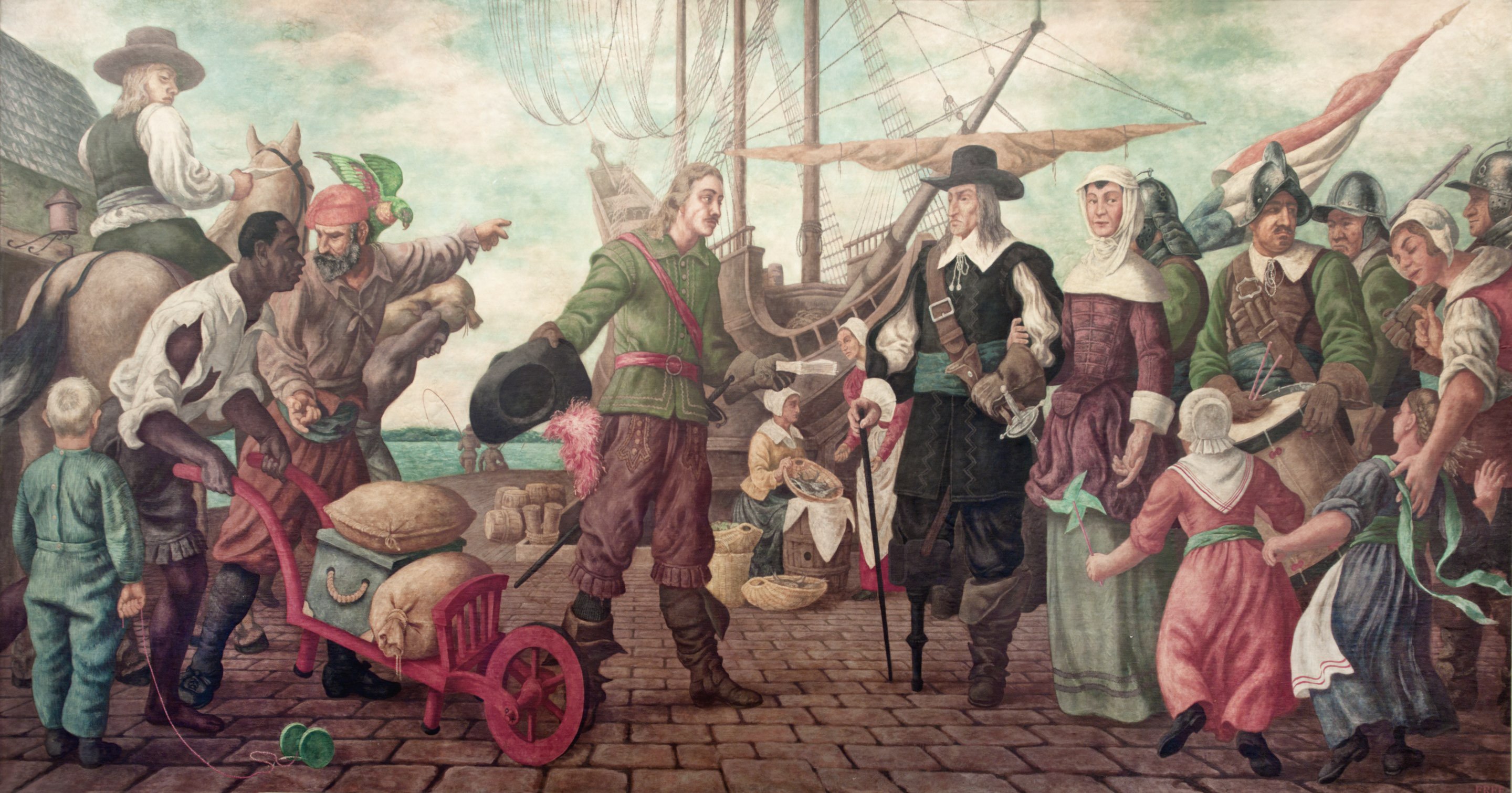 In February 1657, Gov. Peter Stuyvesant and his New Netherlands Council called for a day of thanksgiving. The Anglo-Dutch war had ended, relations with the local tribes had improved, prosperity was increasing, settlement was expanding, and they had conquered New Sweden. Despite England’s attempts to regulate colonial trade, Dutch merchants were still doing a good, if illicit, business with the colonies. The Dutch had held their North American claim for nearly 50 years and anticipated that they were there to stay. [19]
In February 1657, Gov. Peter Stuyvesant and his New Netherlands Council called for a day of thanksgiving. The Anglo-Dutch war had ended, relations with the local tribes had improved, prosperity was increasing, settlement was expanding, and they had conquered New Sweden. Despite England’s attempts to regulate colonial trade, Dutch merchants were still doing a good, if illicit, business with the colonies. The Dutch had held their North American claim for nearly 50 years and anticipated that they were there to stay. [19]
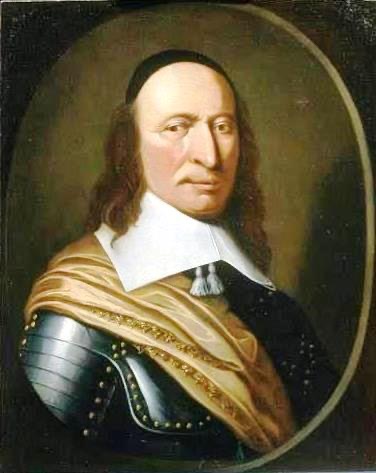
However, in 1660 increased tensions between their motherlands led Gov. Stuyvesant and Gov. Berkeley, who had been reappointed with the Restoration, to create their own “Articles of amitie and commerce” to facilitate and protect trade between their colonies. However, Charles II increased trade restrictions and enforcement, and soon the Anglo-Dutch wars resumed. After an English fleet arrived at New Amsterdam, Peter Stuyvesant was forced to surrender on September 29, 1664. [20]
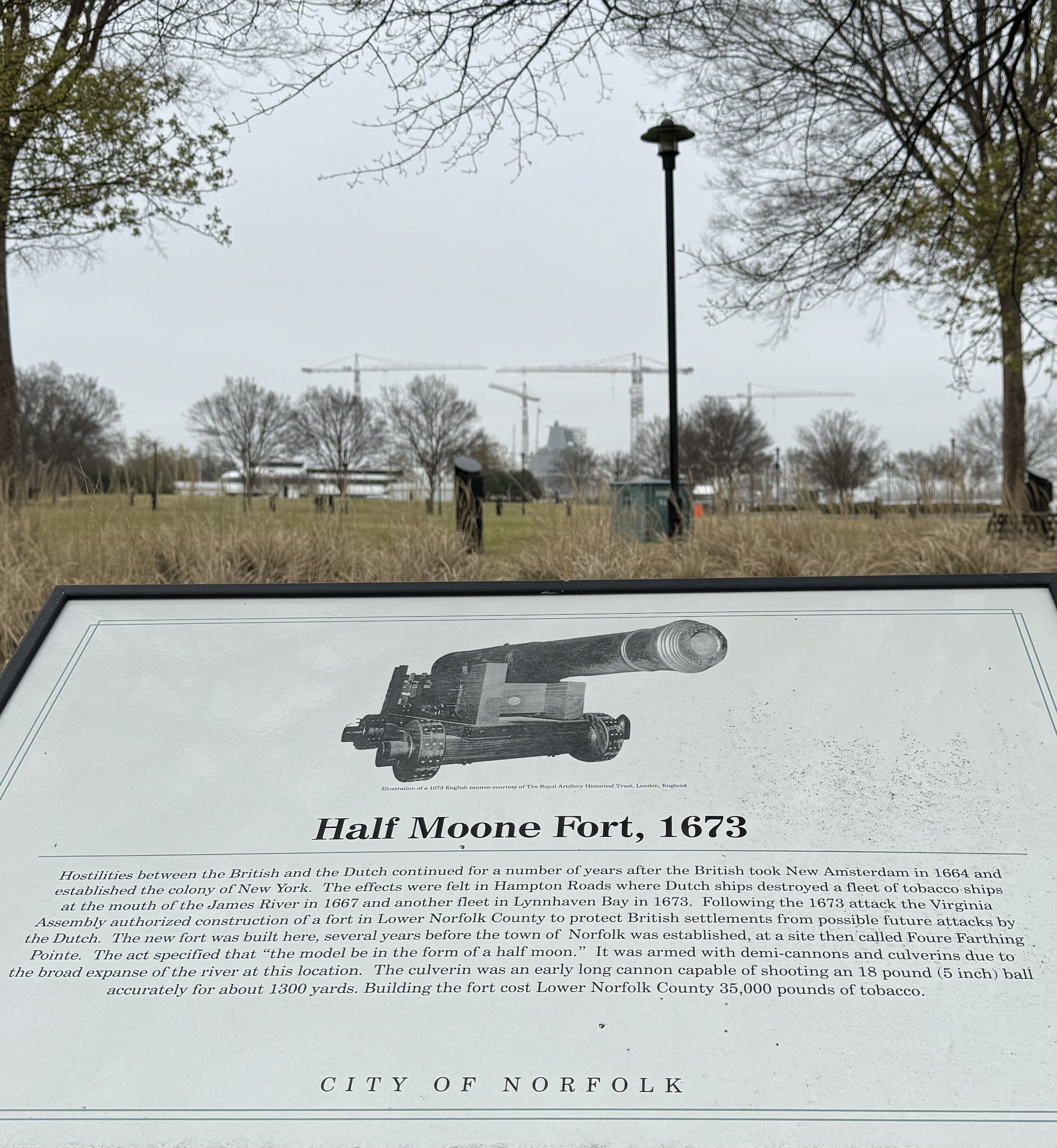 When the first Jamestown settlers built their fort, they installed cannon facing the James River, expecting to fight the Spanish. However, the Spanish never attacked. Despite years of friendship and mutually beneficial trade, it was the Dutch who ended up attacking Virginia. Dutch ships destroyed a fleet of Virginia tobacco ships at the mouth of the James River in 1667, and attacked ships in the Lynhaven Bay in Lower Norfolk County in 1673. In response, Virginia built the Half Moon Fort on the Elizabeth River (where Norfolk now stands) to protect themselves against further attacks. By then, England had aggressively captured New Netherlands, broken Dutch sea dominance, and established control over the North American eastern seaboard. Colonial resentment over England’s trade restrictions, however, continued to simmer until the Revolution a century later. [21]
When the first Jamestown settlers built their fort, they installed cannon facing the James River, expecting to fight the Spanish. However, the Spanish never attacked. Despite years of friendship and mutually beneficial trade, it was the Dutch who ended up attacking Virginia. Dutch ships destroyed a fleet of Virginia tobacco ships at the mouth of the James River in 1667, and attacked ships in the Lynhaven Bay in Lower Norfolk County in 1673. In response, Virginia built the Half Moon Fort on the Elizabeth River (where Norfolk now stands) to protect themselves against further attacks. By then, England had aggressively captured New Netherlands, broken Dutch sea dominance, and established control over the North American eastern seaboard. Colonial resentment over England’s trade restrictions, however, continued to simmer until the Revolution a century later. [21]
Special Thanks to Jenean Hall, Eastern Shore historian, for helping me locate and understand the Eastern Shore connections.
Footnotes:
[1] Jacobs, Jaap, The Colony of New Netherland: A Dutch Settlement in Seventeenth-Century America (Ithaca, New York: Cornell University, 2009), 21-22. “Henry Hudson,” accessed online on 4/3/2024 from Wikipedia at en.wikipedia.org/ wiki/Henry_ Hudson.
[2] Jacobs, 30-31. Romney, Susanah Shaw, New Netherland Connections: Intimate Networks and Atlantic Ties in Seventeenth-Century America (Chapel Hill: University of North Carolina Press, 2014), 13.
[3] Waldron, Richard, “New Sweden: An Interpretation,” in Revisiting New Netherland: Perspectives on Early Dutch America, ed. Joyce D. Goodfriend (Leiden: Brill, 2005), 73-75. Covart, Elizabeth, “New Sweden: A Brief History,” Penn State University Libraries (2004) accessed online on 3/15/2024 at Unearthing Past Student Research.
[4] Lynch, James B., Jr., The Custis Chronicles: The Years of Migration (Camden, Maine: Picton Press, 1992), 159-160.
[5] Parr, Charles McKew, The Voyages of David DeVries (New York: Thomas Y. Crowell Co., 1969), 233; 236-238, 242-250. Lounsbury, Carl R., ” Golden Quarter” in The Material World of Eyre Hall: Four Centuries of Chesapeake History, ed. Carl R. Lounsbury (Baltimore: Maryland Center for History and Culture, 2021), 36. McCartney, Martha W. Jamestown People to 1800 (Baltimore: Genealogical Publishing Company, 2012), 175-176. See John Gookin, Sarah Thorowgood, the Nansemond Tribe, and Virginia Puritans
[6] Truxes, Thomas M., The Overseas Trade of British America (New Haven: Yale University Press, 2021), 95-97. Lounsbury, 36-37. Jacobs, 142. Waldron, 104-105. Pagan, John R., “Dutch Maritime and Commercial Activity in Mid-Seventeenth-Century Virginia,” The Virginia Magazine of History and Biography, 90:4 (October 1982), 488-491.
[7] Lynch, 137-169. Lounsbury, 37. McCartney, 131-133, 462-463. Leath, Robert A. “Dutch Trade and Its Influence on Seventeenth-Century Chesapeake Furniture, ” accessed online on 3/12/2024 through Chipstone Foundation https://chipstone.org/content.php/24/Copyright. (1993-2016). Hall, Jenean, Another Day: More Stories from the Early Colonial Records of Virginia’s Eastern Shore (Kwe Publishing, 2023), 100. See Unexpected: Ann Custis Yeardley & Sarah Yeardley Part II
[8] “Eyreville” National Register of Historic Places Registration Form (VLR Listed 6/15/2023; NRHP Listed 3/18/2024) Site VDHR #065-5126/44NH0507: Section 7: 27-30; Section 8: 39.
[9] “Virginia Council Journals” Virginia Magazine of History and Biography, 35 (1927), 50-51. Brayton, John A., Transciption of Lower Norfolk County, Virginia Records Record Book “C” 16651-1656 Volume Two (Baltimore: Clearfield Company, 2010), 49-51 (24b). McCartney, 291.
[10] Wilcoxen, Charlotte, Dutch Trade and Ceramics in America in the Seventeenth Century (Albany: Albany Institute of History and Art, 1987), 21. Brayton, 435. See The Material Culture of Sarah Offley Thorowgood Gookin Yeardley
[11] Lounsbury, 38. Koot, Christian J., A Biography of a Map in Motion: Augustine Herrman’s Chesapeake (New York: New York University Press, 2018) 15-18, 25, 39-40. Whitelaw, Ralph T., Virginia’s Eastern Shore: A History of Northampton and Accomack Counties (Richmond, Virginia Historical Society, 1951), 687, 694-696]
[12] Pagan, 494.
[13] Truxes, 95. Pagan, 497. Jones, J.R., The Anglo-Dutch Wars of the Seventeenth Century (London: Longman Group, 1996), 11-12. Hainsworth, Roger and Christine Churches, The Anglo-Dutch Naval Wars 1652-1674 (Gloucestershire, England: Sutton Publishing, 1998), 16-18. Wise, Jennings Cropper, Ye Kingdome of Accawmacke of the Eastern Shore or Virginia in the Seventeenth Century (Richmond, The Bell Book and Stationary Co., 1911), 71. Leath (online).
[14]“The Thorowgood Family of Princess Anne County, Va, ” The Richmond Standard, 4: no. 13 (26 November 1882). Chandler, Joseph Barron, “Chandlers to Virginia 1607-1700, Part II” Tidewater Virginia Families: A Magazine of History and Genealogy, 12:3 (November/December 2003), 187-193. See Fascinating and Formidable Sarah Offley Gooking Yeardley
[15] Jones, Jacqueline, A Dreadful Deceit (New York: Basic Books, 2013), 13-17. Koot, 40. Parramore, Thomas C., Norfolk: The First Four Centuries (Charlottesville: University Press of Virginia, 1994), 37-39.
[16] Koot, 39. Mackey, Howard and Marlene A. Groves, Northhampton County Virginia Record Book Court Cases Vol.8 1637-1664 (Rockport, Maine: Picton Press, 2002), 330, 341, 339. Whitelaw, 107-117. Hall, Jenean, unpublished papers on John Michael, 2023.
[17] McCartney, 291.
[18] McCartney, 403, 463 . Brayton, John A., Transcription of Lower Norfolk County, Virginia Records Wills and Deeds, Book “D,” 1656-1666 Volume One (Memphis: Cain Lithographers, 2007), 108.
[19] Romney 9-12.
[20] Pagan, 497. Jones, J. R., 3-10.
[21] Jones, J.R., 217-224. Pagan, 500-501. Quarstein, John V.,”Hampton Roads Invaded: The Anglo-Dutch Naval Wars” published online by The Mariners’ Museum and Park, Yorktown, Virginia on Oct 15, 2020. Accessed online 9/13/2023 at http://www.marinersmuseum.org.

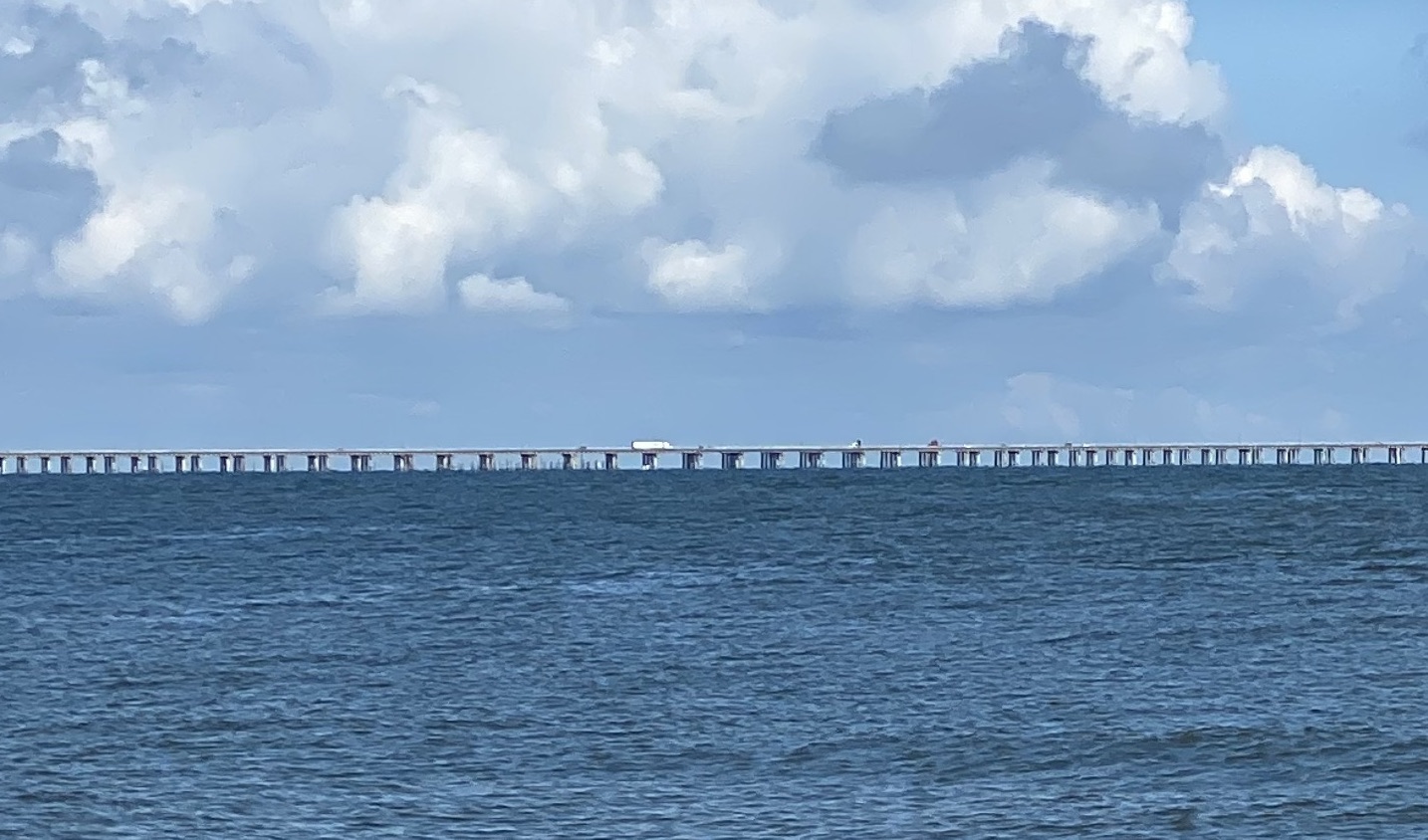
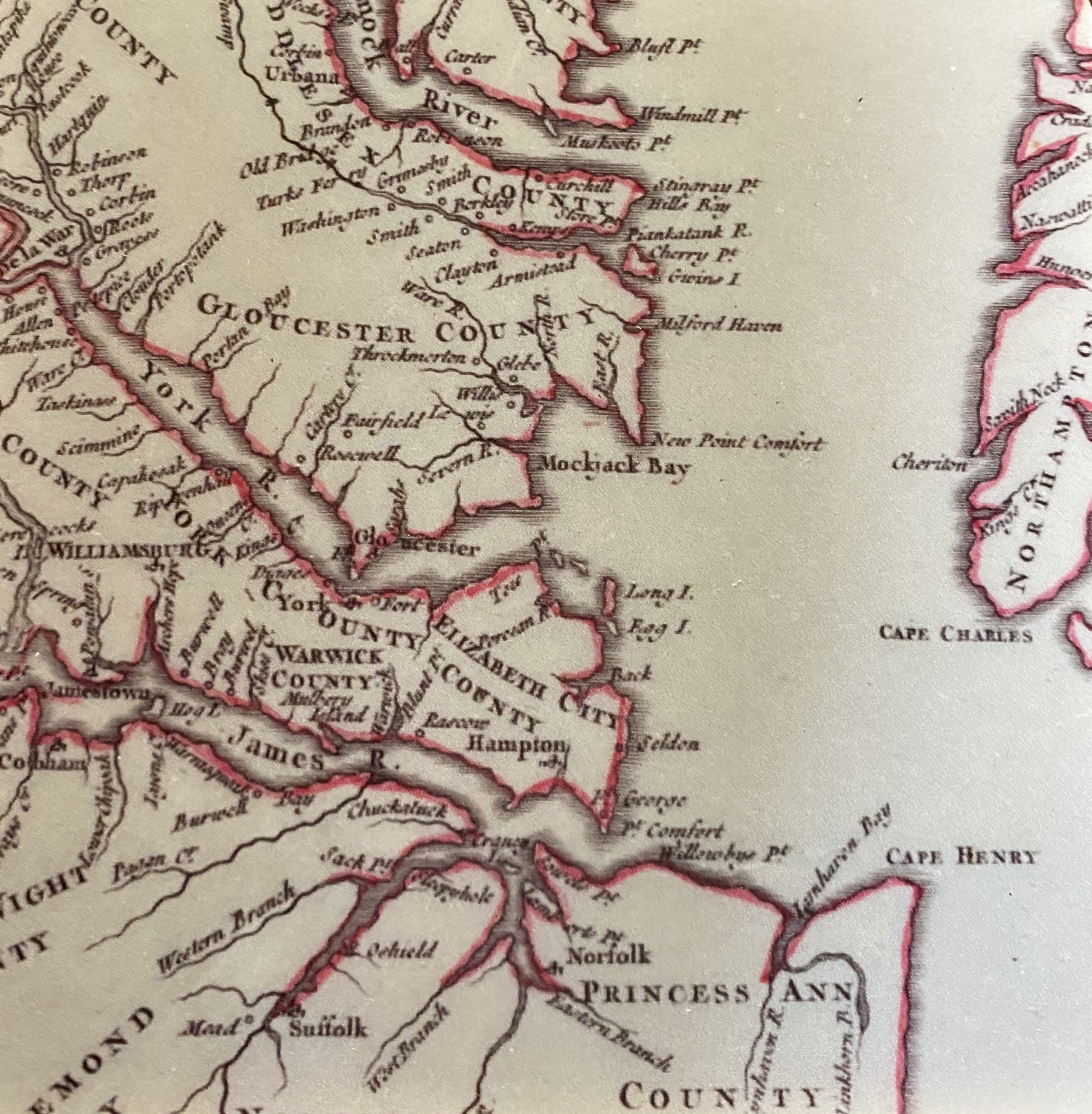 Eastern Shore and Lower Norfolk residents often shared merchant ties and attitudes from their common “outlier” status in the Virginia Colony. As the Thorowgood’s Lower Norfolk lands were close to Cape Henry at the entrance to the Chesapeake Bay, there would have been much shipping passing by, and it was a straight path from Hungars and Nassawadox Creek where the Yeardleys lived to the Thorowgood lands on the Lynnhaven Bay/River. So whether Francis came there for business or was looking for additional land and opportunities, he and several local acquaintances spent the night of June 10, 1647 at the house of the twice widowed Sarah Thorowgood Gookin.
Eastern Shore and Lower Norfolk residents often shared merchant ties and attitudes from their common “outlier” status in the Virginia Colony. As the Thorowgood’s Lower Norfolk lands were close to Cape Henry at the entrance to the Chesapeake Bay, there would have been much shipping passing by, and it was a straight path from Hungars and Nassawadox Creek where the Yeardleys lived to the Thorowgood lands on the Lynnhaven Bay/River. So whether Francis came there for business or was looking for additional land and opportunities, he and several local acquaintances spent the night of June 10, 1647 at the house of the twice widowed Sarah Thorowgood Gookin.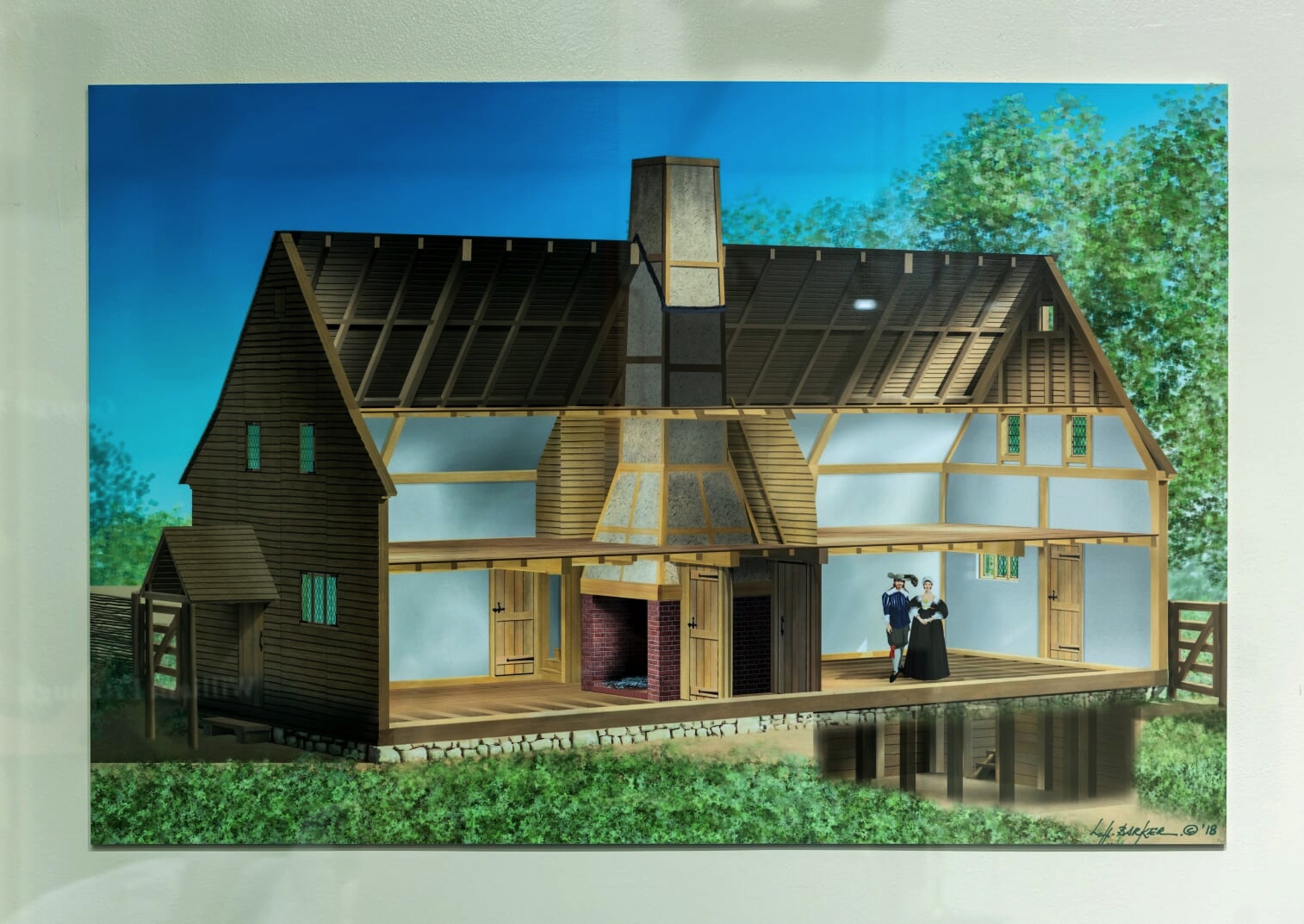
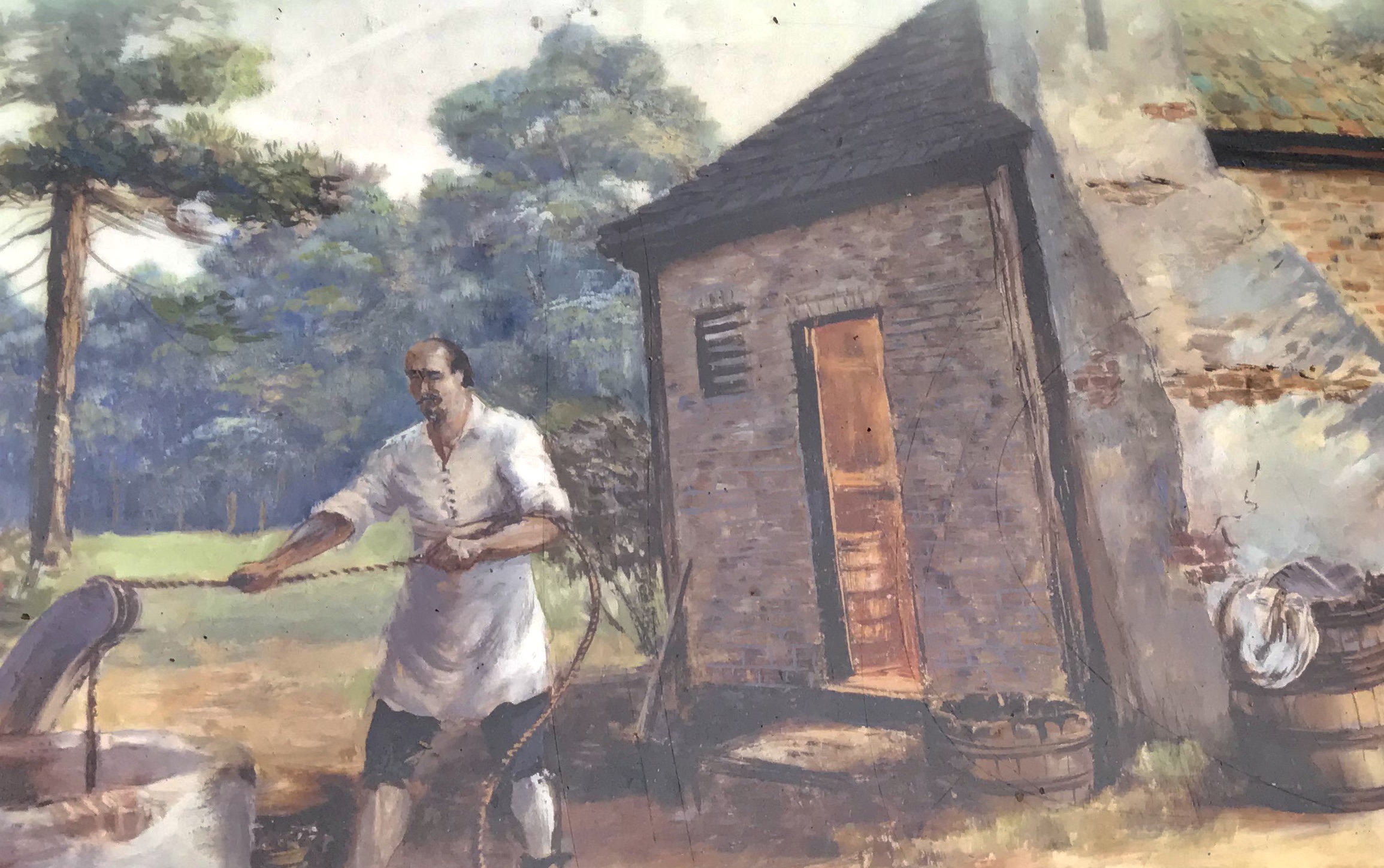
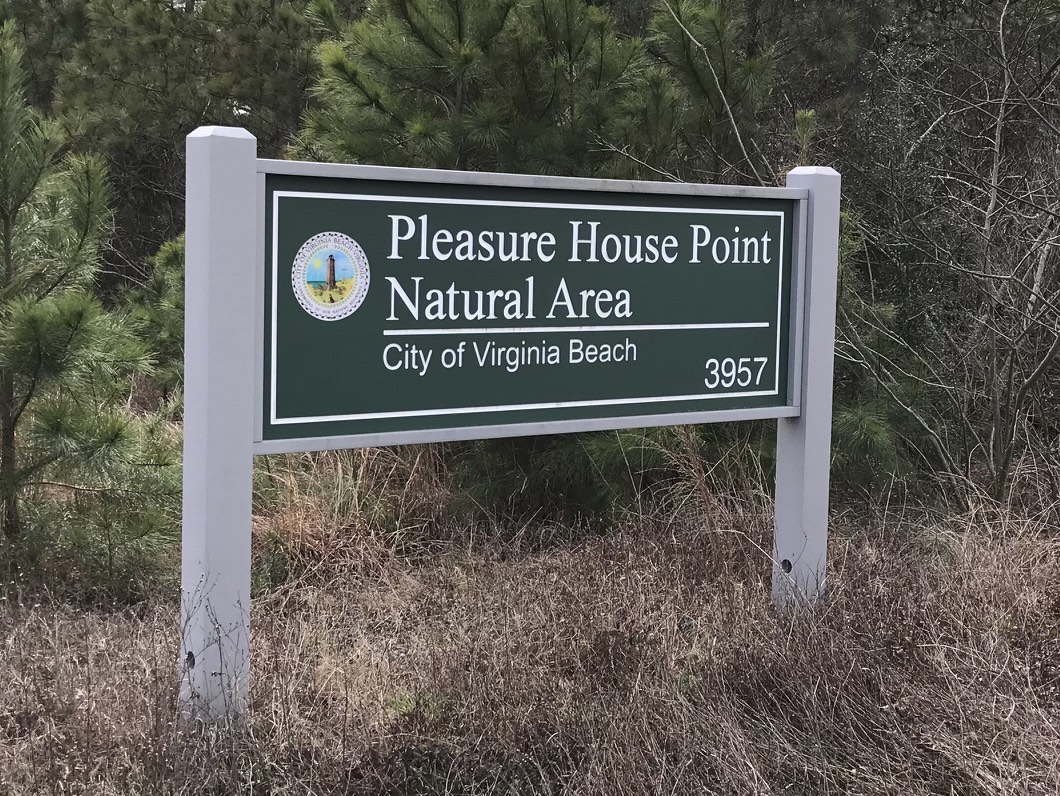

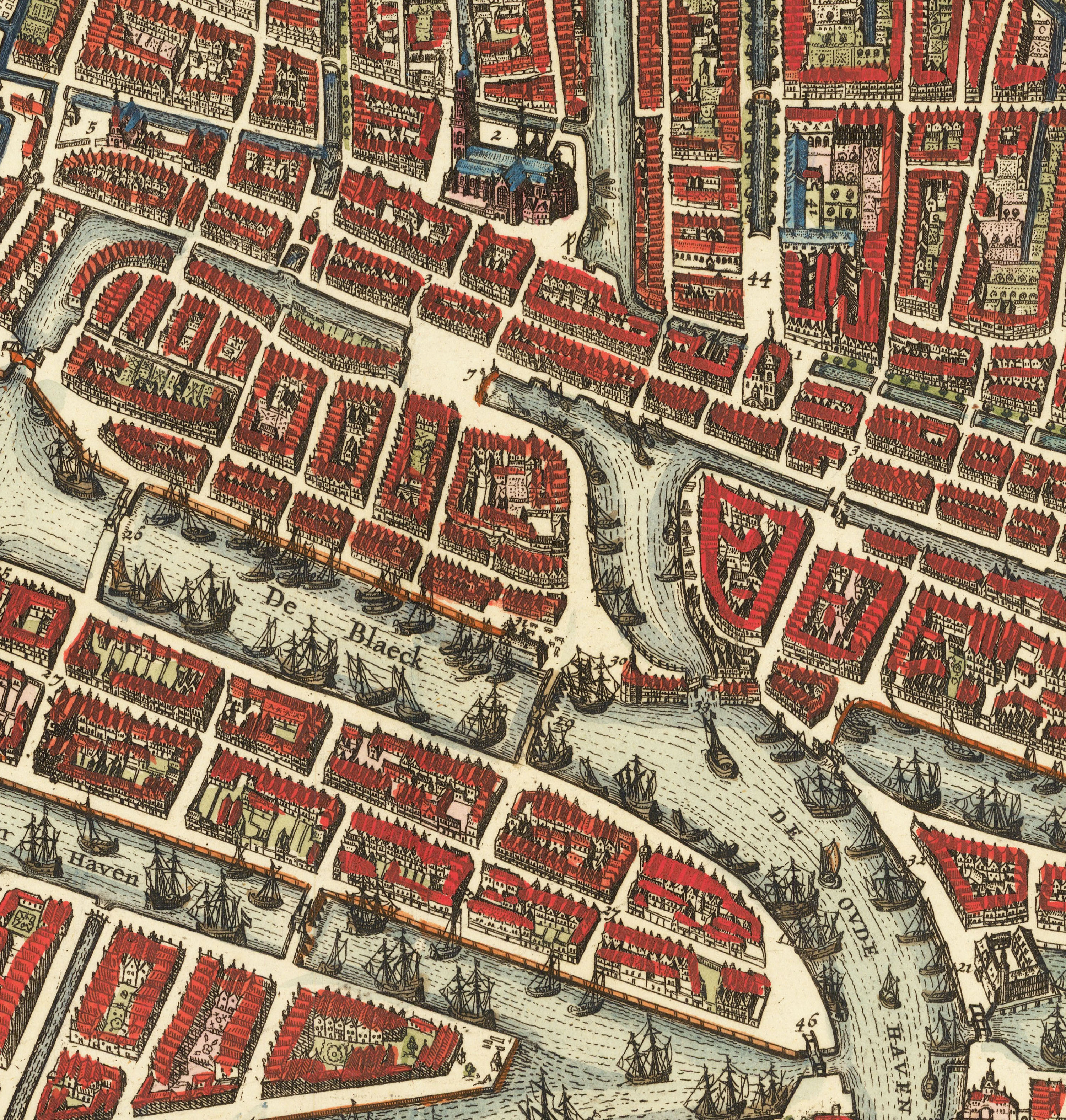
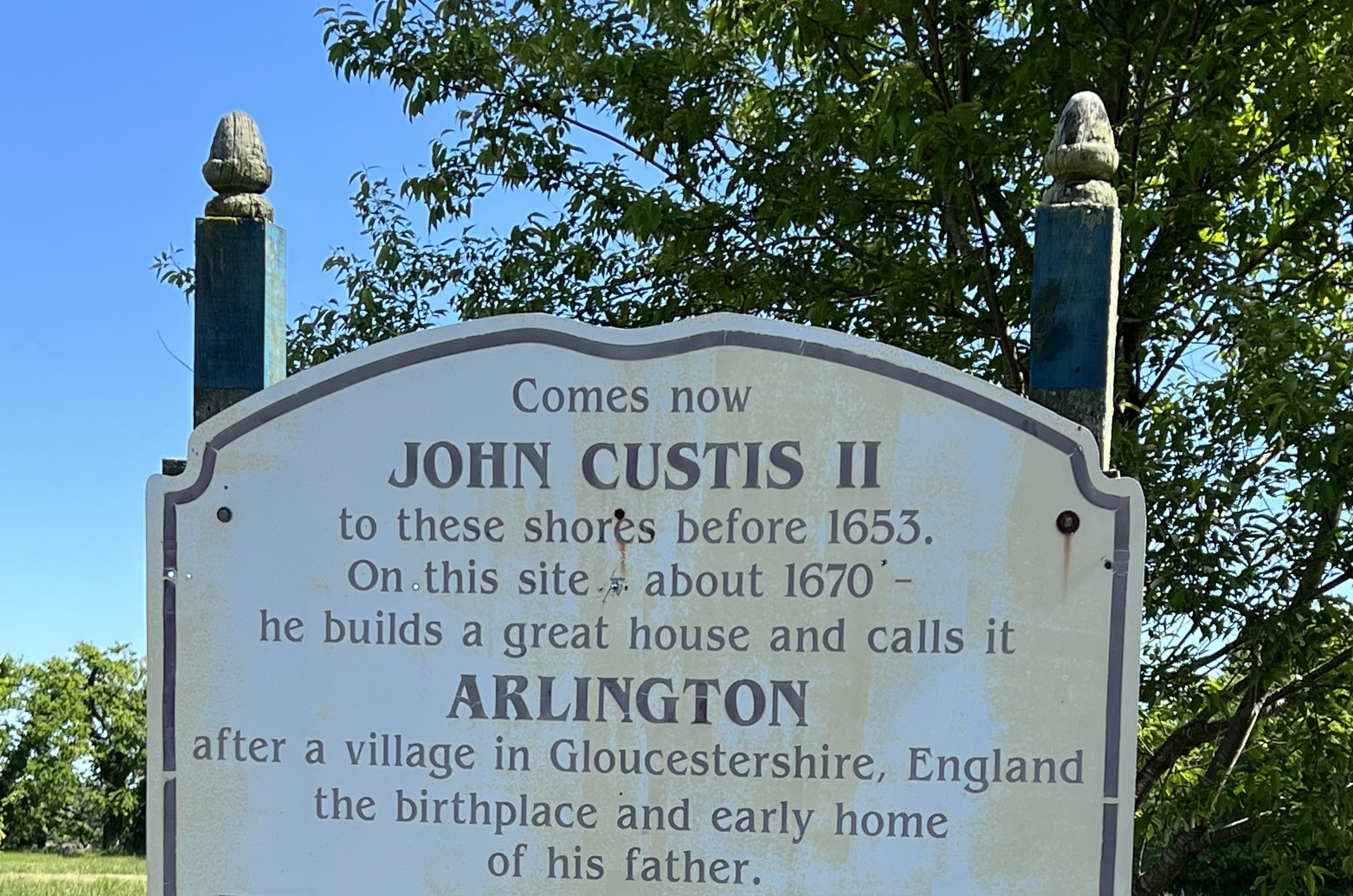 Ann’s acceptance of the marriage proposal brought the Custis family to Virginia. Her uncle, John Custis I, may have accompanied them or arrived shortly thereafter. Although John I conducted business, acquired property, and made periodic visits, he never settled there.
Ann’s acceptance of the marriage proposal brought the Custis family to Virginia. Her uncle, John Custis I, may have accompanied them or arrived shortly thereafter. Although John I conducted business, acquired property, and made periodic visits, he never settled there. 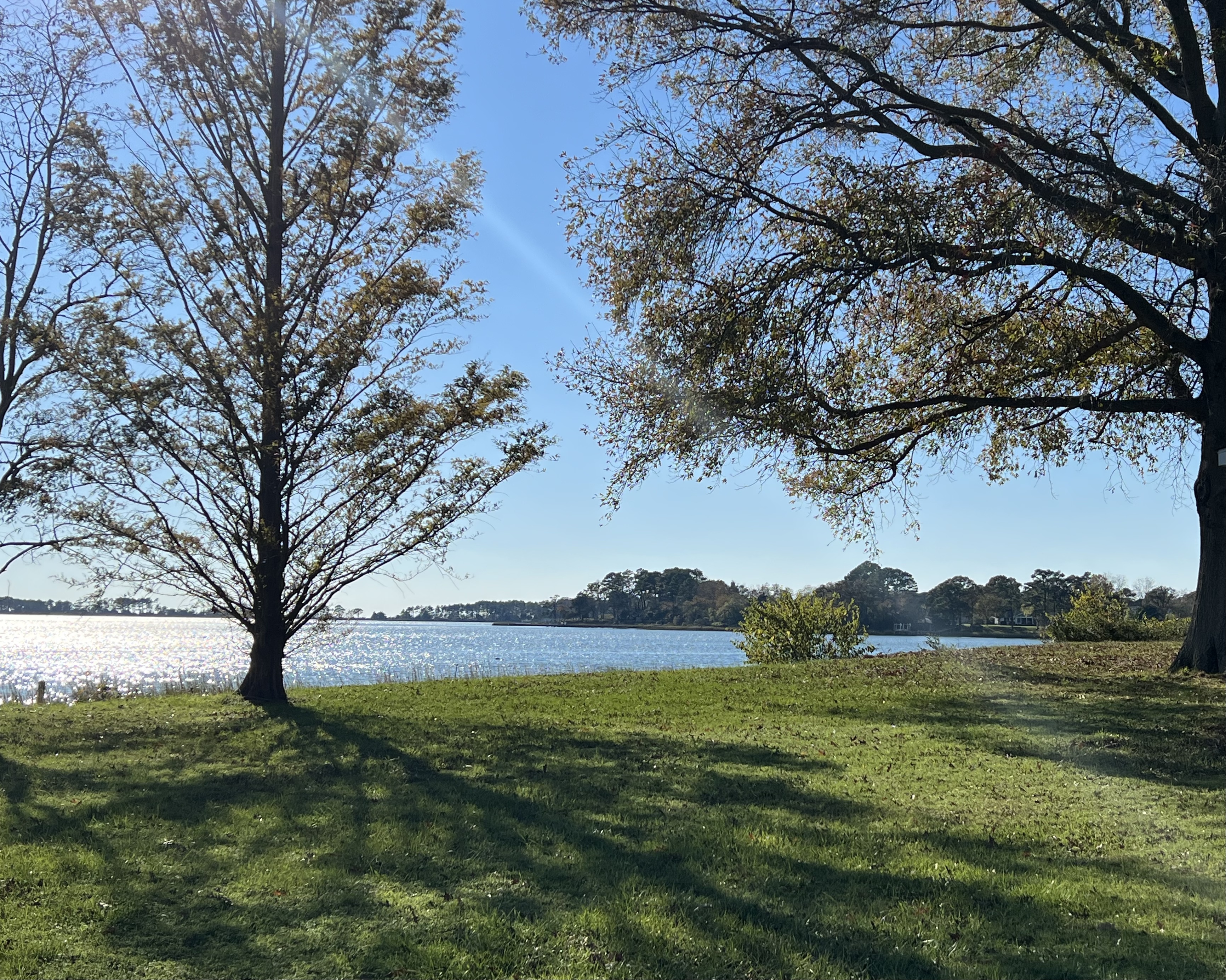
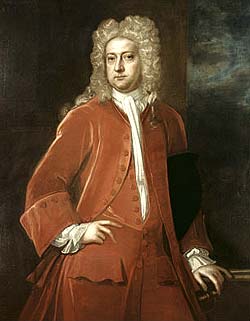
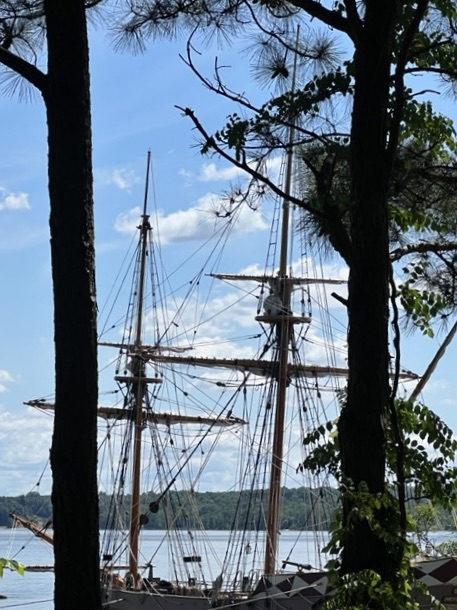 Shortly after the English Civil War began, Richard Ingle, the master of the ship Reformation and an avowed supporter of the parliamentary cause, got into an argument with Francis Yeardley about the King and Parliament while he was docked on the Eastern Shore. Argoll, who was also on board, attempted to calm them. However, Ingle grabbed a poleax and a cutlass and ordered all Virginians off his ship. As a Councillor and the Commander of the Eastern Shore, Argoll responded, “I arrest you in the King’s name.” Ingle replied, “If you had arrested me in the King and Parliaments name I would have obeyed it for so it is now.” He then forced the Virginians, including Francis and Argoll, to leave his ship and sailed to Maryland, boasting of his defiance of Yeardley. However, months later, Argoll forgave Inge “of and from all manner of debts, suits, and controversies.”[11]
Shortly after the English Civil War began, Richard Ingle, the master of the ship Reformation and an avowed supporter of the parliamentary cause, got into an argument with Francis Yeardley about the King and Parliament while he was docked on the Eastern Shore. Argoll, who was also on board, attempted to calm them. However, Ingle grabbed a poleax and a cutlass and ordered all Virginians off his ship. As a Councillor and the Commander of the Eastern Shore, Argoll responded, “I arrest you in the King’s name.” Ingle replied, “If you had arrested me in the King and Parliaments name I would have obeyed it for so it is now.” He then forced the Virginians, including Francis and Argoll, to leave his ship and sailed to Maryland, boasting of his defiance of Yeardley. However, months later, Argoll forgave Inge “of and from all manner of debts, suits, and controversies.”[11]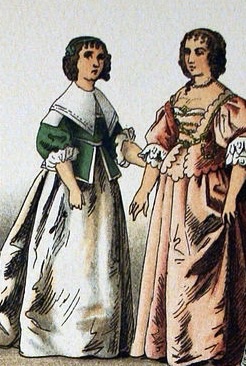
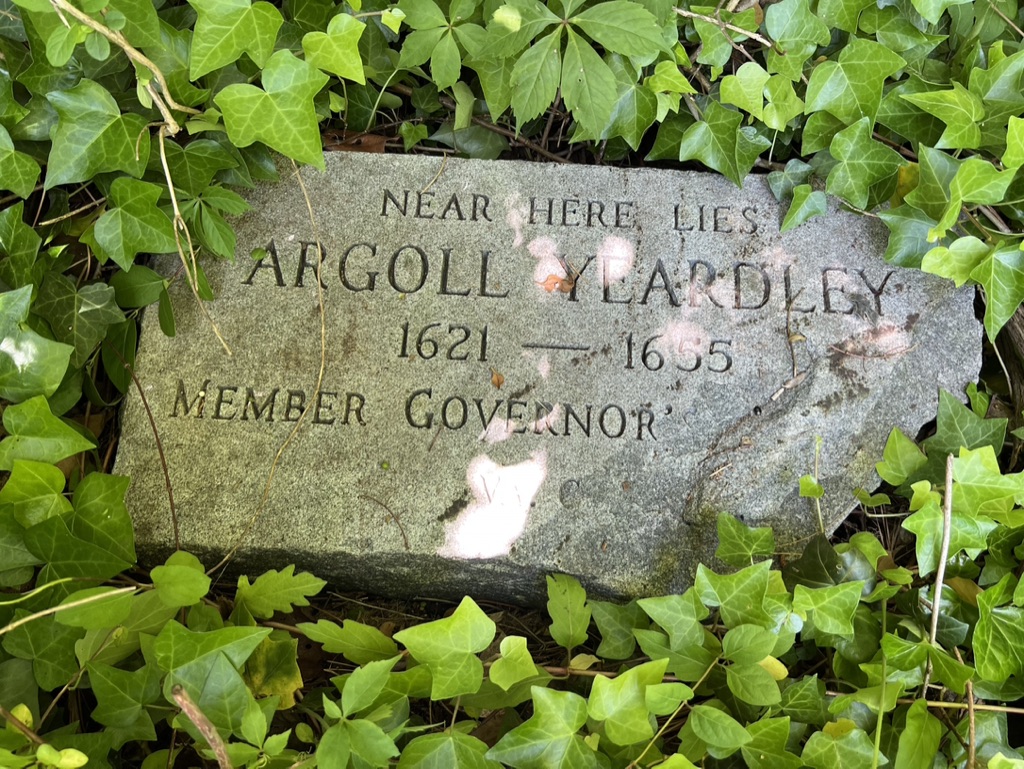 They likewise shared common grief in losing their Yeardley husbands a year apart: Argoll in 1655 and Francis in 1656. We do not know the circumstances of their deaths, but both died unexpectedly without wills. Did Sarah and Ann confide concerns about their husbands’ health or exchange condolences? Sarah died a year after Francis. They had not had any children together. [13]
They likewise shared common grief in losing their Yeardley husbands a year apart: Argoll in 1655 and Francis in 1656. We do not know the circumstances of their deaths, but both died unexpectedly without wills. Did Sarah and Ann confide concerns about their husbands’ health or exchange condolences? Sarah died a year after Francis. They had not had any children together. [13]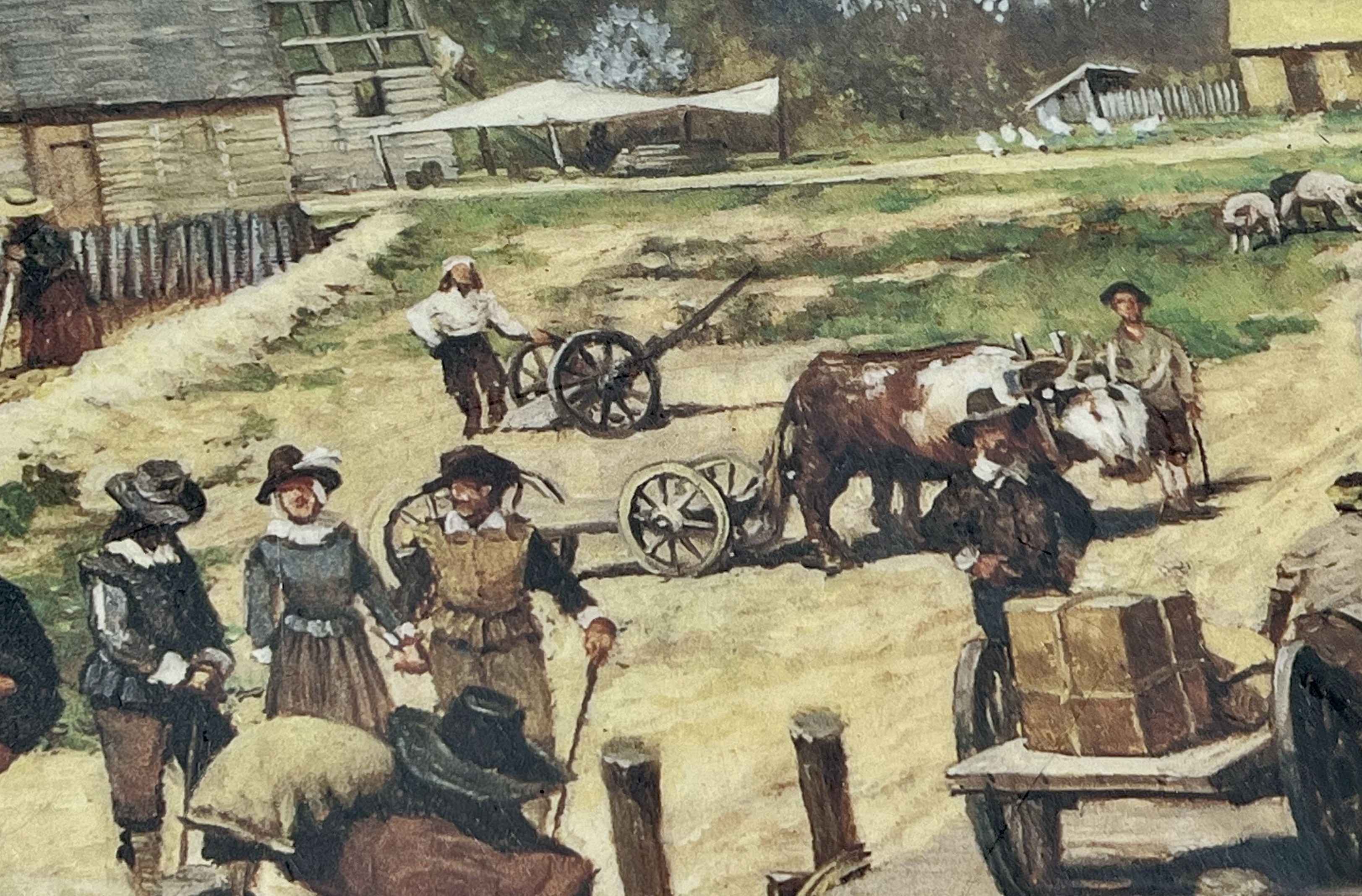 Ann was appointed the executrix of Argoll’s estate when he died intestate. Settling his estate was complex. The inventory and appraisal of the estate on October 29, 1655 revealed that Argoll had 10 ewes, 16 cows, and 3 horses; 2 indentured servants with 3 months of service left in their contracts; and 2 Negro men, 2 Negro women (their wives), and 4 Negro children, only one of which was to be freed at adulthood (see prior post), providing further evidence that their Africans were enslaved, not indentured. The Yeardleys had lived comfortably with cupboards, beds, linens, a large Dutch looking glass (mirror), books, cookware, pewter, silver plate, a small boat, and more. Argoll’s estate was appraised at the equivalent of 41,269 pounds of tobacco which should have been adequate to pay off the usual debts.[14]
Ann was appointed the executrix of Argoll’s estate when he died intestate. Settling his estate was complex. The inventory and appraisal of the estate on October 29, 1655 revealed that Argoll had 10 ewes, 16 cows, and 3 horses; 2 indentured servants with 3 months of service left in their contracts; and 2 Negro men, 2 Negro women (their wives), and 4 Negro children, only one of which was to be freed at adulthood (see prior post), providing further evidence that their Africans were enslaved, not indentured. The Yeardleys had lived comfortably with cupboards, beds, linens, a large Dutch looking glass (mirror), books, cookware, pewter, silver plate, a small boat, and more. Argoll’s estate was appraised at the equivalent of 41,269 pounds of tobacco which should have been adequate to pay off the usual debts.[14]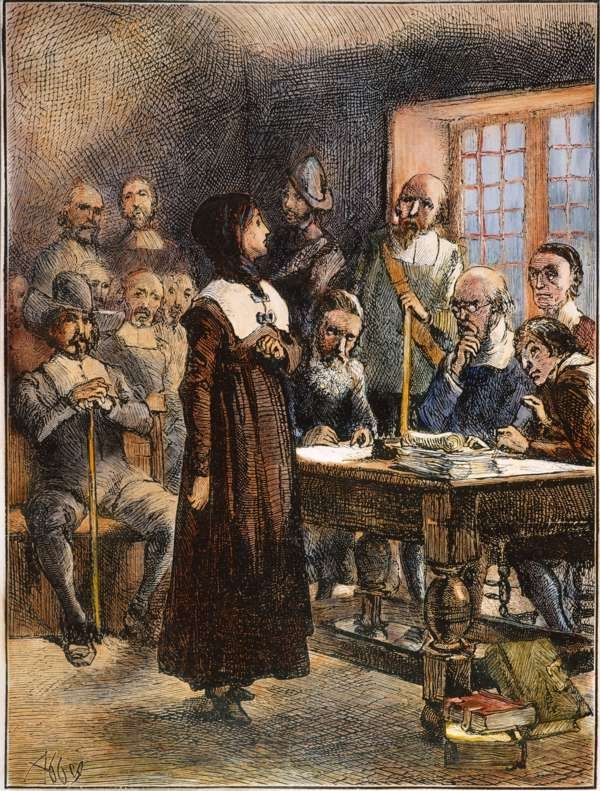 However, growers of tobacco and trade merchants lived in a world of credit, and their cash flow was often in flux. At the moment of Argoll’s unexpected death, he had extended his credit beyond his means, for Ann reported to the court in November 1655 that she had paid out “a considerable sum of tobacco beyond assets to the creditors of her dead husband.” Ann Yeardley was ordered to find what she could to pay debts, but was granted a Quietus Est or termination of remaining debts by the court. Fortunately, real estate was not included in the assessment, so Argoll II still inherited his father’s property, and Ann received her widow’s dower interest which she released to Argol II when he agreed to deed land to her sons (his stepbrothers). [ 15]
However, growers of tobacco and trade merchants lived in a world of credit, and their cash flow was often in flux. At the moment of Argoll’s unexpected death, he had extended his credit beyond his means, for Ann reported to the court in November 1655 that she had paid out “a considerable sum of tobacco beyond assets to the creditors of her dead husband.” Ann Yeardley was ordered to find what she could to pay debts, but was granted a Quietus Est or termination of remaining debts by the court. Fortunately, real estate was not included in the assessment, so Argoll II still inherited his father’s property, and Ann received her widow’s dower interest which she released to Argol II when he agreed to deed land to her sons (his stepbrothers). [ 15]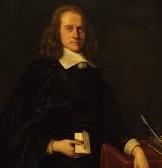
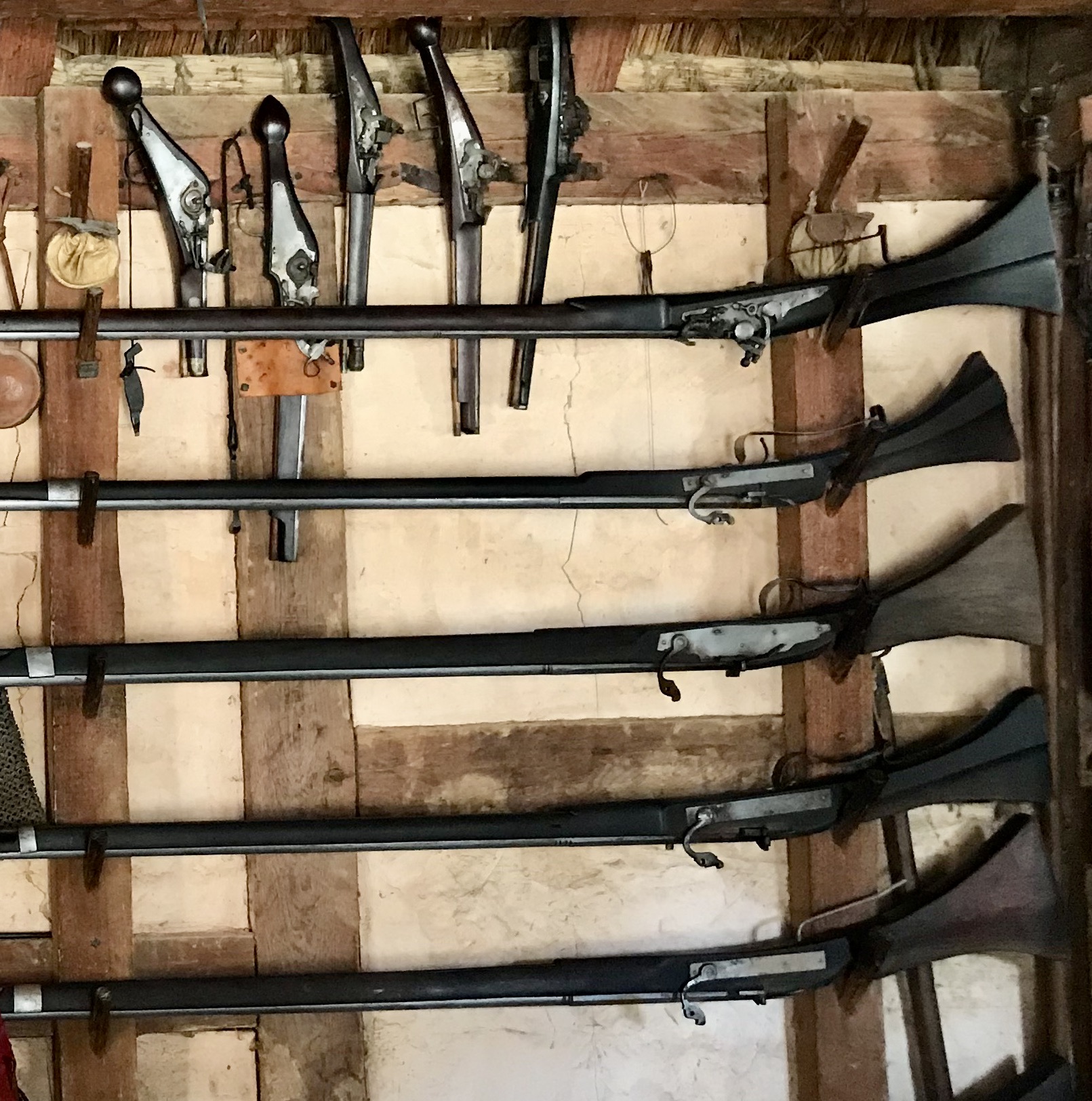 According to one conspirator’s confession, the plan also included hiring a ship of one of Edmund’s brothers (likely Robert who was a shipmaster) to smuggle additional arms into England. Edmund claimed that the arms he had in the house were to send to Virginia, but the Commonwealth Assembly had not requested them. Edmund was sent to prison with Norwood. After Captain Norwood had innocently stayed at the Yeardley’s home in 1650, he had gone to Jamestown and may have initiated the plot in conjunction with Governor Berkeley. Assets of 1,000 pounds from Governor Berkeley were subsequently funneled to Edmund Custis.[17]
According to one conspirator’s confession, the plan also included hiring a ship of one of Edmund’s brothers (likely Robert who was a shipmaster) to smuggle additional arms into England. Edmund claimed that the arms he had in the house were to send to Virginia, but the Commonwealth Assembly had not requested them. Edmund was sent to prison with Norwood. After Captain Norwood had innocently stayed at the Yeardley’s home in 1650, he had gone to Jamestown and may have initiated the plot in conjunction with Governor Berkeley. Assets of 1,000 pounds from Governor Berkeley were subsequently funneled to Edmund Custis.[17]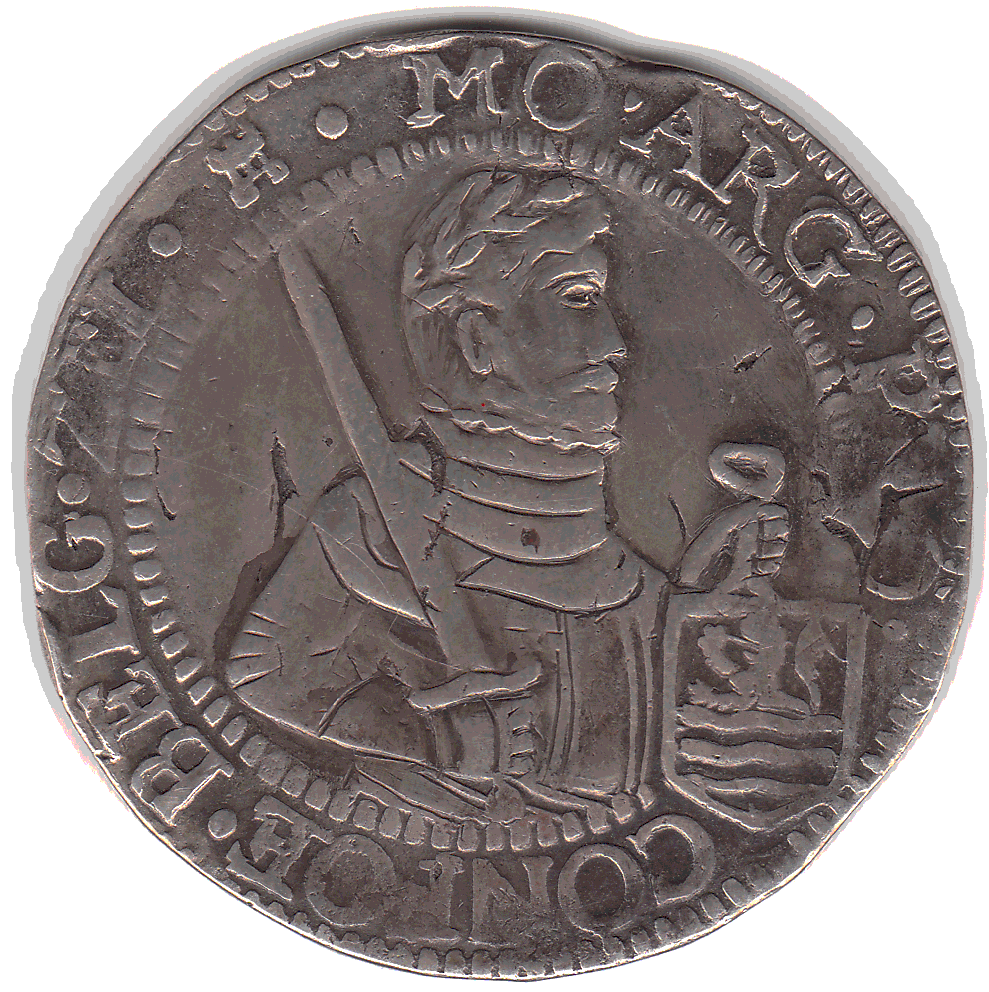
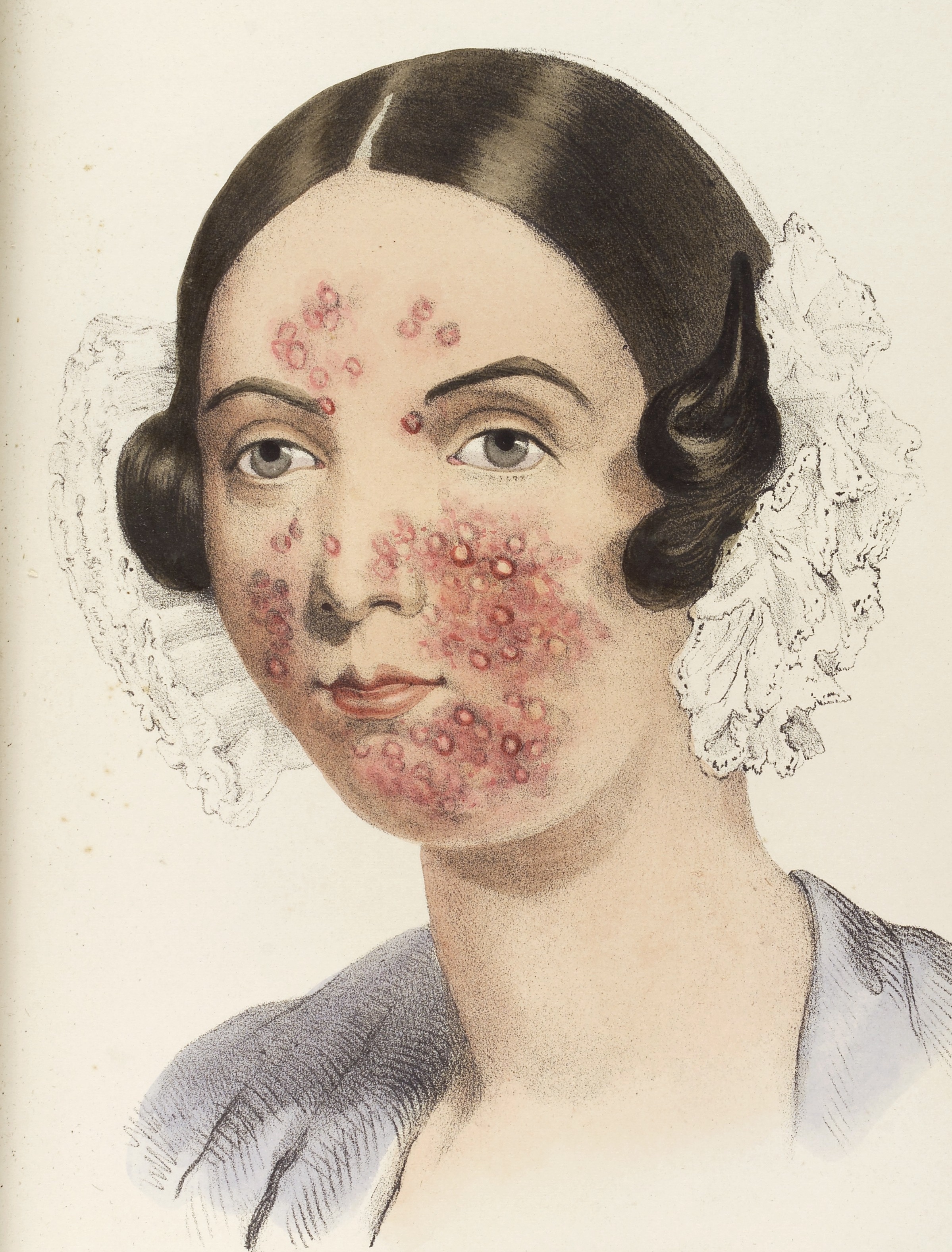
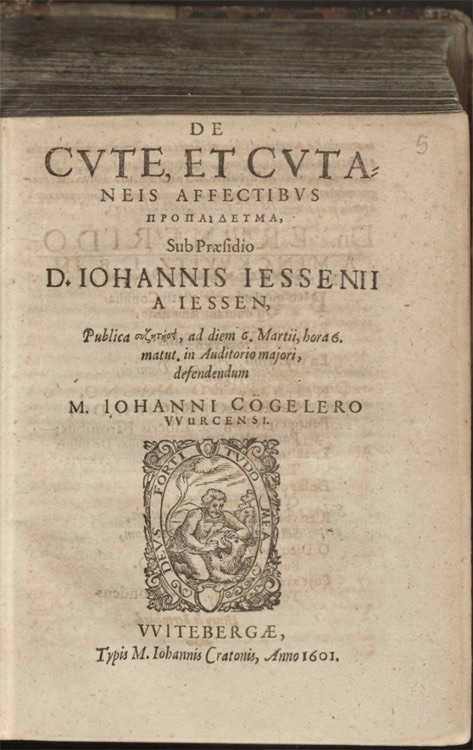 Sadly, it seems Ann was not cured at the time, but many questions remain unanswered. Was this a case of exorbitant doctor fees or lofty claims of a cure that could not be provided? A gesture of love or a demand for vanity? What sort of sores were these? It was likely more than a case of usual acne or hormonal imbalance, as Ann had borne children before. Perhaps, acne had worsened with streptococcus or staphylococcus bacteria. The sores did not sound like pox marks which would not have had seasonal variation.
Sadly, it seems Ann was not cured at the time, but many questions remain unanswered. Was this a case of exorbitant doctor fees or lofty claims of a cure that could not be provided? A gesture of love or a demand for vanity? What sort of sores were these? It was likely more than a case of usual acne or hormonal imbalance, as Ann had borne children before. Perhaps, acne had worsened with streptococcus or staphylococcus bacteria. The sores did not sound like pox marks which would not have had seasonal variation.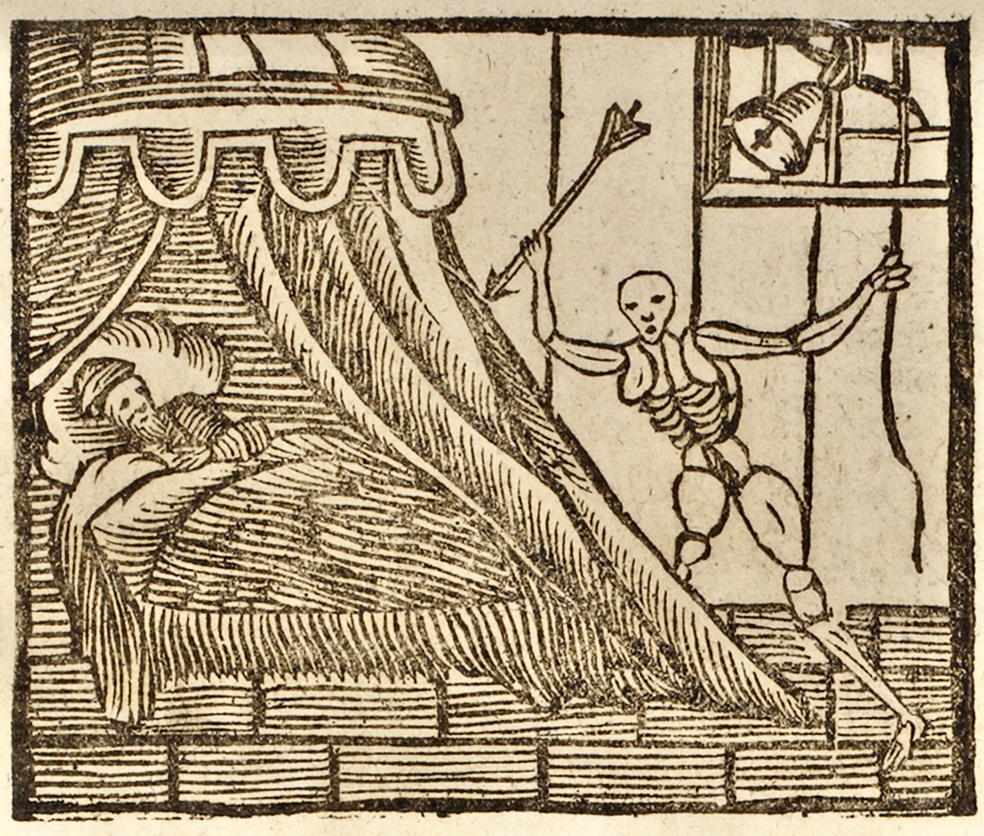 In May 1662 just prior to his death, John Wilcocks prepared a will and shortly thereafter revised it. He left to his wife Ann his “whole estate real & personal lands and chattels during her natural life” which, on her decease, would go to their “child or children now in her womb.” But he was also inclusive of his stepsons, Henry and Edmond (Ann’s children with Argoll Yeardley), authorizing Ann to divide of his personal estate as inheritance for them as “to her shall seem fitting” and made them successively his heirs in case of the death of the child in the womb. He reminded his wife that he had “desired to be in some large measure helpful to the children or child of my brother Henry if he should have any.”
In May 1662 just prior to his death, John Wilcocks prepared a will and shortly thereafter revised it. He left to his wife Ann his “whole estate real & personal lands and chattels during her natural life” which, on her decease, would go to their “child or children now in her womb.” But he was also inclusive of his stepsons, Henry and Edmond (Ann’s children with Argoll Yeardley), authorizing Ann to divide of his personal estate as inheritance for them as “to her shall seem fitting” and made them successively his heirs in case of the death of the child in the womb. He reminded his wife that he had “desired to be in some large measure helpful to the children or child of my brother Henry if he should have any.”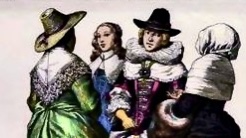 The Thorowgoods are rarely acknowledged in Eastern Shore history; yet as Francis’ wife, the powerful Sarah would have had some impact on affairs there. The Thorowgood genes and heritage infused the Eastern Shore through the marriage of her daughter Elizabeth Thorowgood to John Michaels, and thus to their Custis grandchildren. The Yeardley genes and heritage likewise came to Lower Norfolk through Argoll’s daughter Frances Yeardley II who married Adam Thorowgood II. The Thorowgood, Custis, and Yeardley women may not be the names that are usually remembered in history, but they played important roles in weaving the complex tapestry of the developing Virginia society.
The Thorowgoods are rarely acknowledged in Eastern Shore history; yet as Francis’ wife, the powerful Sarah would have had some impact on affairs there. The Thorowgood genes and heritage infused the Eastern Shore through the marriage of her daughter Elizabeth Thorowgood to John Michaels, and thus to their Custis grandchildren. The Yeardley genes and heritage likewise came to Lower Norfolk through Argoll’s daughter Frances Yeardley II who married Adam Thorowgood II. The Thorowgood, Custis, and Yeardley women may not be the names that are usually remembered in history, but they played important roles in weaving the complex tapestry of the developing Virginia society.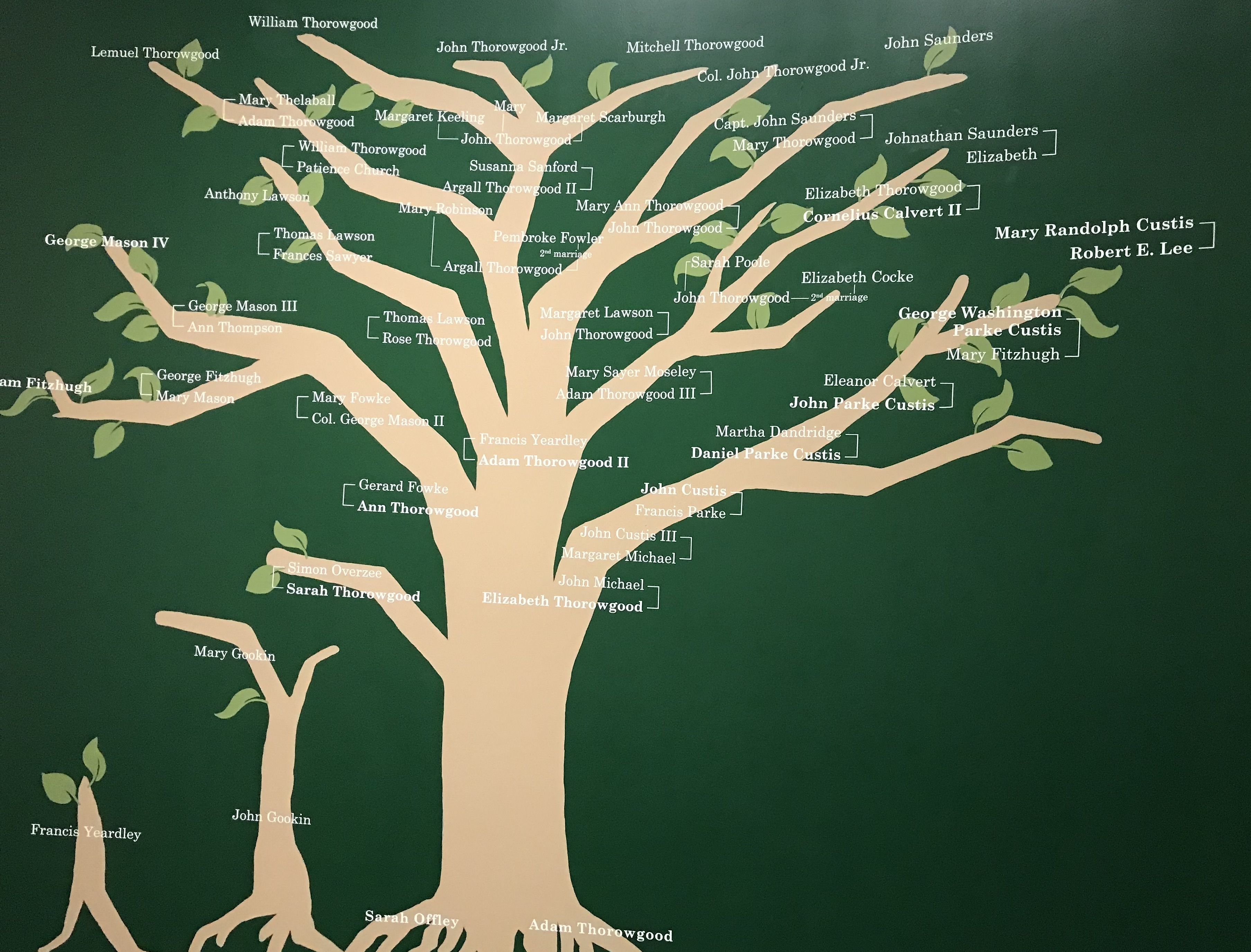
 Sadly, very little was created and even less preserved to document the thoughts and lives of these women, so we must again turn to the stories and documents of the men to catch them in the shadows. In the prior post, the children of Gov. George and Lady Temperance Yeardley were left orphaned in Jamestown and returned to England under the guardianship of their uncle, Ralph Yeardley. Nothing is known of their English childhoods. Their uncle was an apothecary of the merchant class, but with the wealth and status of Sir & Lady Yeardley, these orphans likely had an advantageous upbringing and an acquaintance with the cultured ways of English society. The daughter Elizabeth then disappeared from the records, hopefully through marriage rather than death. Argoll and Francis reappeared when they returned to Virginia to claim their inheritances. (See
Sadly, very little was created and even less preserved to document the thoughts and lives of these women, so we must again turn to the stories and documents of the men to catch them in the shadows. In the prior post, the children of Gov. George and Lady Temperance Yeardley were left orphaned in Jamestown and returned to England under the guardianship of their uncle, Ralph Yeardley. Nothing is known of their English childhoods. Their uncle was an apothecary of the merchant class, but with the wealth and status of Sir & Lady Yeardley, these orphans likely had an advantageous upbringing and an acquaintance with the cultured ways of English society. The daughter Elizabeth then disappeared from the records, hopefully through marriage rather than death. Argoll and Francis reappeared when they returned to Virginia to claim their inheritances. (See 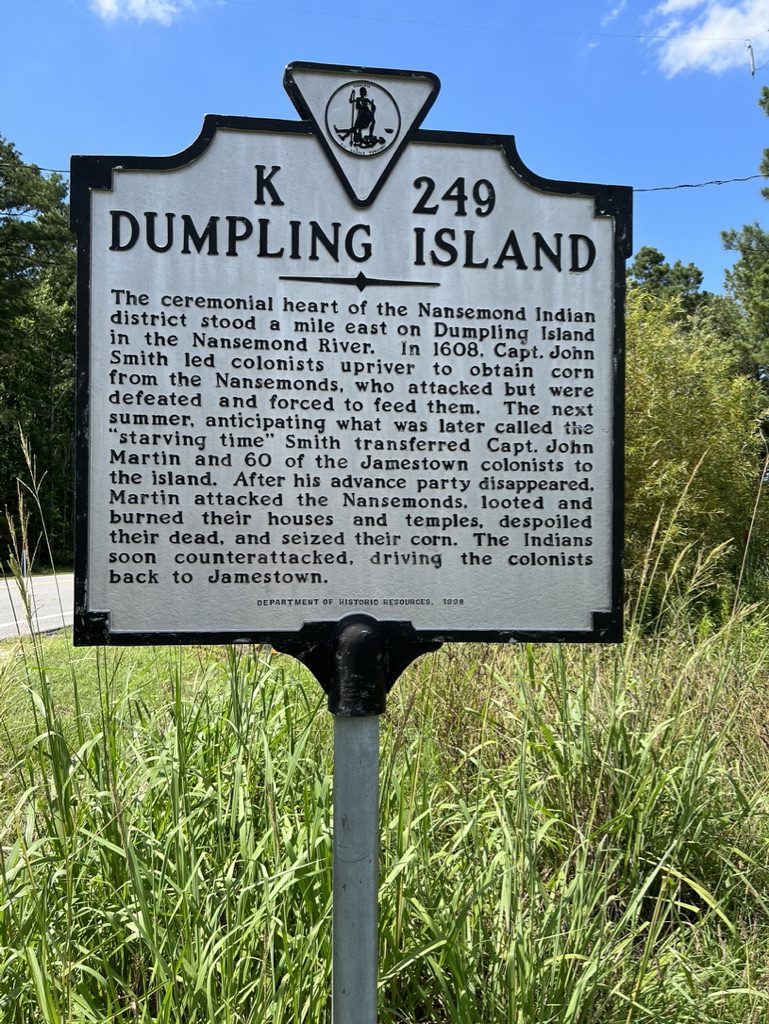 Sir George had left his sons the acreage he had received on the Eastern Shore (Chesapeake Penninsula) from the Accomac chieftain called The Laughing King. However, that was not where Argoll acquired his first property in Virginia. Before returning to Virginia, Argoll had married Frances Knight of London and so listed her as one of his headrights to patent 500 acres of land on Dumpling Island on the Nansemond River in Upper Norfolk County (later Nansemond Co.) in February 1637/38. An approximate birthdate of 1620 based on the 1624 Jamestown census would have made Argoll only about 18 years old when he patented land, which was unusually young for that time. There is some question as to the reference point of the ages on the Muster, and depositions given in 1630, indicate that Argoll and Francis were about two years older than reported on the Muster.* To maintain a land claim, it had to be “seated” (settled) and there had to be improvements made on the land. It is unknown what kind of improvements Argoll made there or whether he or Francis ever lived in Upper Norfolk . [2]
Sir George had left his sons the acreage he had received on the Eastern Shore (Chesapeake Penninsula) from the Accomac chieftain called The Laughing King. However, that was not where Argoll acquired his first property in Virginia. Before returning to Virginia, Argoll had married Frances Knight of London and so listed her as one of his headrights to patent 500 acres of land on Dumpling Island on the Nansemond River in Upper Norfolk County (later Nansemond Co.) in February 1637/38. An approximate birthdate of 1620 based on the 1624 Jamestown census would have made Argoll only about 18 years old when he patented land, which was unusually young for that time. There is some question as to the reference point of the ages on the Muster, and depositions given in 1630, indicate that Argoll and Francis were about two years older than reported on the Muster.* To maintain a land claim, it had to be “seated” (settled) and there had to be improvements made on the land. It is unknown what kind of improvements Argoll made there or whether he or Francis ever lived in Upper Norfolk . [2]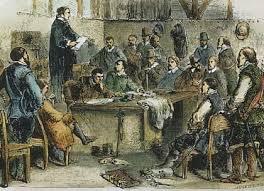 A few months later in September 1638, Argoll Yeardley, was designated as Esquire (a gentleman, not a lawyer) and was granted 3700 acres as his father’s inheritance on Hungars Creek in Accomack Co. (later Northampton Co.) of the Eastern Shore. Despite his young age, he was quickly accepted into the developing elite Virginia society and was recommended by Sir Francis Wyatt for his Governor’s Council. While Burgesses were elected, councillors were recommended by the governor and appointed for life by the King, with vacancies often filled by the sons or relatives of former councillors. Argoll would have served briefly with Adam Thorowgood on the Council before Adam suddenly died in 1640. [3]
A few months later in September 1638, Argoll Yeardley, was designated as Esquire (a gentleman, not a lawyer) and was granted 3700 acres as his father’s inheritance on Hungars Creek in Accomack Co. (later Northampton Co.) of the Eastern Shore. Despite his young age, he was quickly accepted into the developing elite Virginia society and was recommended by Sir Francis Wyatt for his Governor’s Council. While Burgesses were elected, councillors were recommended by the governor and appointed for life by the King, with vacancies often filled by the sons or relatives of former councillors. Argoll would have served briefly with Adam Thorowgood on the Council before Adam suddenly died in 1640. [3]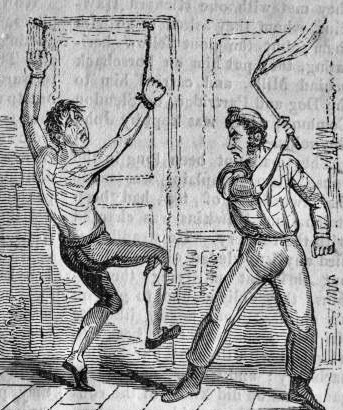 In January 1641/42, Argoll was also appointed a commissioner and justice for Accomack County. However, not all residents were content with this young man’s authority. A contentious resident Thomas Parks was sent for trial by the Council (of which Argoll was a part) in 1643 for insulting and slandering Argoll’s parents’ background, disputing Argoll’s fairness, and threatening to take his grievances to Maryland or the native tribes (which could have stirred up trouble). Parke did not seem to learn that disrespect toward those in authority would not be tolerated, as he reappeared in court a few months later for affronting Yeardley and other commissioners and received 30 lashes. Two years later, he defamed Commissioner Obedience Robins, but was spared another whipping when he finally apologized. However, the councillors themselves were not above reprimands. Argoll himself was charged with contempt in 1644. [4]
In January 1641/42, Argoll was also appointed a commissioner and justice for Accomack County. However, not all residents were content with this young man’s authority. A contentious resident Thomas Parks was sent for trial by the Council (of which Argoll was a part) in 1643 for insulting and slandering Argoll’s parents’ background, disputing Argoll’s fairness, and threatening to take his grievances to Maryland or the native tribes (which could have stirred up trouble). Parke did not seem to learn that disrespect toward those in authority would not be tolerated, as he reappeared in court a few months later for affronting Yeardley and other commissioners and received 30 lashes. Two years later, he defamed Commissioner Obedience Robins, but was spared another whipping when he finally apologized. However, the councillors themselves were not above reprimands. Argoll himself was charged with contempt in 1644. [4]
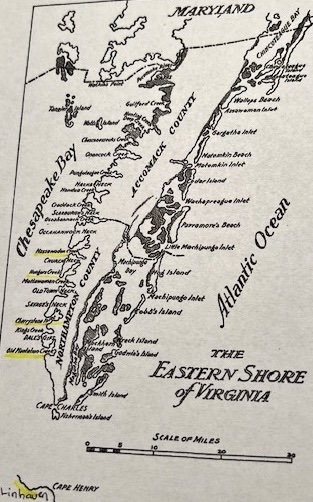 The Eastern Shore settlement grew outwards along the bayside from the inlet at Old Plantation and the Ackomack River (later called Cherrystone) to King’s Creek and further up to Hungars and Nassawadox where the Yeardleys lived. As the land was divided by many streams and inlets, travel would have been challenging, going either by skiff (small open boat) or by walking paths around the water and marshy lands. It is likely that most of Frances’ social network would have been within a five mile radius (journey of an hour or two), as was found in a study of 17th c women in the Chesapeake area. Church and court days would have increased opportunities to develop relationships. [5]
The Eastern Shore settlement grew outwards along the bayside from the inlet at Old Plantation and the Ackomack River (later called Cherrystone) to King’s Creek and further up to Hungars and Nassawadox where the Yeardleys lived. As the land was divided by many streams and inlets, travel would have been challenging, going either by skiff (small open boat) or by walking paths around the water and marshy lands. It is likely that most of Frances’ social network would have been within a five mile radius (journey of an hour or two), as was found in a study of 17th c women in the Chesapeake area. Church and court days would have increased opportunities to develop relationships. [5]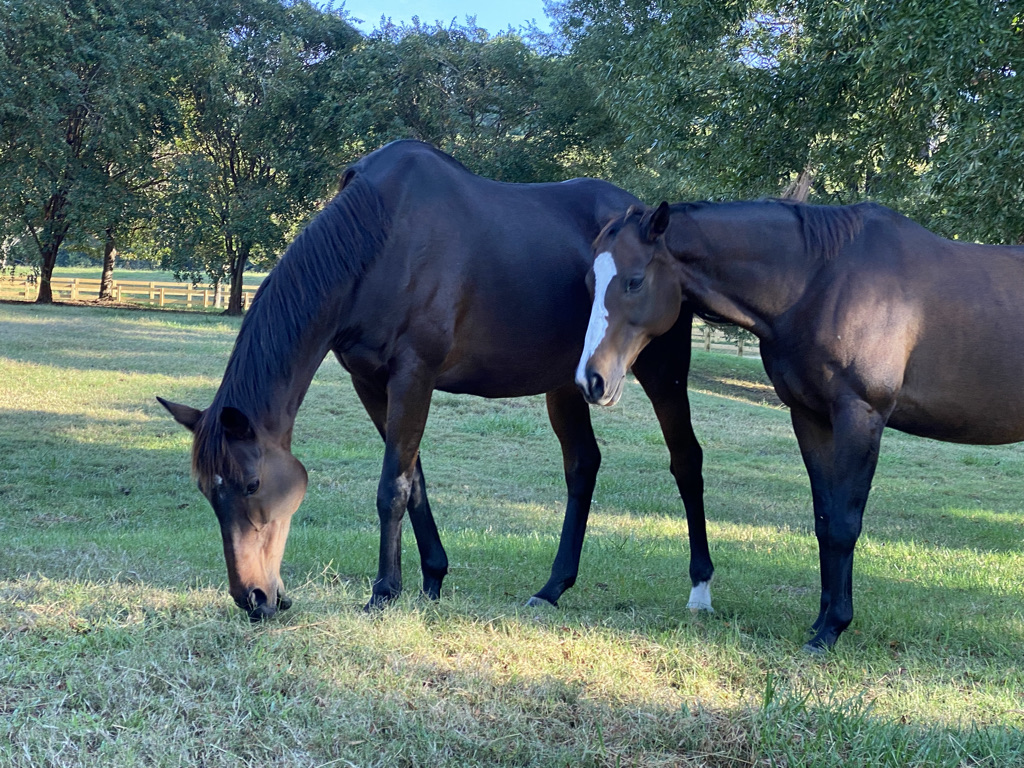 Frances must have been delighted when Argoll got a horse in 1642 (the first known horse purchased on the Eastern Shore) and continued to expand his herd. Hopefully, Frances had use of the horses, although it might have created some local jealousy as happened when Sarah Thorowgood rode her horse in Lower Norfolk. Overall, horses continued to be scarce on the Eastern Shore with only 6 landowners having horses by 1650 which only grew to 22 by 1655.
Frances must have been delighted when Argoll got a horse in 1642 (the first known horse purchased on the Eastern Shore) and continued to expand his herd. Hopefully, Frances had use of the horses, although it might have created some local jealousy as happened when Sarah Thorowgood rode her horse in Lower Norfolk. Overall, horses continued to be scarce on the Eastern Shore with only 6 landowners having horses by 1650 which only grew to 22 by 1655.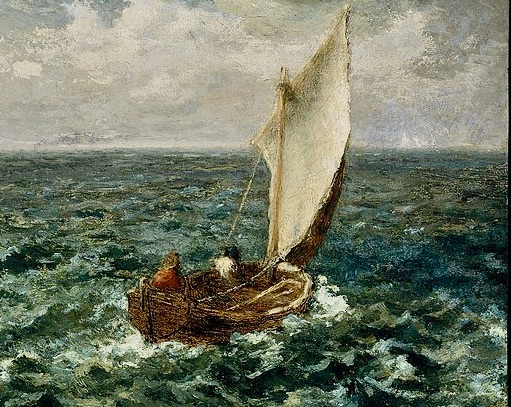
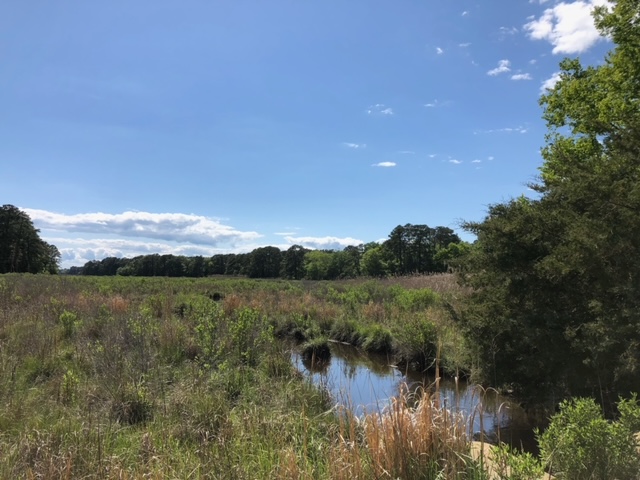
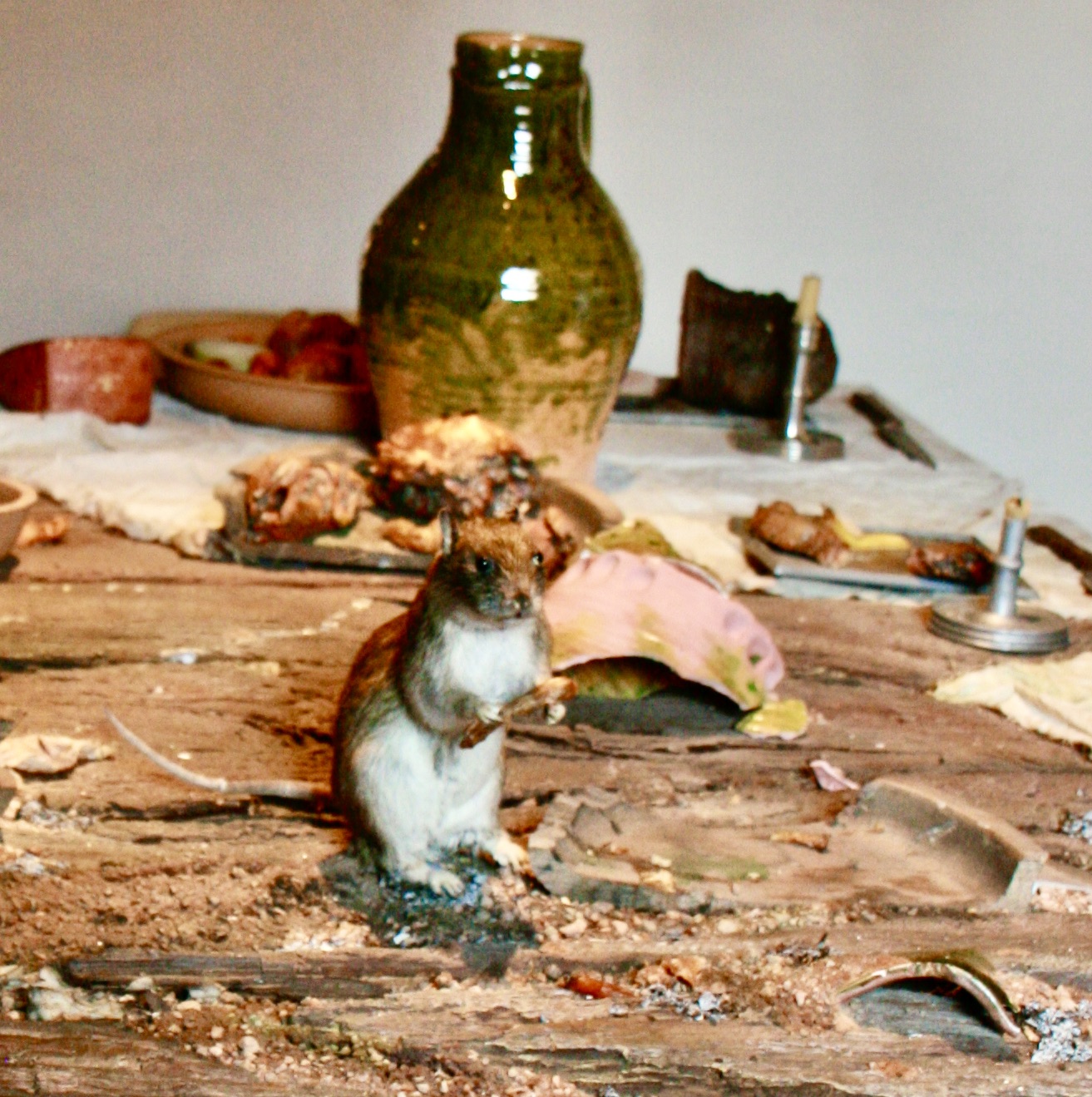
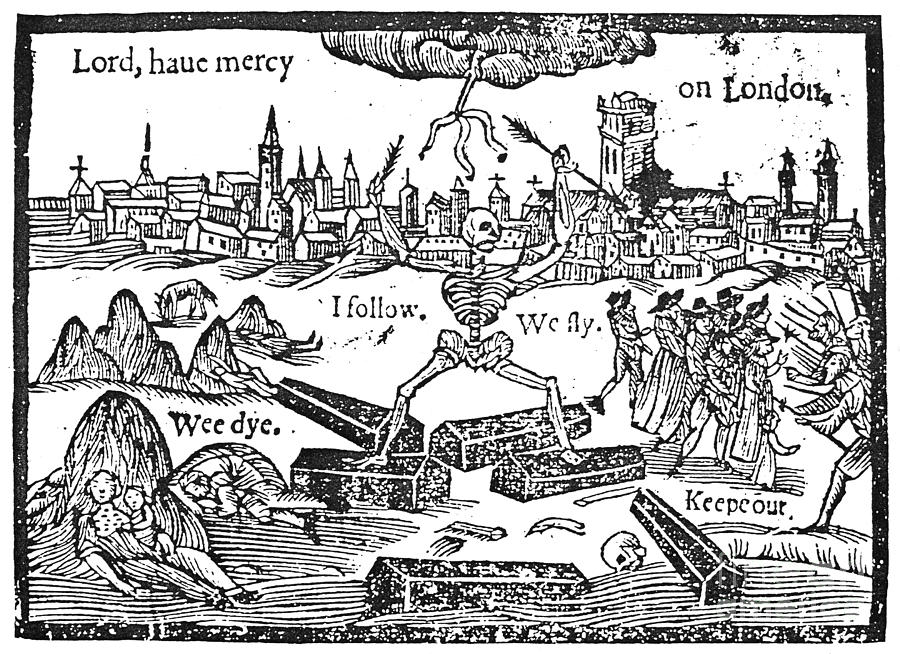
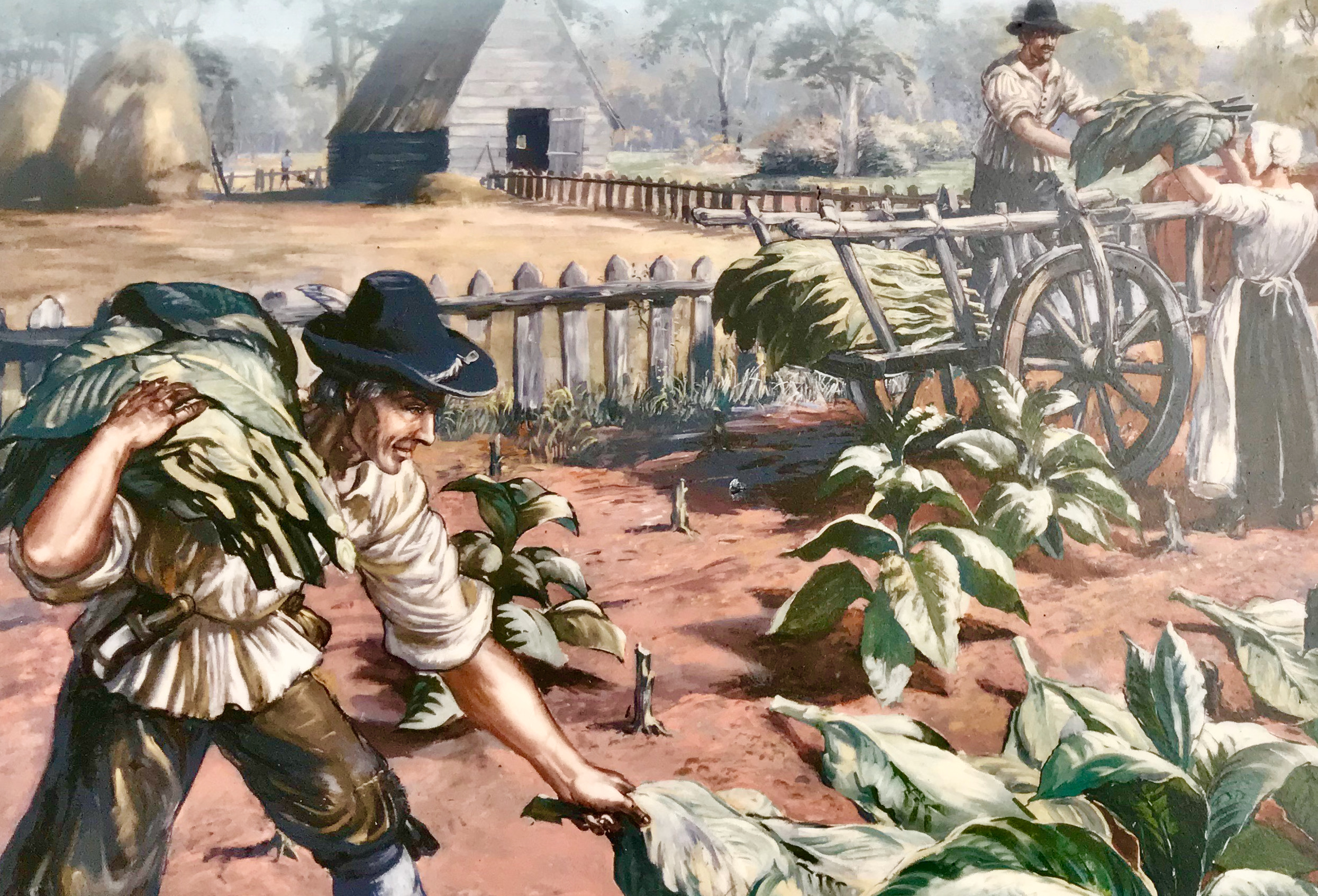
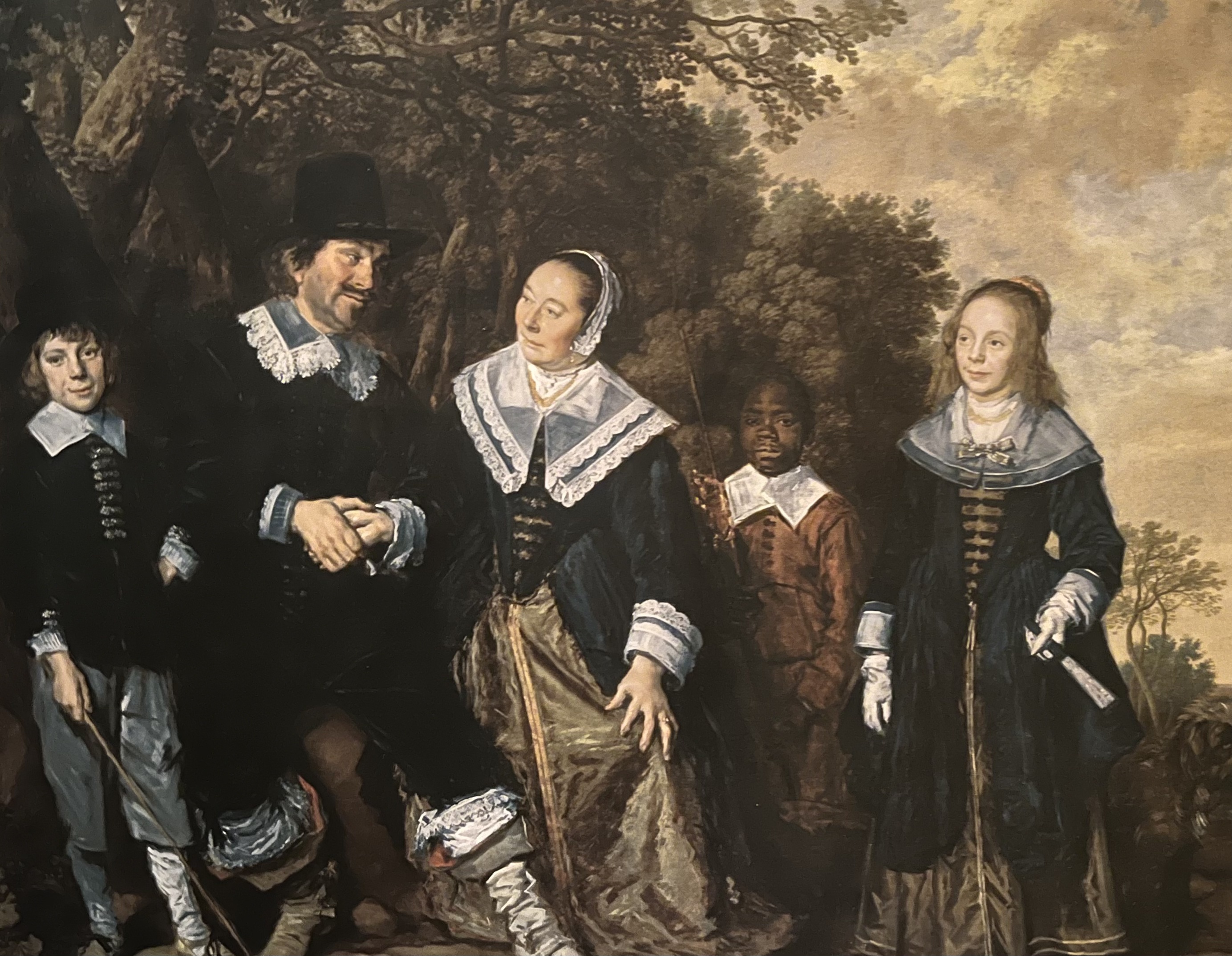
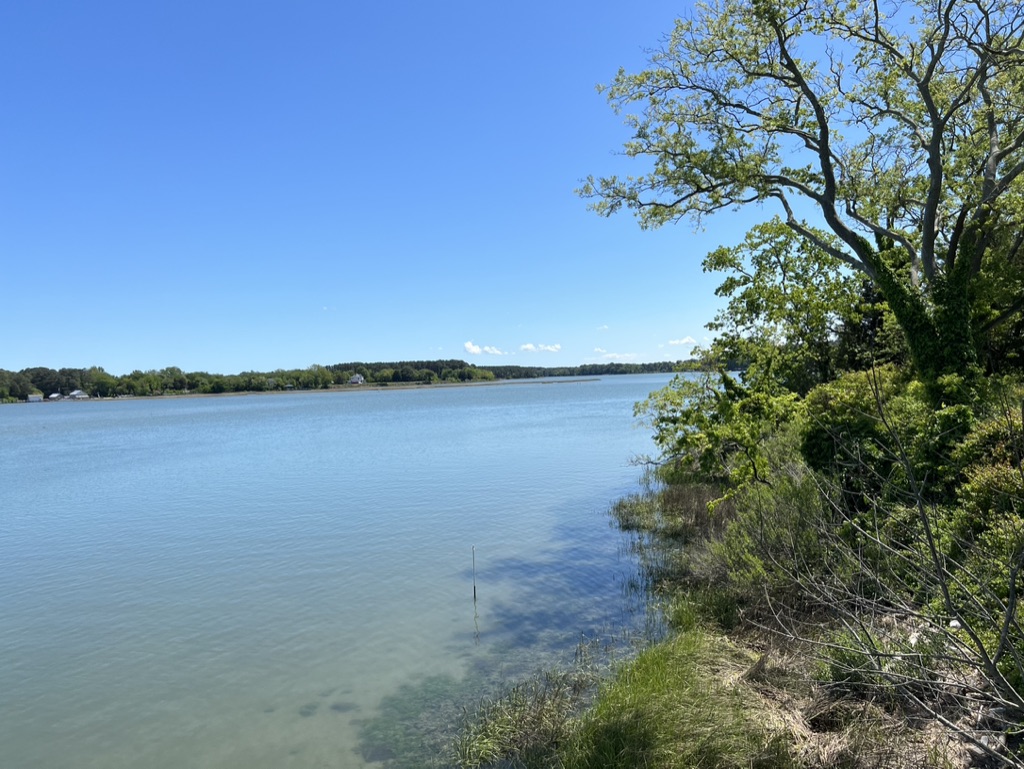
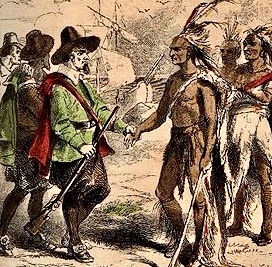 Despite Francis’ young age and lack of any military experience, Gov. Berkeley appointed him as a captain of the militia shortly after his arrival in Virginia. Francis had the authority “to appoint subordinate officers, exercise his company once a month, and levy a special tax to raise funds for the purchase of a drum, colors, and tent” for the King’s Creek to Hungars Creek area. Although relations were generally peaceful with the Accomac tribe on the Eastern Shore when Francis was appointed, the militia was reorganized shortly thereafter in response to increasing colony concerns in the era of the third Anglo-Powhatan War from 1644-1646. Francis continued as a captain, but Argoll eventually became the Commander of the Eastern Shore. [12]
Despite Francis’ young age and lack of any military experience, Gov. Berkeley appointed him as a captain of the militia shortly after his arrival in Virginia. Francis had the authority “to appoint subordinate officers, exercise his company once a month, and levy a special tax to raise funds for the purchase of a drum, colors, and tent” for the King’s Creek to Hungars Creek area. Although relations were generally peaceful with the Accomac tribe on the Eastern Shore when Francis was appointed, the militia was reorganized shortly thereafter in response to increasing colony concerns in the era of the third Anglo-Powhatan War from 1644-1646. Francis continued as a captain, but Argoll eventually became the Commander of the Eastern Shore. [12]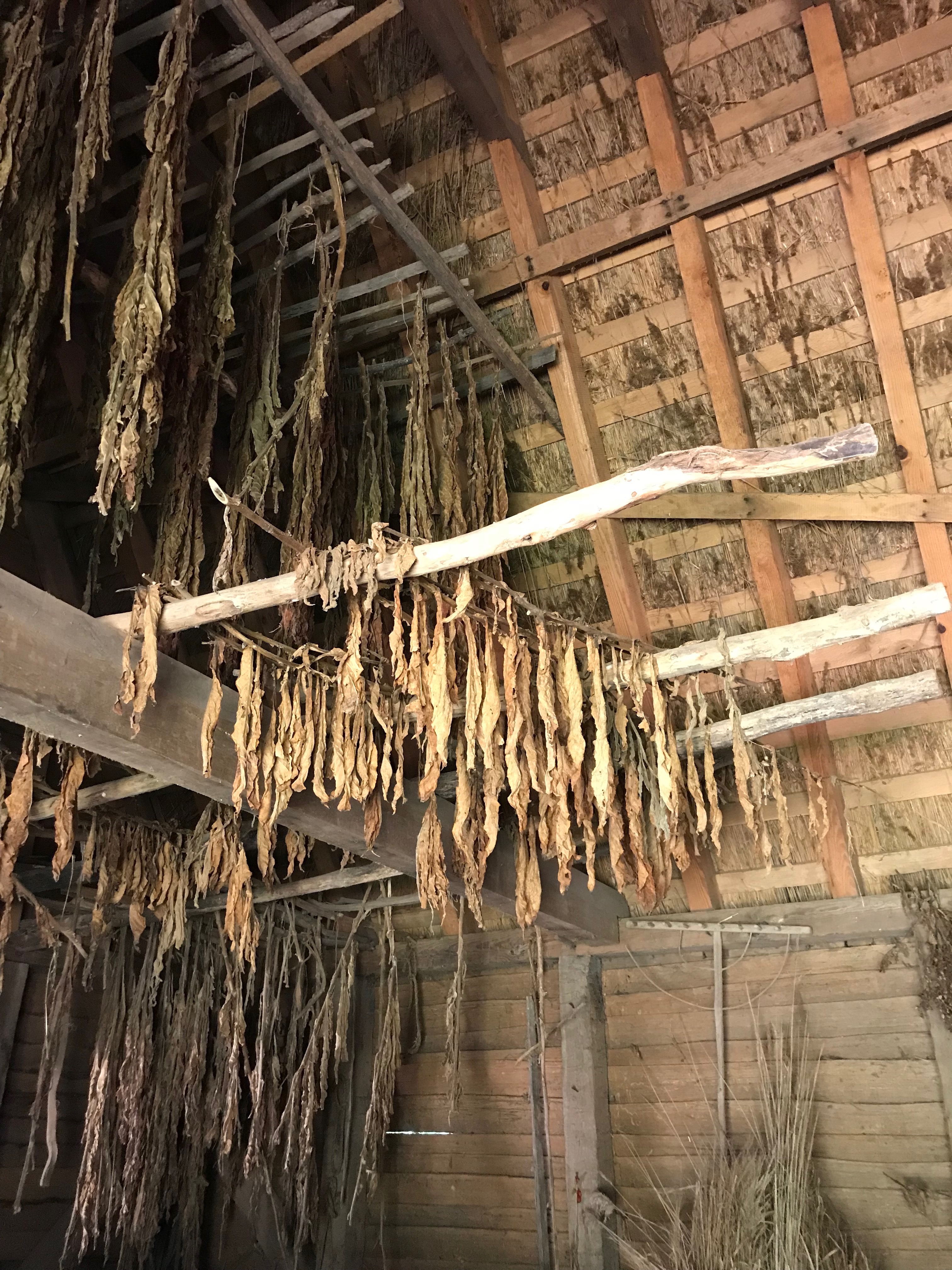 Francis did not appear to have his older brother’s business skills. In a tobacco economy based upon the annual sale of the crop, it could be tricky to manage finances. While Francis was land rich, his bills were not always paid on time. In 1646, the county court on which his brother sat found Francis owed Thomas Savage, a cooper/carpenter, for his 4 years of service (possibly from an indentureship) 2 suits of clothes, 2 pair shoes, Irish stockings, 2 shirts, 1 cap, and 1 servants bed. Mr. Stephen Charlton had earlier warned a prospective worker to avoid working for Mr. Yeardley who, though a gentleman, had not given Thomas Savage anything for his work for 2 years. Francis Yeardley was also ordered in 1646 to pay his debts of £6+ to Obedience Robins and 50 guilders to William Waters. The bachelor Francis, though, was resourceful and improved his situation that next year by moving and marrying a rich Virginia widow. [13]
Francis did not appear to have his older brother’s business skills. In a tobacco economy based upon the annual sale of the crop, it could be tricky to manage finances. While Francis was land rich, his bills were not always paid on time. In 1646, the county court on which his brother sat found Francis owed Thomas Savage, a cooper/carpenter, for his 4 years of service (possibly from an indentureship) 2 suits of clothes, 2 pair shoes, Irish stockings, 2 shirts, 1 cap, and 1 servants bed. Mr. Stephen Charlton had earlier warned a prospective worker to avoid working for Mr. Yeardley who, though a gentleman, had not given Thomas Savage anything for his work for 2 years. Francis Yeardley was also ordered in 1646 to pay his debts of £6+ to Obedience Robins and 50 guilders to William Waters. The bachelor Francis, though, was resourceful and improved his situation that next year by moving and marrying a rich Virginia widow. [13]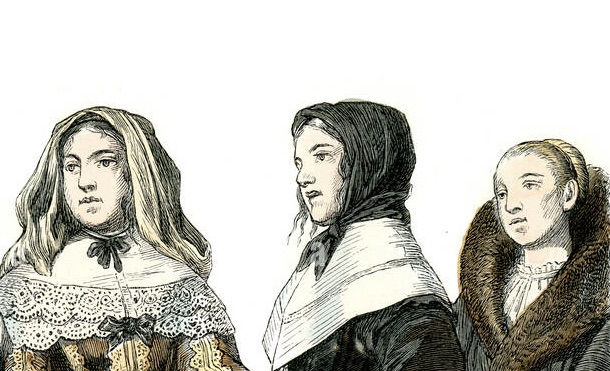 So, how did Ann Custis from Rotterdam and Sarah Offley Thorowgood Gookin from Lower Norfolk County, Virginia, get entangled in this story and end up as sisters in law? What impact did they have on the Eastern Shore story? Did Sarah really run a tavern? And whose complexion was worth 1,000 lbs. of tobacco?
So, how did Ann Custis from Rotterdam and Sarah Offley Thorowgood Gookin from Lower Norfolk County, Virginia, get entangled in this story and end up as sisters in law? What impact did they have on the Eastern Shore story? Did Sarah really run a tavern? And whose complexion was worth 1,000 lbs. of tobacco?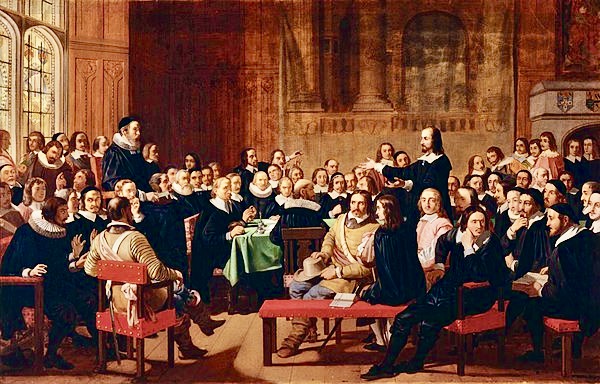
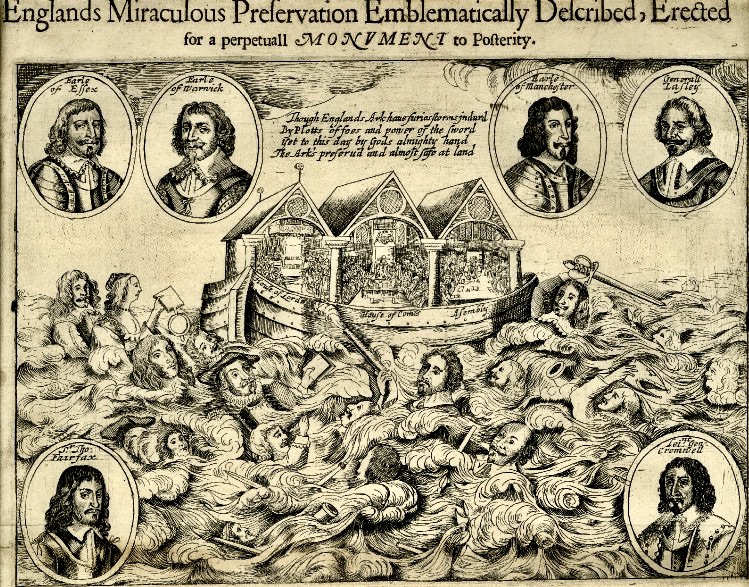

 Inspired by Cromwell’s successes, Parliament was preparing at the end of 1644 to reorganize its army into the national New Model Army which would emphasize efficiency and merit. In an attempt to make this new army less political, those serving in both the military and Parliament were forced to choose between those positions through the Self-Denying Ordinance. However, the army ended up with greater representation of Independents like Cromwell than fervent Presbyterians which ultimately resulted in its own conflicts. While the New Model Army’s focus was to win battles, there was a general religious orientation, and they were issued a special Soldiers Catechism. It was also the first time there was a national uniform created for the troops who became called “redcoats.” [5]
Inspired by Cromwell’s successes, Parliament was preparing at the end of 1644 to reorganize its army into the national New Model Army which would emphasize efficiency and merit. In an attempt to make this new army less political, those serving in both the military and Parliament were forced to choose between those positions through the Self-Denying Ordinance. However, the army ended up with greater representation of Independents like Cromwell than fervent Presbyterians which ultimately resulted in its own conflicts. While the New Model Army’s focus was to win battles, there was a general religious orientation, and they were issued a special Soldiers Catechism. It was also the first time there was a national uniform created for the troops who became called “redcoats.” [5] 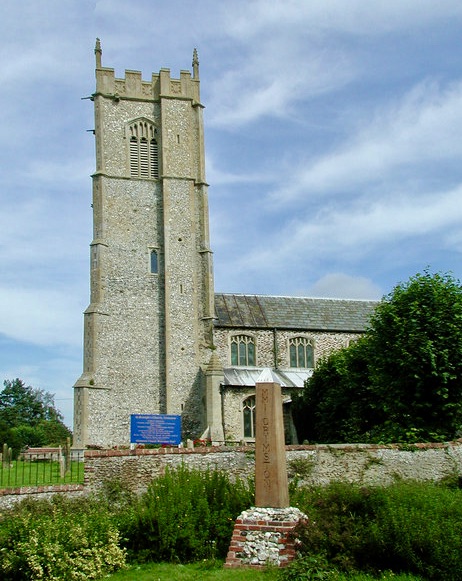
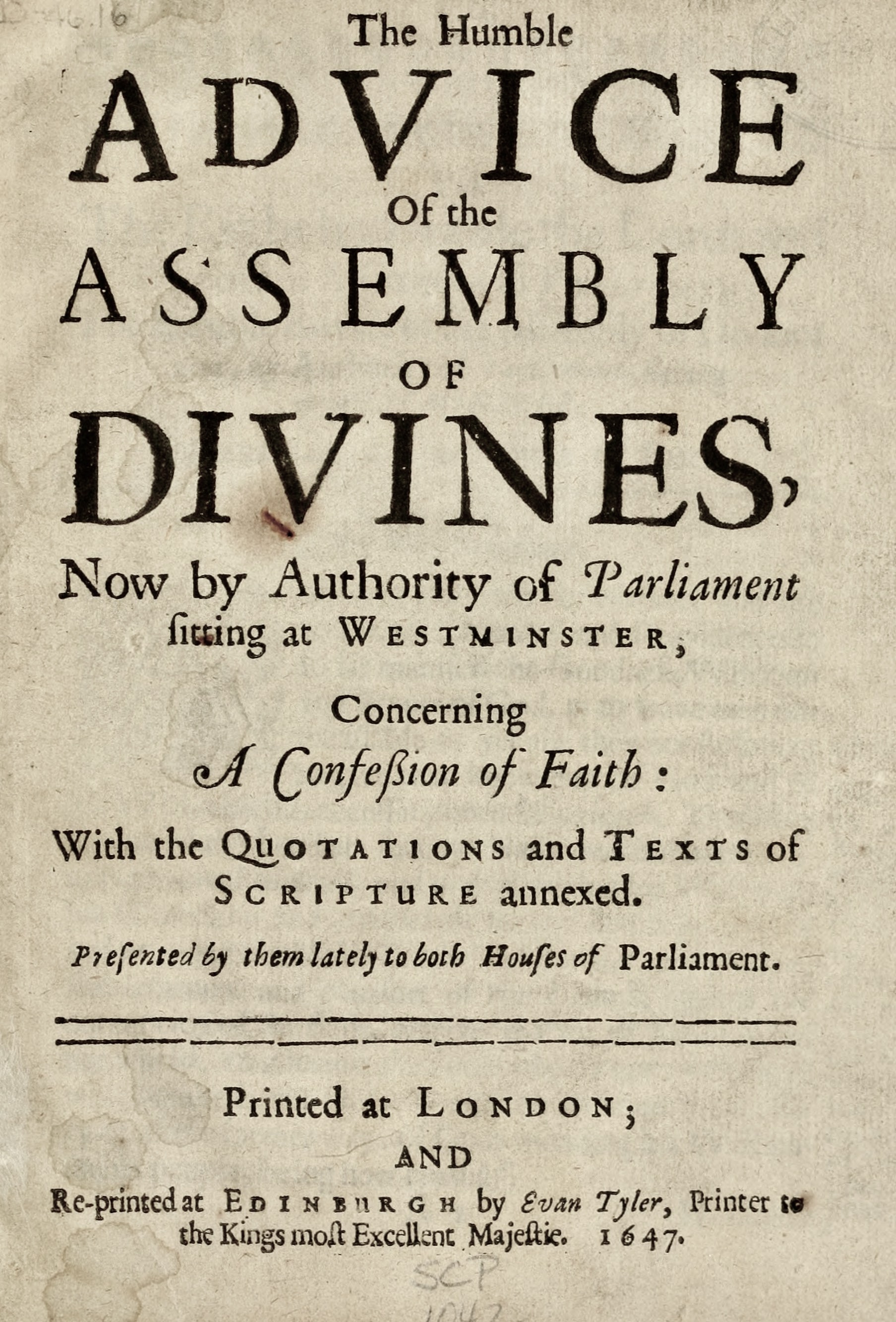 In April 1642, Parliament authorized the calling of an Anglo-Scottish synod of “divines” to revise the prayer book (rejecting the Anglican Common Book of Prayer) and decide matters regarding acceptable church liturgy, practices, and governance. Invited were 121 ordained ministers, 10 peers, 20 MPs as lay assessors, and 8 Scots (5 clerics and 3 laymen). The Assembly opened on July 1, 1643 at Westminster and continued until 1653. No Anglican ministers were appointed. Thomas Thorowgood was one of two selected to represent Norfolk, and he served from 1643 until 1649. In 1646, the Assembly published a New Confession of Faith based on Calvinistic doctrine and prescribed a Presbyterian form of church governance. Although the church in Scotland continued to employ the Westminster Assembly’s standards, they were revoked in England in 1660 when the Anglican Church was reinstated with the restoration of Charles II. [8]
In April 1642, Parliament authorized the calling of an Anglo-Scottish synod of “divines” to revise the prayer book (rejecting the Anglican Common Book of Prayer) and decide matters regarding acceptable church liturgy, practices, and governance. Invited were 121 ordained ministers, 10 peers, 20 MPs as lay assessors, and 8 Scots (5 clerics and 3 laymen). The Assembly opened on July 1, 1643 at Westminster and continued until 1653. No Anglican ministers were appointed. Thomas Thorowgood was one of two selected to represent Norfolk, and he served from 1643 until 1649. In 1646, the Assembly published a New Confession of Faith based on Calvinistic doctrine and prescribed a Presbyterian form of church governance. Although the church in Scotland continued to employ the Westminster Assembly’s standards, they were revoked in England in 1660 when the Anglican Church was reinstated with the restoration of Charles II. [8] 
 This approach to Christmas was not well received by the populace. Apprentices who lost their day off rioted in London against shop owners who complied with keeping their shops open in non-observance of the holiday. Some homes and even a few Puritan churches continued to decorate for Christmas. The declared Puritan days of fasts and thanksgivings never captured the hearts and imaginations of the people or produced a communal feeling like the religious festivals had. The denial of such entertainments only led to increased noncompliance and resentment against Puritan leaders. [13]
This approach to Christmas was not well received by the populace. Apprentices who lost their day off rioted in London against shop owners who complied with keeping their shops open in non-observance of the holiday. Some homes and even a few Puritan churches continued to decorate for Christmas. The declared Puritan days of fasts and thanksgivings never captured the hearts and imaginations of the people or produced a communal feeling like the religious festivals had. The denial of such entertainments only led to increased noncompliance and resentment against Puritan leaders. [13] 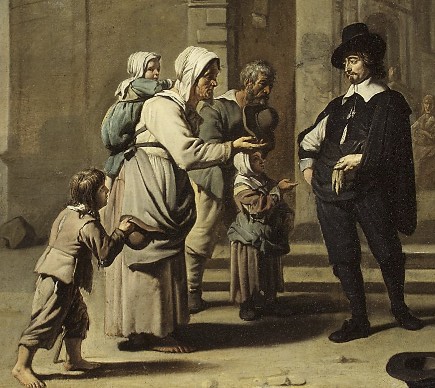 Noting that the choice of the date and manner of the Christmas celebration had more to do with the pagan solstice celebrations than Christ’s actual birth date which Rev. Thorowgood and others had concluded was likely in the spring, Thorowgood expressed willingness to accept another date and manner of celebrating the birth:
Noting that the choice of the date and manner of the Christmas celebration had more to do with the pagan solstice celebrations than Christ’s actual birth date which Rev. Thorowgood and others had concluded was likely in the spring, Thorowgood expressed willingness to accept another date and manner of celebrating the birth:
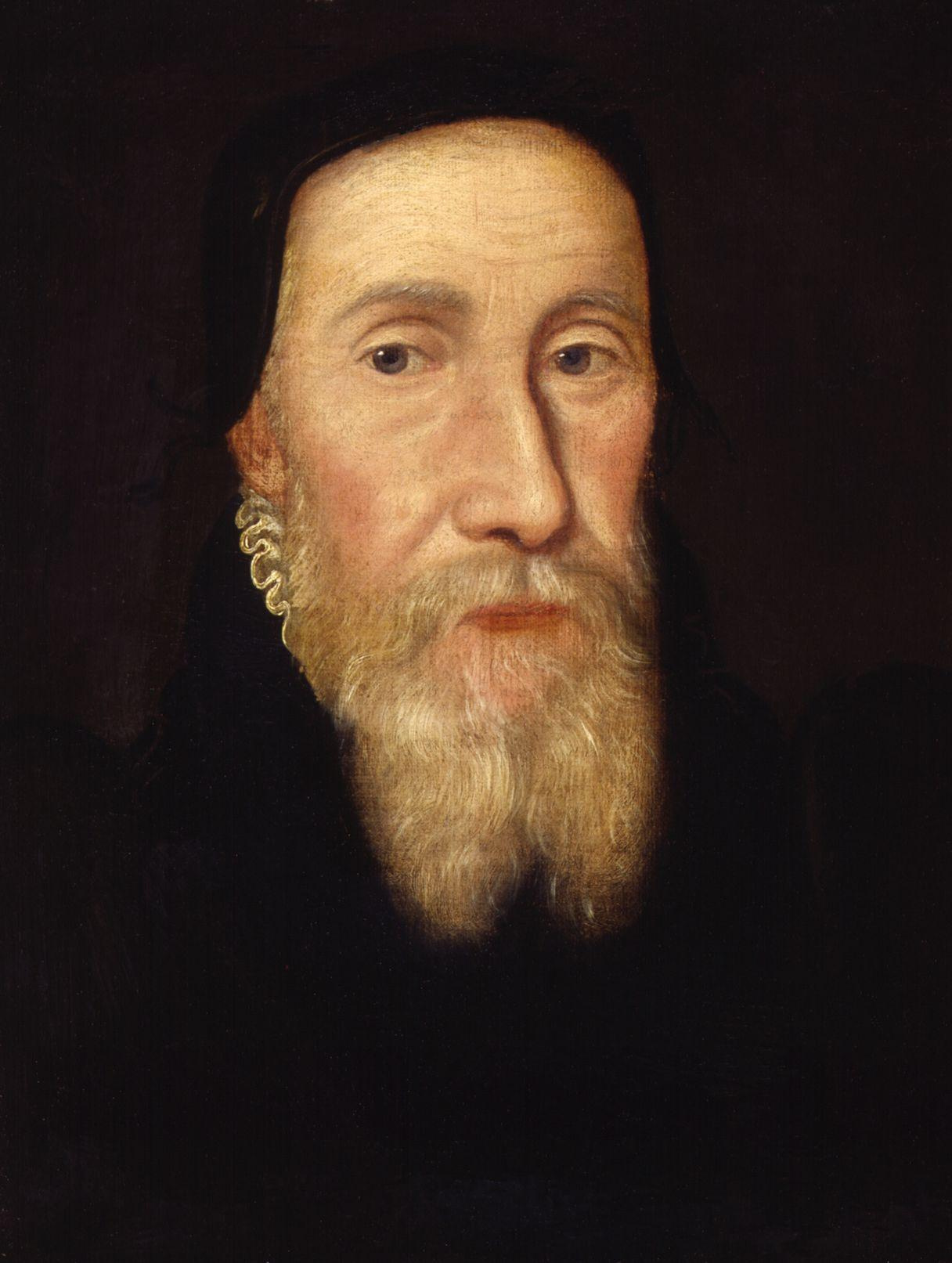
 In 1589, John Aylmer, who became Bishop of London, declared that “God is English.” That same year Richard Hakluyt glorified the efforts of English colonization in North America to spread the “true” religion. In 1610, William Crashaw preached that England and the struggling Virginia colonists were “the friend of God.” The Protestant English of the 17th century believed they were now God’s chosen people and that, like the Israelites of the Old Testament, God intended them to possess this new promised land. [3]
In 1589, John Aylmer, who became Bishop of London, declared that “God is English.” That same year Richard Hakluyt glorified the efforts of English colonization in North America to spread the “true” religion. In 1610, William Crashaw preached that England and the struggling Virginia colonists were “the friend of God.” The Protestant English of the 17th century believed they were now God’s chosen people and that, like the Israelites of the Old Testament, God intended them to possess this new promised land. [3] 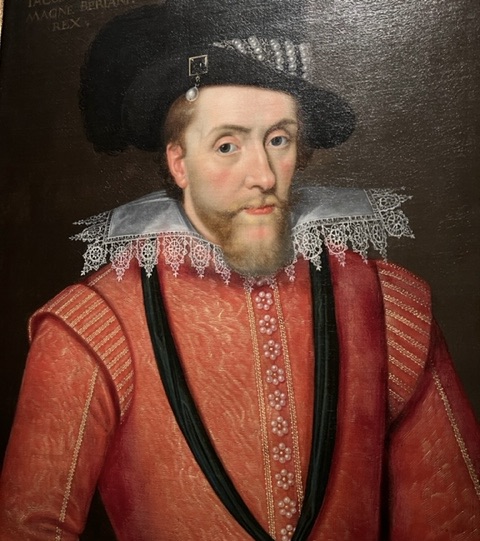

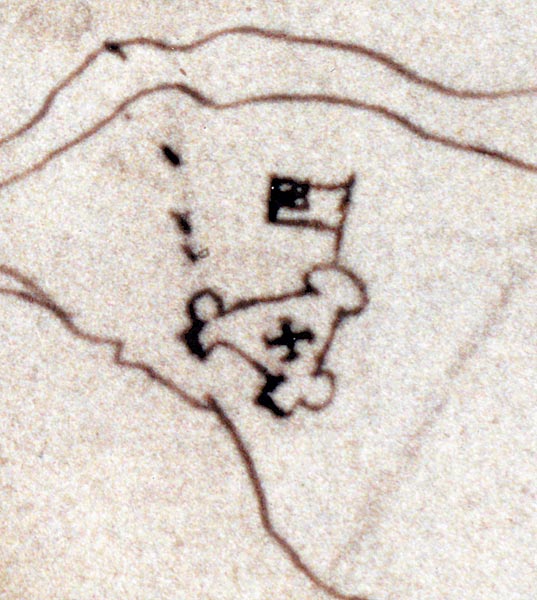
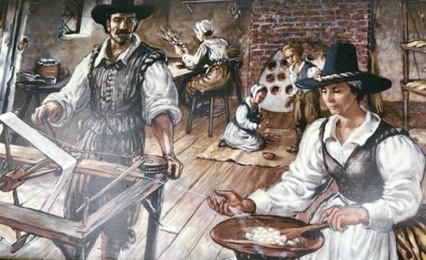
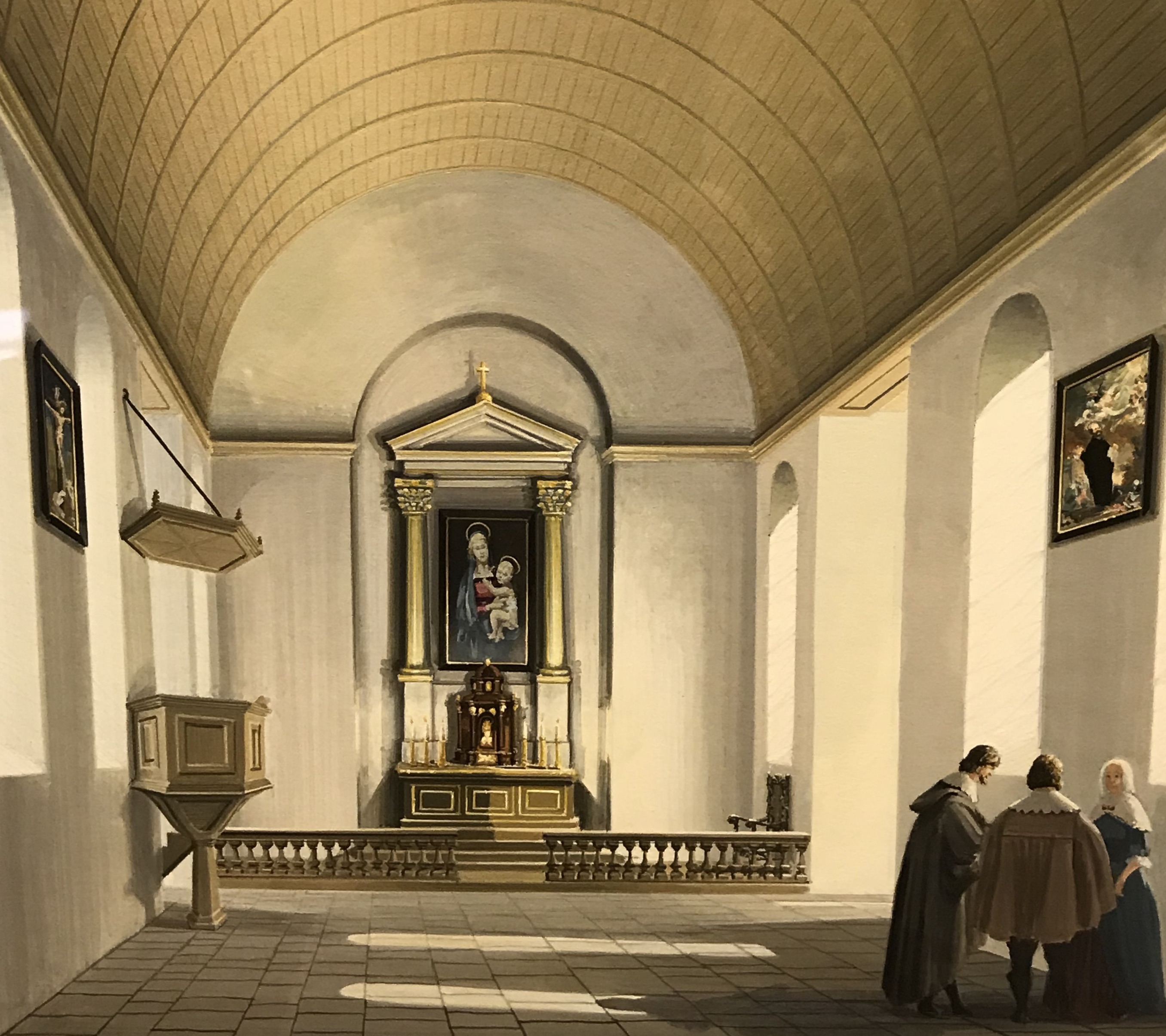
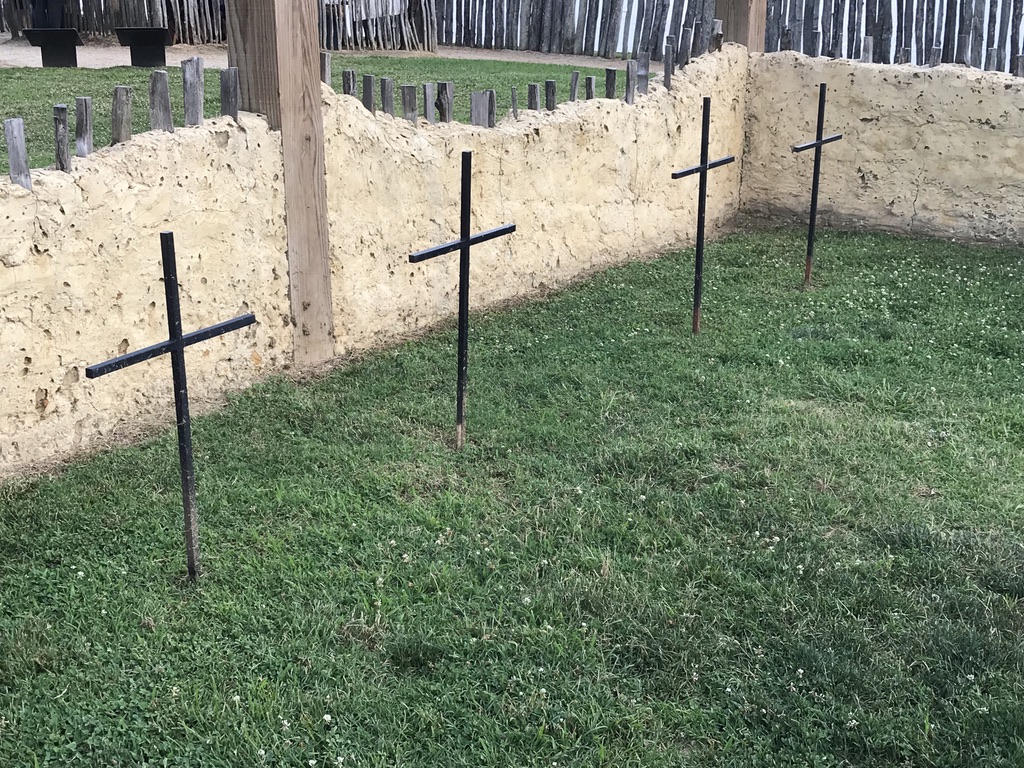


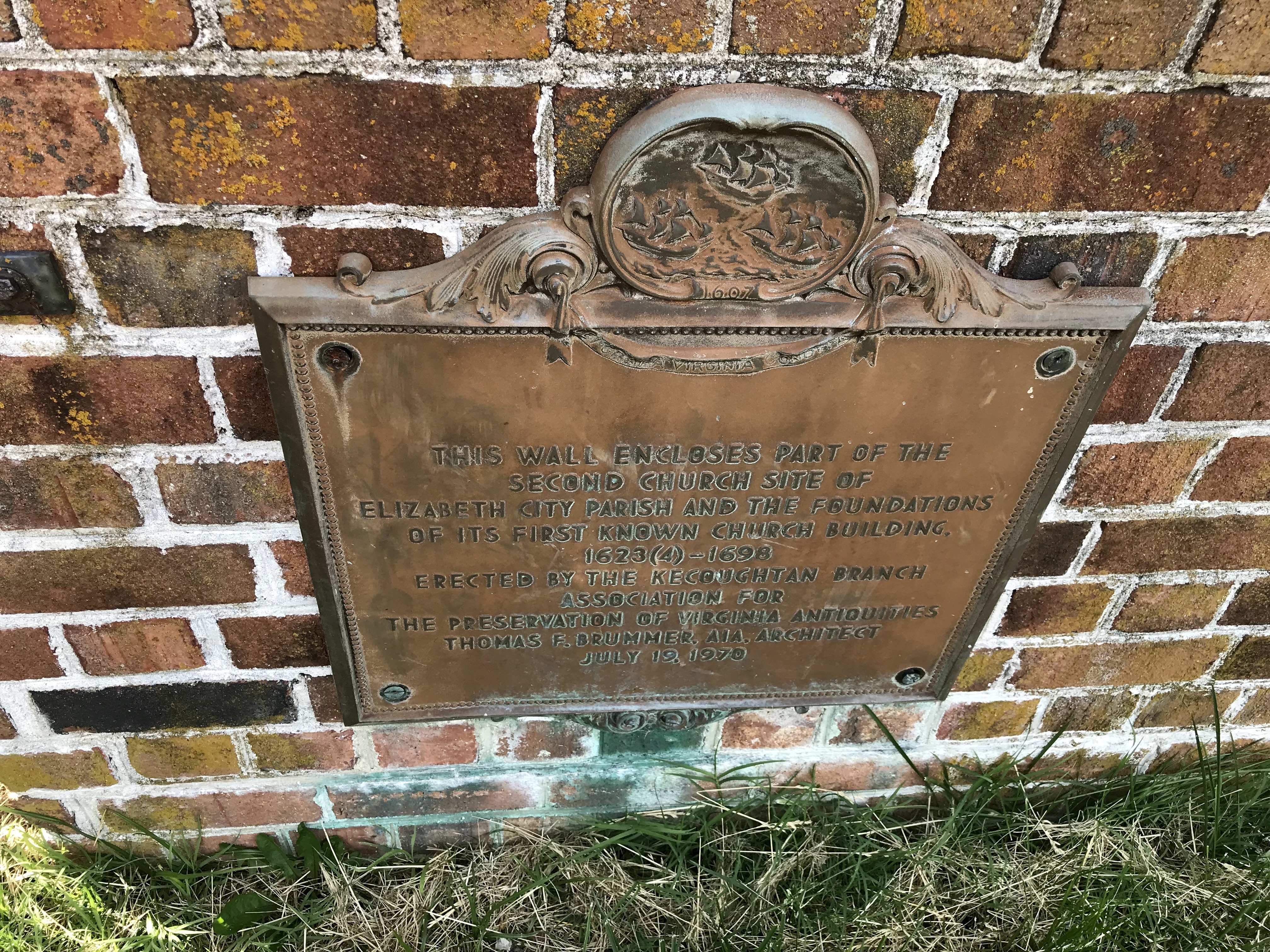

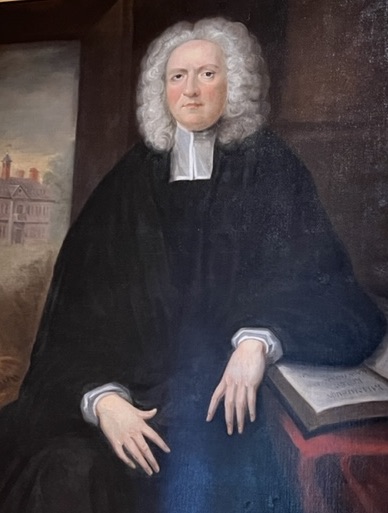



 As noted in the last post, Daniel Gookin, Richard Bennett, and 69 others from the Nansemond area requested ministers from Puritans in New England in May 1642. Their letter was received favorably by the elders of Christ Church in Boston and, after consideration, three suitable ministers were sent to Virginia: William Tompson, John Knowles, and Thomas James. Wanting to be respectful of the Virginian leaders, they arrived with a letter of introduction from Gov. Winthrop to Virginia’s relatively new Gov. William Berkeley. Although the Assembly initially seemed pleased that colonists had successfully solicited ministers, Berkeley did not welcome them. However, many Virginians responded to their religious fervor. It was reported they “preached openly unto the people for some space of time, and also from house to house exhorted the people daily that they would cleave unto the Lord; the harvest they had was plentiful for the little space of time they were there.” Knowles reported, “The people’s hearts were inflamed with desire to hear them.” [18]
As noted in the last post, Daniel Gookin, Richard Bennett, and 69 others from the Nansemond area requested ministers from Puritans in New England in May 1642. Their letter was received favorably by the elders of Christ Church in Boston and, after consideration, three suitable ministers were sent to Virginia: William Tompson, John Knowles, and Thomas James. Wanting to be respectful of the Virginian leaders, they arrived with a letter of introduction from Gov. Winthrop to Virginia’s relatively new Gov. William Berkeley. Although the Assembly initially seemed pleased that colonists had successfully solicited ministers, Berkeley did not welcome them. However, many Virginians responded to their religious fervor. It was reported they “preached openly unto the people for some space of time, and also from house to house exhorted the people daily that they would cleave unto the Lord; the harvest they had was plentiful for the little space of time they were there.” Knowles reported, “The people’s hearts were inflamed with desire to hear them.” [18] 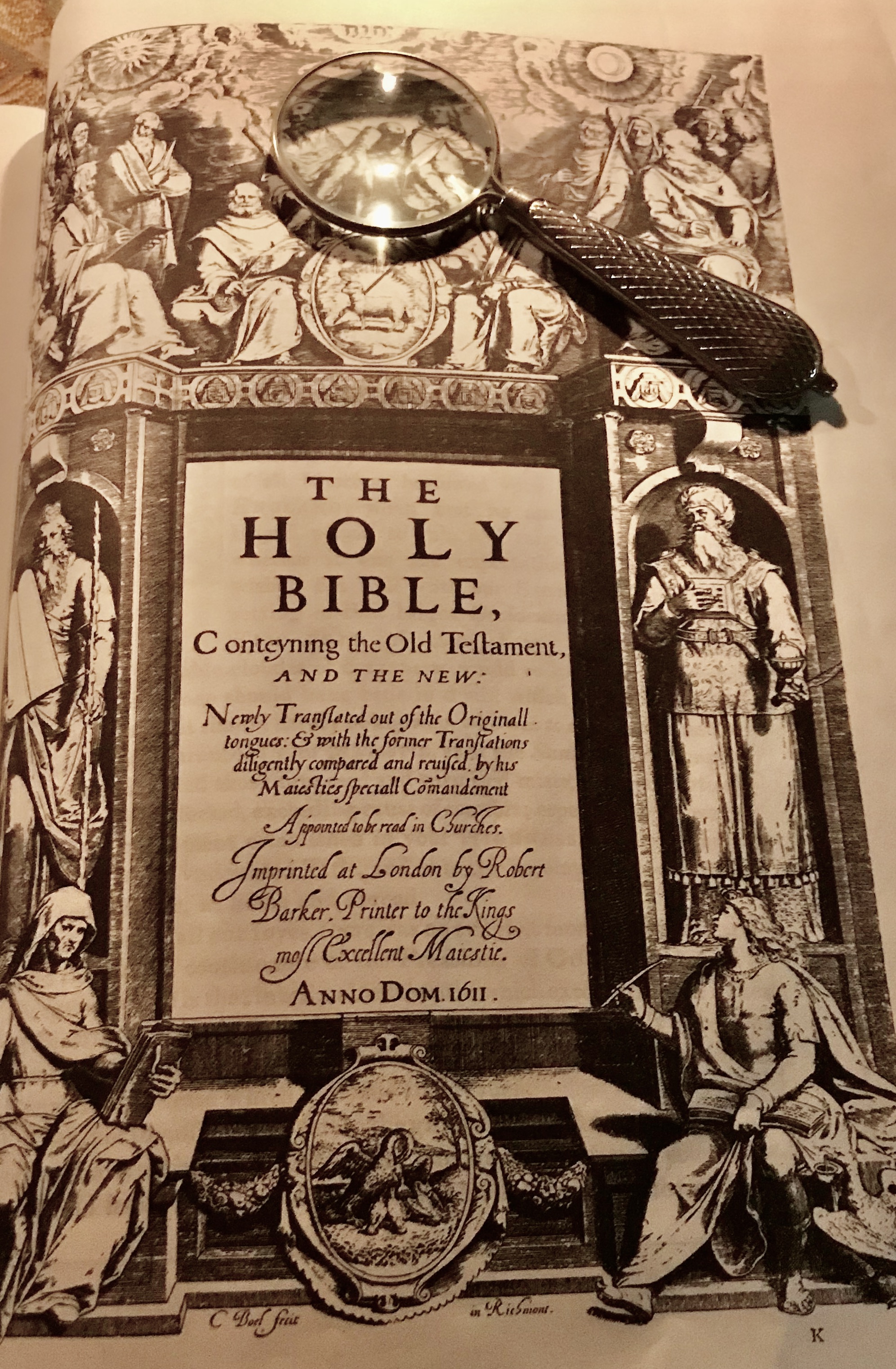 The conflict became particularly heated in the Elizabeth River Parish of Lower Norfolk County when the popular Puritan Rev. Harrison was charged with nonconformity in 1645 by the Anglican justices of a divided county court. When Harrison left and went to the welcoming Nansemond parishes, William Durand, an unordained minister, began to preach Puritan doctrine in his stead, but was arrested, and his unauthorized flock was told to disperse. Puritan Cornelius Lloyd, a Lower Norfolk Burgess, and his brother Edward Lloyd, a former Burgess, came to Durand’s defense which resulted in them being accused as “abettors to much sedition and mutiny.” In 1648, Berkeley and his council banished Harrison and Durand from the colony. That next year when Charles I was deposed, Virginia Puritans appealed to the English Parliamentary Council of State who ordered Berkeley to reinstate the Rev. Harrison, but he had already left for New England and never returned. [20]
The conflict became particularly heated in the Elizabeth River Parish of Lower Norfolk County when the popular Puritan Rev. Harrison was charged with nonconformity in 1645 by the Anglican justices of a divided county court. When Harrison left and went to the welcoming Nansemond parishes, William Durand, an unordained minister, began to preach Puritan doctrine in his stead, but was arrested, and his unauthorized flock was told to disperse. Puritan Cornelius Lloyd, a Lower Norfolk Burgess, and his brother Edward Lloyd, a former Burgess, came to Durand’s defense which resulted in them being accused as “abettors to much sedition and mutiny.” In 1648, Berkeley and his council banished Harrison and Durand from the colony. That next year when Charles I was deposed, Virginia Puritans appealed to the English Parliamentary Council of State who ordered Berkeley to reinstate the Rev. Harrison, but he had already left for New England and never returned. [20] 
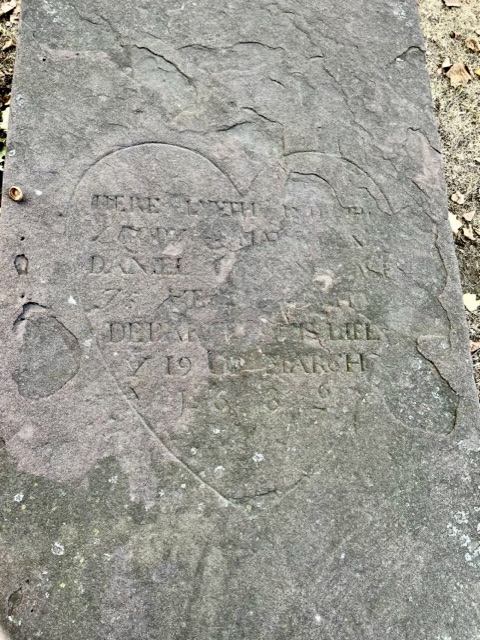
 Another important trader on the Chesapeake was the Dutch merchant Simon Overzee who married Adam and Sarah Thorowgood’s daughter Sarah and moved from Virginia to St. Mary’s County in the 1650s. The Thorowgood’s daughter Ann married Job Chandler, a friend of the Maryland governor, and also moved to Maryland in 1651. With the increasing persecution in Virginia, ultimately about 300 Puritan men, women, and children decided to leave their homes in Virginia in the 1650s. These Virginians established the town Providence, now known as Annapolis, in Maryland where they received fertile land as well as “the liberty of our consciences in matter of religion and all other privileges of English subjects.” Ironically, the Act of Toleration that had initially protected those Puritans was repealed when they took over the Maryland government in 1652, but it was reinstated in 1657. [22]
Another important trader on the Chesapeake was the Dutch merchant Simon Overzee who married Adam and Sarah Thorowgood’s daughter Sarah and moved from Virginia to St. Mary’s County in the 1650s. The Thorowgood’s daughter Ann married Job Chandler, a friend of the Maryland governor, and also moved to Maryland in 1651. With the increasing persecution in Virginia, ultimately about 300 Puritan men, women, and children decided to leave their homes in Virginia in the 1650s. These Virginians established the town Providence, now known as Annapolis, in Maryland where they received fertile land as well as “the liberty of our consciences in matter of religion and all other privileges of English subjects.” Ironically, the Act of Toleration that had initially protected those Puritans was repealed when they took over the Maryland government in 1652, but it was reinstated in 1657. [22] 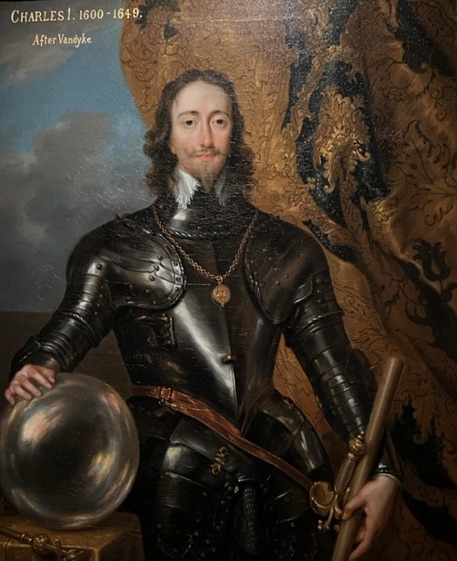

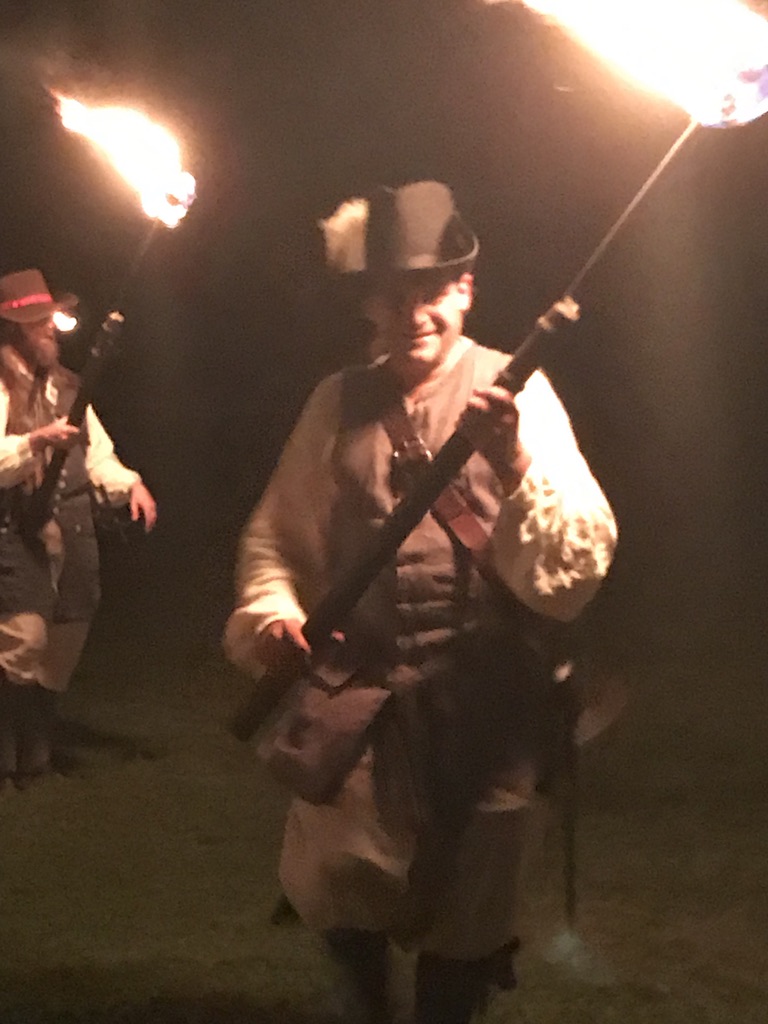 Cromwell’s Commonwealth ended shortly after his death, and by the time King Charles II ascended to the throne, Berkeley had been returned as Virginia’s governor. Berkeley was less strident in his persecution of religious dissidents in his second term, but faced other challenges building to Bacon’s Rebellion in 1675.
Cromwell’s Commonwealth ended shortly after his death, and by the time King Charles II ascended to the throne, Berkeley had been returned as Virginia’s governor. Berkeley was less strident in his persecution of religious dissidents in his second term, but faced other challenges building to Bacon’s Rebellion in 1675. 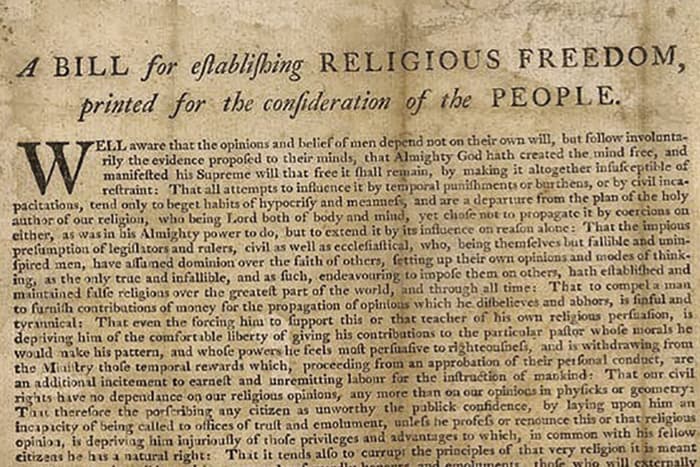 Under Bishop Compton’s commissaries, Virginia became more solidly Anglican in the 18th century. Persecution continued against nonconformists who expanded to include Presbyterians, Baptists, and Methodists. It was not until the throes of the American Revolution that Thomas Jefferson’s bill The Virginia Statute for Establishing Religious Freedom, was proposed, although it was not passed by the Virginia Assembly until 1786. At last there was separation of church and state, and Virginians were free to select their own faith without coercion or persecution. [26]
Under Bishop Compton’s commissaries, Virginia became more solidly Anglican in the 18th century. Persecution continued against nonconformists who expanded to include Presbyterians, Baptists, and Methodists. It was not until the throes of the American Revolution that Thomas Jefferson’s bill The Virginia Statute for Establishing Religious Freedom, was proposed, although it was not passed by the Virginia Assembly until 1786. At last there was separation of church and state, and Virginians were free to select their own faith without coercion or persecution. [26] 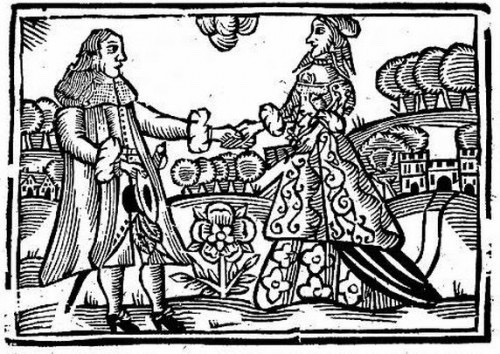
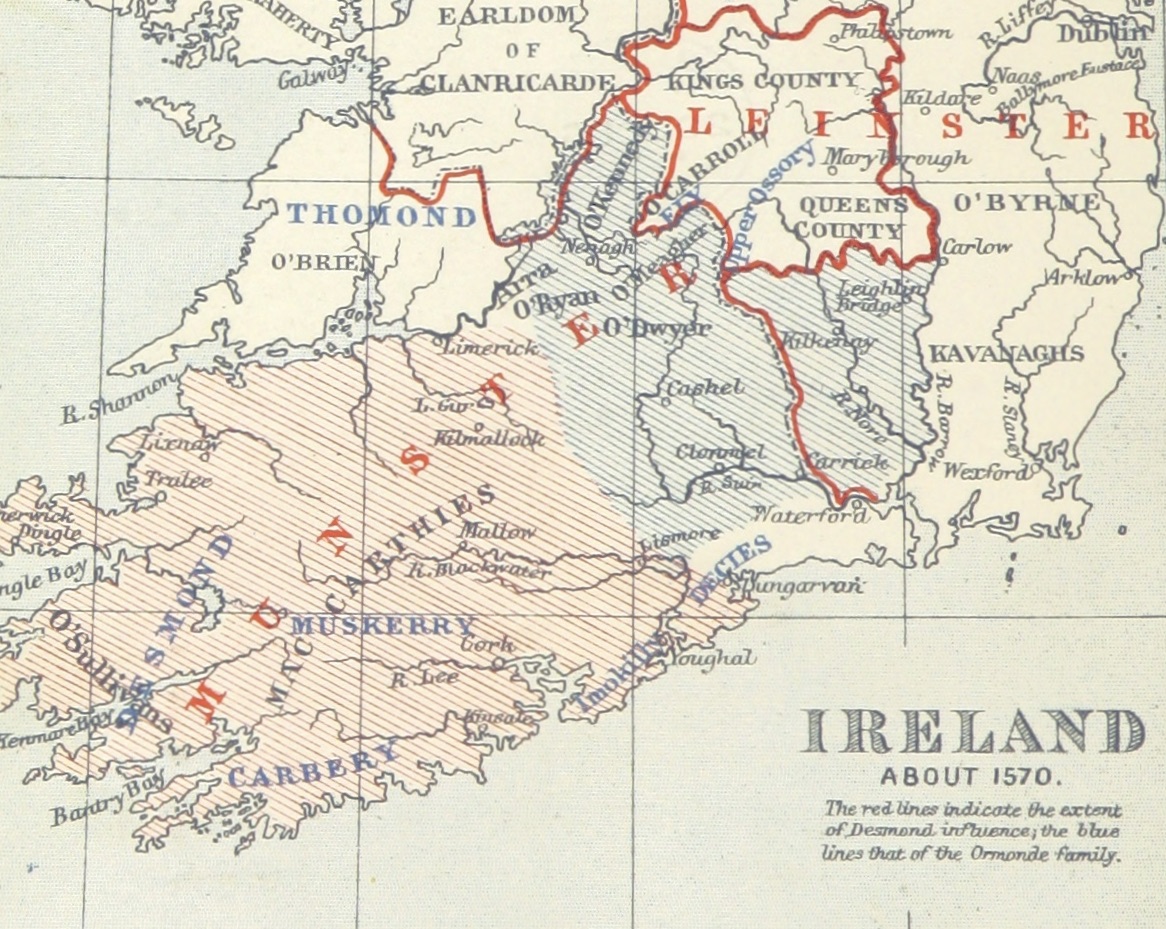


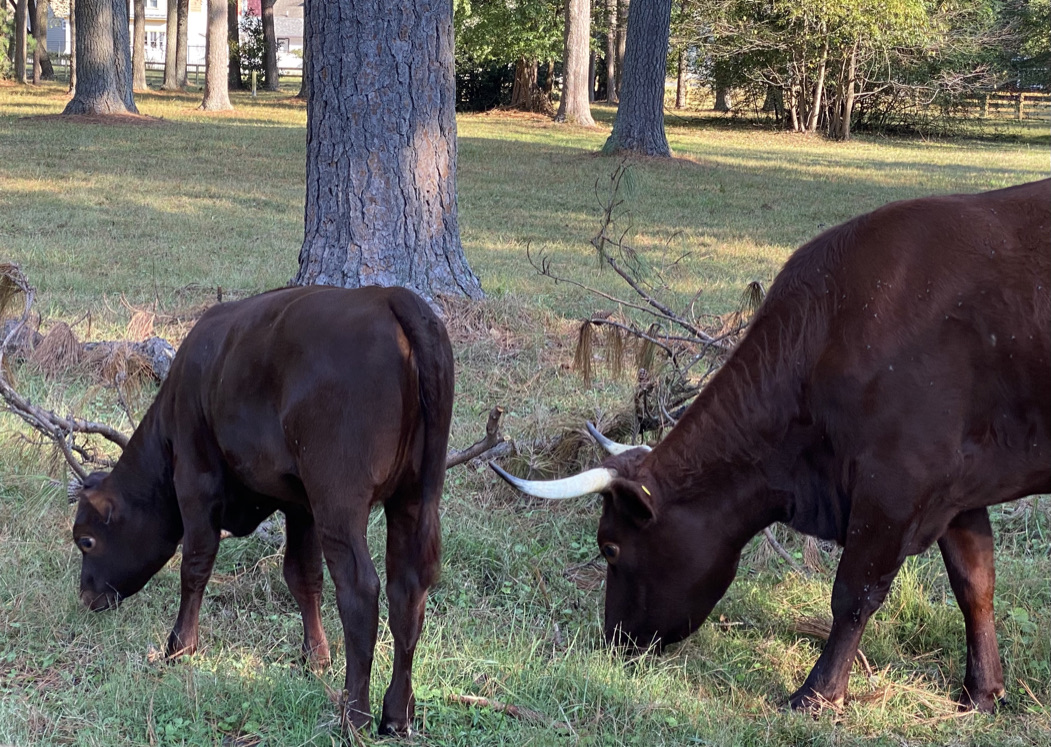 Likely inspired by them, Daniel Gookin Sr. had an approved proposal to bring cattle out of Ireland to Virginia by November 1620, and in July 1621, he asked the Council to be granted a plantation as large as was given to William Neuce. Daniel Gookin Sr. arrived in Virginia from Ireland in November 1621 on the Flying Harte to the acclaim of the Virginia Council:[5]
Likely inspired by them, Daniel Gookin Sr. had an approved proposal to bring cattle out of Ireland to Virginia by November 1620, and in July 1621, he asked the Council to be granted a plantation as large as was given to William Neuce. Daniel Gookin Sr. arrived in Virginia from Ireland in November 1621 on the Flying Harte to the acclaim of the Virginia Council:[5] 
 Good real estate often stays good real estate. The site that Daniel Gookin Sr. chose on the James River not far from the confluence with the Nansemond River is today covered by the Newport News shipyard (America’s largest industrial shipbuilder) and a terminus for the largest coal exporting site in the U.S. While nothing of Marie’s Mount remains to be found, a small window opened between 1928 and 1935 when a Newport News physician, Jerome Knowles, found a large exposed 17th century trash pit on the eroding banks of the James River in the area of Marie’s Mount. Dr. Knowles eventually donated the artifacts to Iver Noel Hume, the director of archaeology for Colonial Williamsburg, where the collection still resides. Dr. Hume noted the artifacts were from the 2nd quarter of the 17th century (the Gookin era) and stated there was “the finest group of Pisa marbled slipwares that I have seen or heard of from any other site.” The quantity and type of artifacts in this happenstance collection seemed to be in line with the presence of around 30-50 people at the Gookin site. [8]
Good real estate often stays good real estate. The site that Daniel Gookin Sr. chose on the James River not far from the confluence with the Nansemond River is today covered by the Newport News shipyard (America’s largest industrial shipbuilder) and a terminus for the largest coal exporting site in the U.S. While nothing of Marie’s Mount remains to be found, a small window opened between 1928 and 1935 when a Newport News physician, Jerome Knowles, found a large exposed 17th century trash pit on the eroding banks of the James River in the area of Marie’s Mount. Dr. Knowles eventually donated the artifacts to Iver Noel Hume, the director of archaeology for Colonial Williamsburg, where the collection still resides. Dr. Hume noted the artifacts were from the 2nd quarter of the 17th century (the Gookin era) and stated there was “the finest group of Pisa marbled slipwares that I have seen or heard of from any other site.” The quantity and type of artifacts in this happenstance collection seemed to be in line with the presence of around 30-50 people at the Gookin site. [8] 

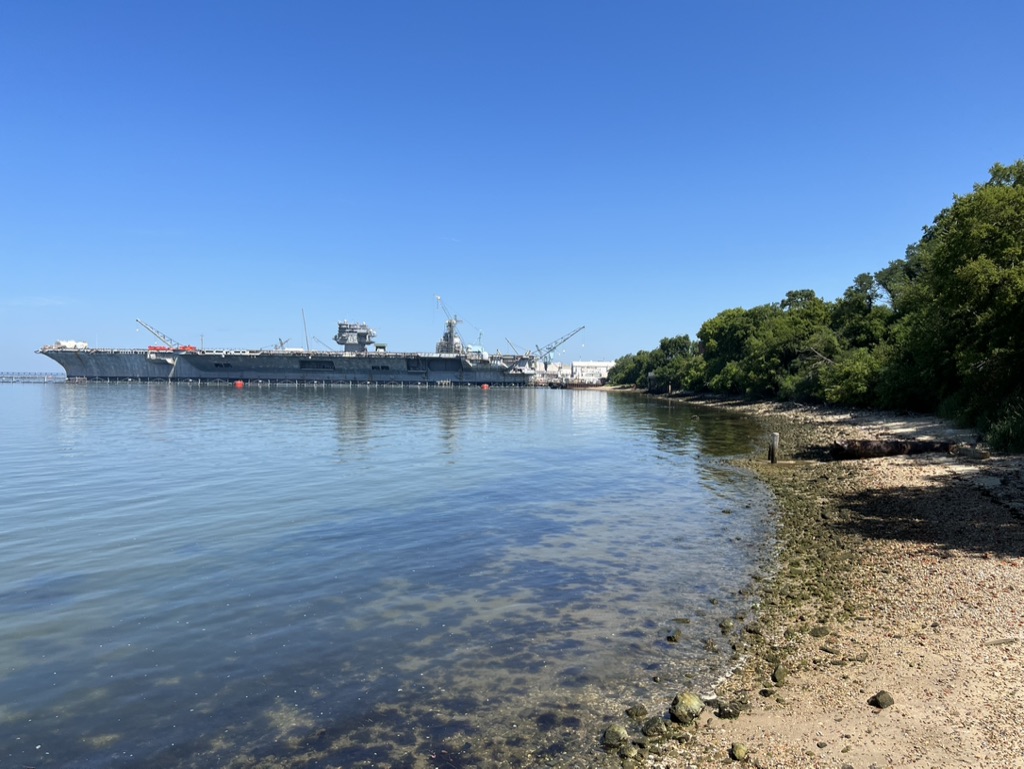


 John ultimately acquired 1490 acres, including 640 acres in Lower Norfolk County adjoining the Thorowgood estate in October 1641 after his marriage to Sarah Thorowgood. This land came to him for transporting 13 persons, which included 7 unnamed negroes. John and Daniel Gookin also patented land on the Rappahannock River along with Richard Bennett and other neighbors from the Nansemond region, although neither were resident there. [11]
John ultimately acquired 1490 acres, including 640 acres in Lower Norfolk County adjoining the Thorowgood estate in October 1641 after his marriage to Sarah Thorowgood. This land came to him for transporting 13 persons, which included 7 unnamed negroes. John and Daniel Gookin also patented land on the Rappahannock River along with Richard Bennett and other neighbors from the Nansemond region, although neither were resident there. [11] 
 While most government officials and Jamestown residents remained staunchly Anglican and tried to enforce adherence to the official religion, there were dissensions in Virginia as well as England in this pre-English Civil War era. The Munster area in Ireland that the Gookins came from was also known to have Puritan connections. Puritan influence in Virginia became particularly strong in Upper and Lower Norfolk and on the Eastern Shore. Richard Bennett, a friend and neighbor of the Gookins, went on to become the first Governor under the Puritan Commonwealth Era government.[14]
While most government officials and Jamestown residents remained staunchly Anglican and tried to enforce adherence to the official religion, there were dissensions in Virginia as well as England in this pre-English Civil War era. The Munster area in Ireland that the Gookins came from was also known to have Puritan connections. Puritan influence in Virginia became particularly strong in Upper and Lower Norfolk and on the Eastern Shore. Richard Bennett, a friend and neighbor of the Gookins, went on to become the first Governor under the Puritan Commonwealth Era government.[14] 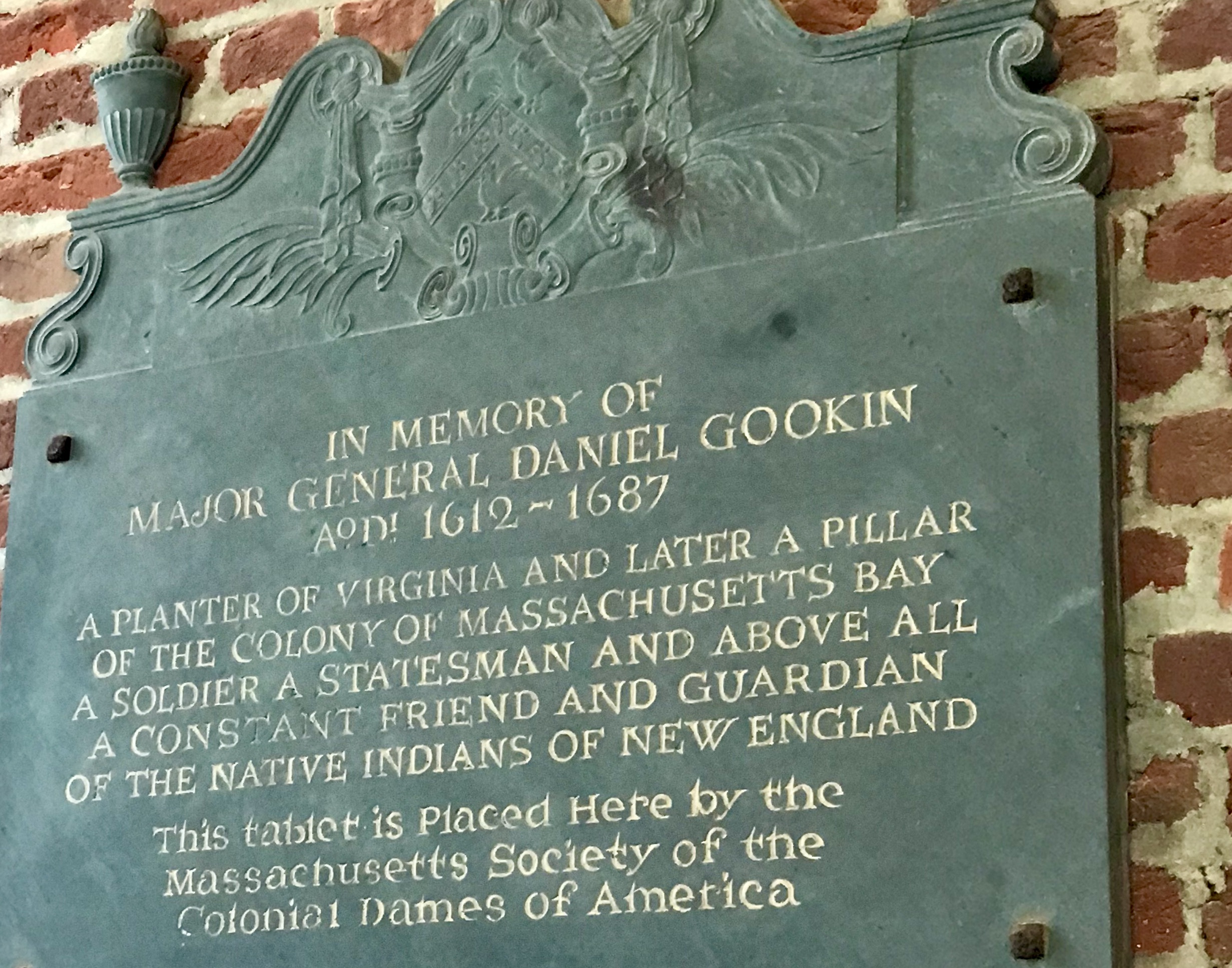

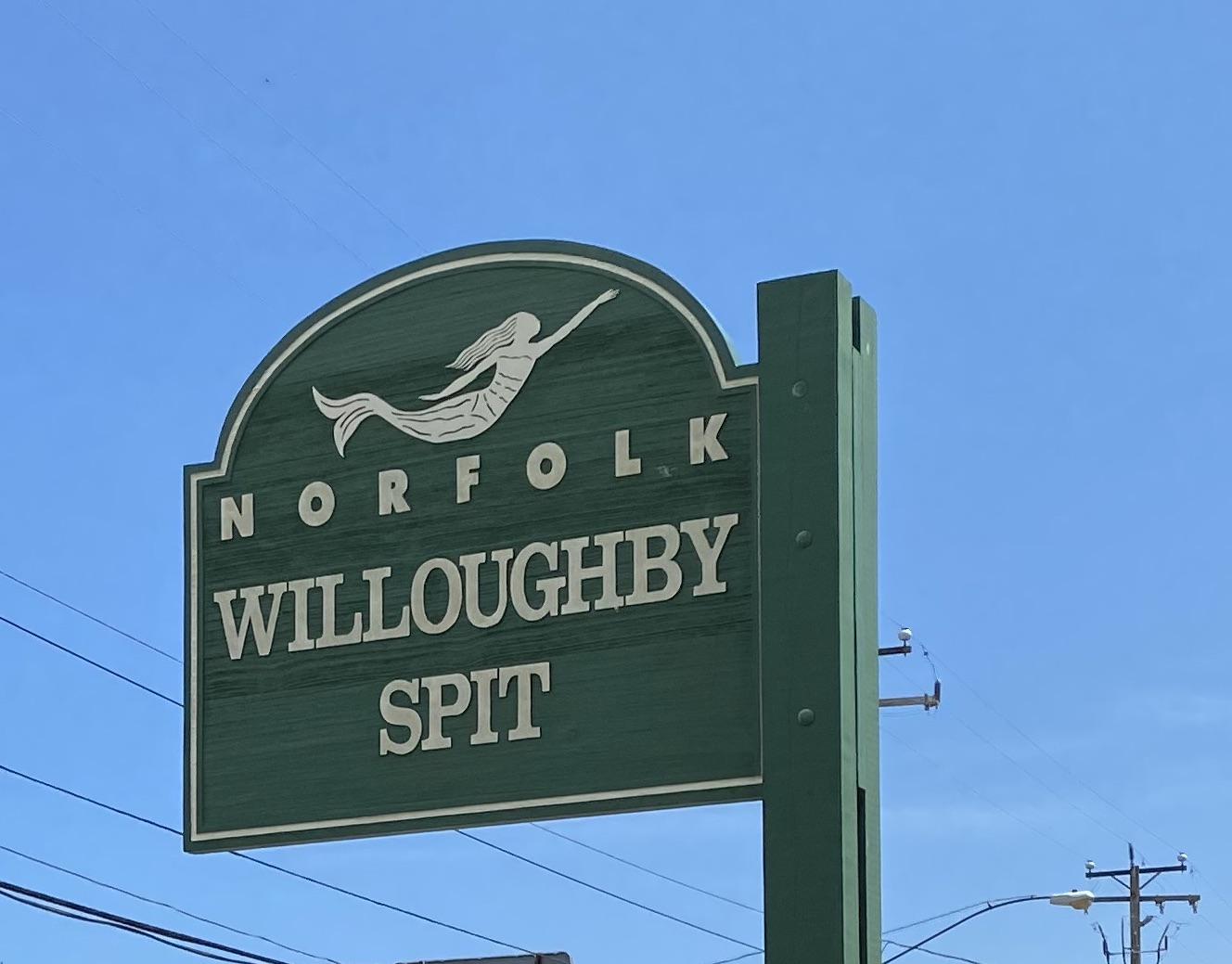 As would be expected under the legal concept of coverture, John Gookin took financial responsibility for the Thorowgood estate after the marriage. He pursued debt collection and represented the Thorowgood heirs in land matters in court. After his marriage, John stepped out of his older brother’s shadow and was quickly elevated to responsible positions and accorded increased status. Thomas Willoughby and John Gookin agreed to jointly build a store at Willoughby Point for the benefit of the community. John later was designated to provide a ferry at Lynnhaven on the lands of the Thorowgood heirs. “John Gookin’s Landing,” referred to in later deeds, was on Samuel Bennett’s Creek near the site called Ferry where the Old Donation Church was built. John was reported to represent Lower Norfolk County in the Assembly in 1640. [18]
As would be expected under the legal concept of coverture, John Gookin took financial responsibility for the Thorowgood estate after the marriage. He pursued debt collection and represented the Thorowgood heirs in land matters in court. After his marriage, John stepped out of his older brother’s shadow and was quickly elevated to responsible positions and accorded increased status. Thomas Willoughby and John Gookin agreed to jointly build a store at Willoughby Point for the benefit of the community. John later was designated to provide a ferry at Lynnhaven on the lands of the Thorowgood heirs. “John Gookin’s Landing,” referred to in later deeds, was on Samuel Bennett’s Creek near the site called Ferry where the Old Donation Church was built. John was reported to represent Lower Norfolk County in the Assembly in 1640. [18] 
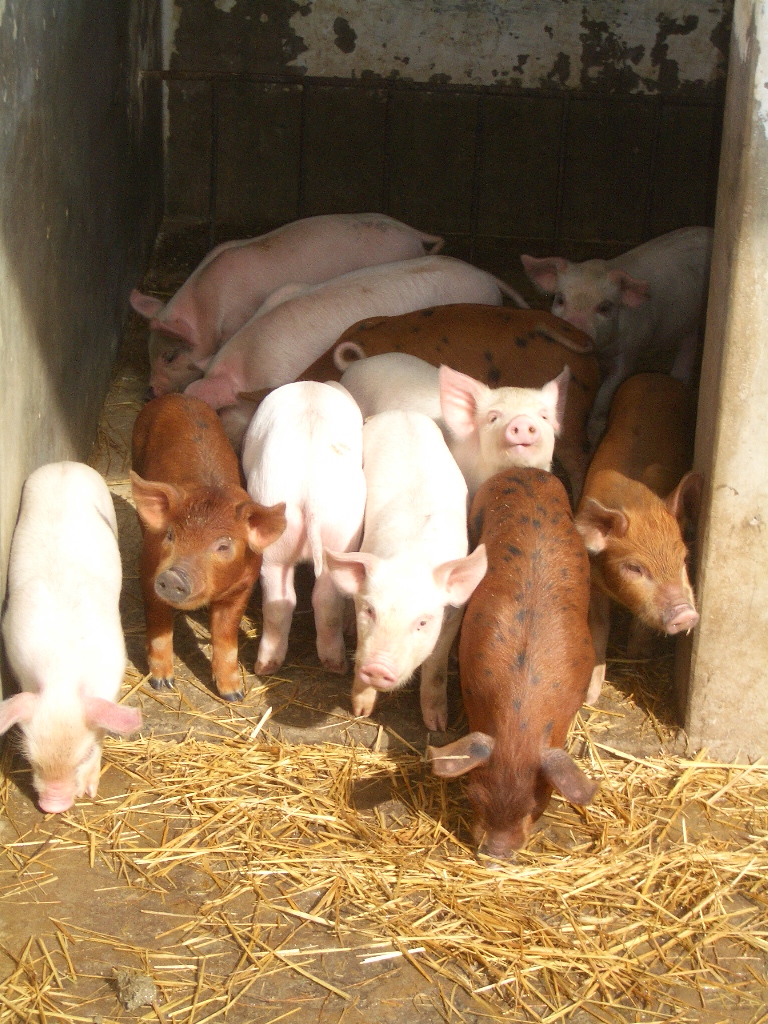 The first jury trial in Lower Norfolk County also concerned John Gookin. Whereas fellow justices generally had no qualms about passing judgment on cases involving their peers, they decided that using a jury of 12 men provided the “most equitable way” in this matter. As noted in a prior post, the hogs belonging to Capt. John Gookin escaped their pen and damaged the corn field of his neighbor Richard Foster. As Gookin had installed sturdy fencing to try to keep his hogs in and Foster had none to keep animals out, the jury found for Gookin. At that time, planters were expected to fence in their plants if they wanted to protect them from roaming animals. [20]
The first jury trial in Lower Norfolk County also concerned John Gookin. Whereas fellow justices generally had no qualms about passing judgment on cases involving their peers, they decided that using a jury of 12 men provided the “most equitable way” in this matter. As noted in a prior post, the hogs belonging to Capt. John Gookin escaped their pen and damaged the corn field of his neighbor Richard Foster. As Gookin had installed sturdy fencing to try to keep his hogs in and Foster had none to keep animals out, the jury found for Gookin. At that time, planters were expected to fence in their plants if they wanted to protect them from roaming animals. [20]  In the early years of the Jamestown Settlement, settlers had the expectation that the Indians would provide them corn, either by trade or force. The Nansemond tribe south of the James River under the paramount chiefdom of Powhatan first encountered Capt. John Smith and the English in 1608 when, under threat, they provided 400 baskets of corn. Although in the English perspective they parted good friends, hostilities increased as more demands were made for food and land. In 1609, Capt. John Martin was ordered to settle with his soldiers on Nansemond lands, but two of his advance soldiers went missing and were later found dead. After having been told that his men had been sacrificed and that “their brains had been cut and scraped out of their heads with mussel shells,” Capt. Martin ordered a complete destruction and desecration of the Nansemond’s sacred Dumpling Island. George Percy reported: [21]
In the early years of the Jamestown Settlement, settlers had the expectation that the Indians would provide them corn, either by trade or force. The Nansemond tribe south of the James River under the paramount chiefdom of Powhatan first encountered Capt. John Smith and the English in 1608 when, under threat, they provided 400 baskets of corn. Although in the English perspective they parted good friends, hostilities increased as more demands were made for food and land. In 1609, Capt. John Martin was ordered to settle with his soldiers on Nansemond lands, but two of his advance soldiers went missing and were later found dead. After having been told that his men had been sacrificed and that “their brains had been cut and scraped out of their heads with mussel shells,” Capt. Martin ordered a complete destruction and desecration of the Nansemond’s sacred Dumpling Island. George Percy reported: [21]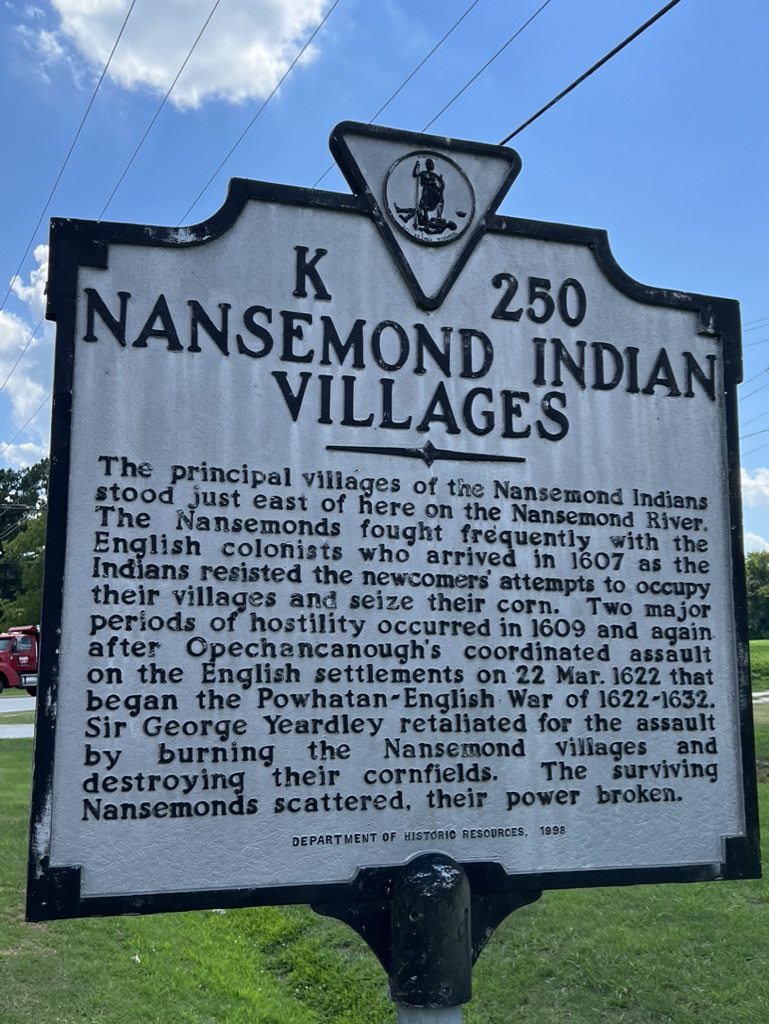 Thereafter, the English and Nansemonds were avowed enemies. The Nansemonds participated in the Powhatan uprising of 1622 and attacked Daniel Gookin Sr.’s Marie’s Mount and Edward Water’s Blount Point where they kidnapped Adam Thorowgood’s master and mistress. However, Edward Bennett’s plantation bore the brunt of that Nansemond attack with 53 dead. As noted earlier, the Nansemonds continued to periodically attack settlers at Marie’s Mount. The English sought revenge, but it was not until the late 1630s that the Nansemond threat was lessened, and they started to withdraw upriver or into the southern and northwestern branches of the Nansemond River.[22]
Thereafter, the English and Nansemonds were avowed enemies. The Nansemonds participated in the Powhatan uprising of 1622 and attacked Daniel Gookin Sr.’s Marie’s Mount and Edward Water’s Blount Point where they kidnapped Adam Thorowgood’s master and mistress. However, Edward Bennett’s plantation bore the brunt of that Nansemond attack with 53 dead. As noted earlier, the Nansemonds continued to periodically attack settlers at Marie’s Mount. The English sought revenge, but it was not until the late 1630s that the Nansemond threat was lessened, and they started to withdraw upriver or into the southern and northwestern branches of the Nansemond River.[22] 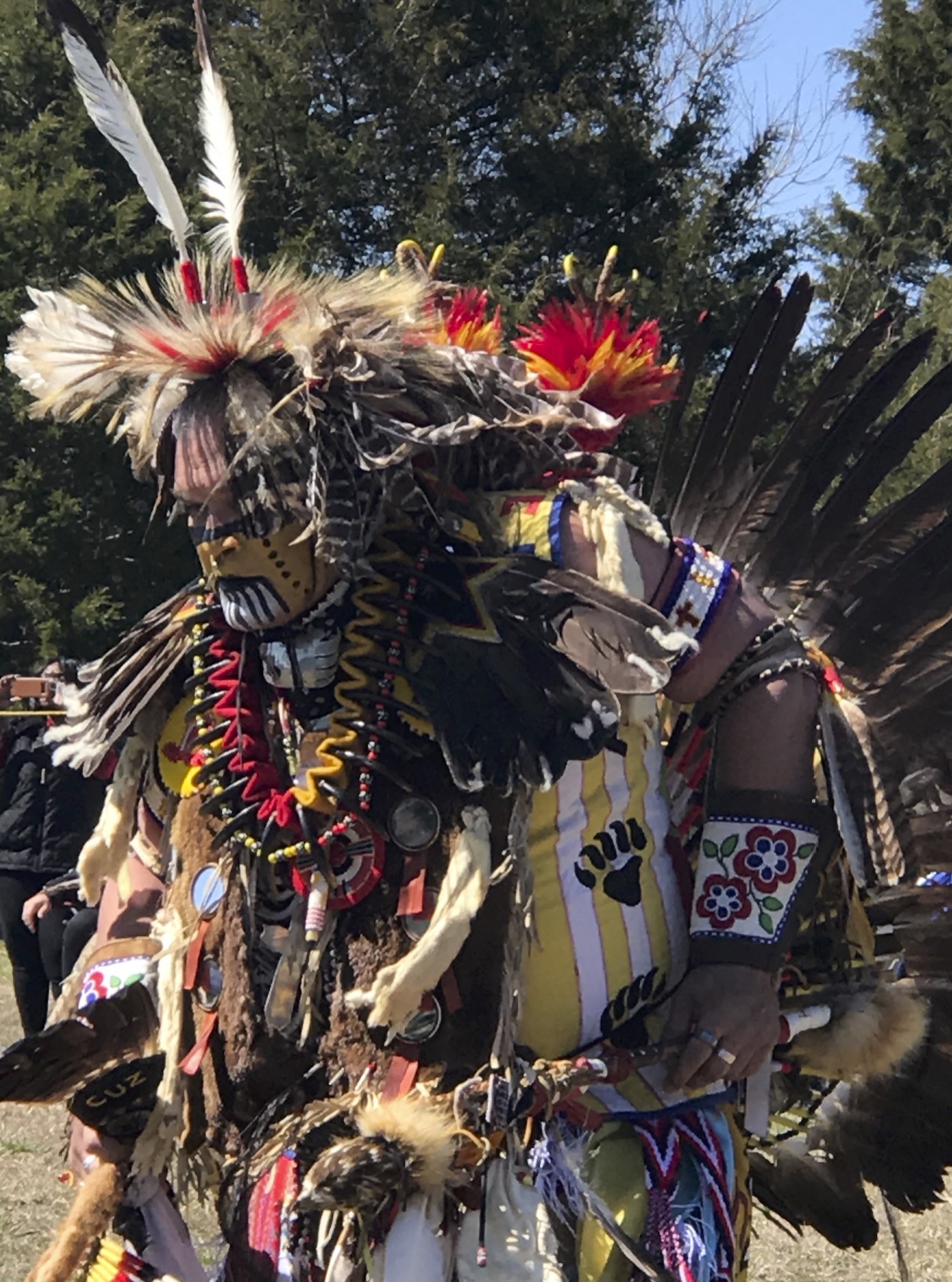
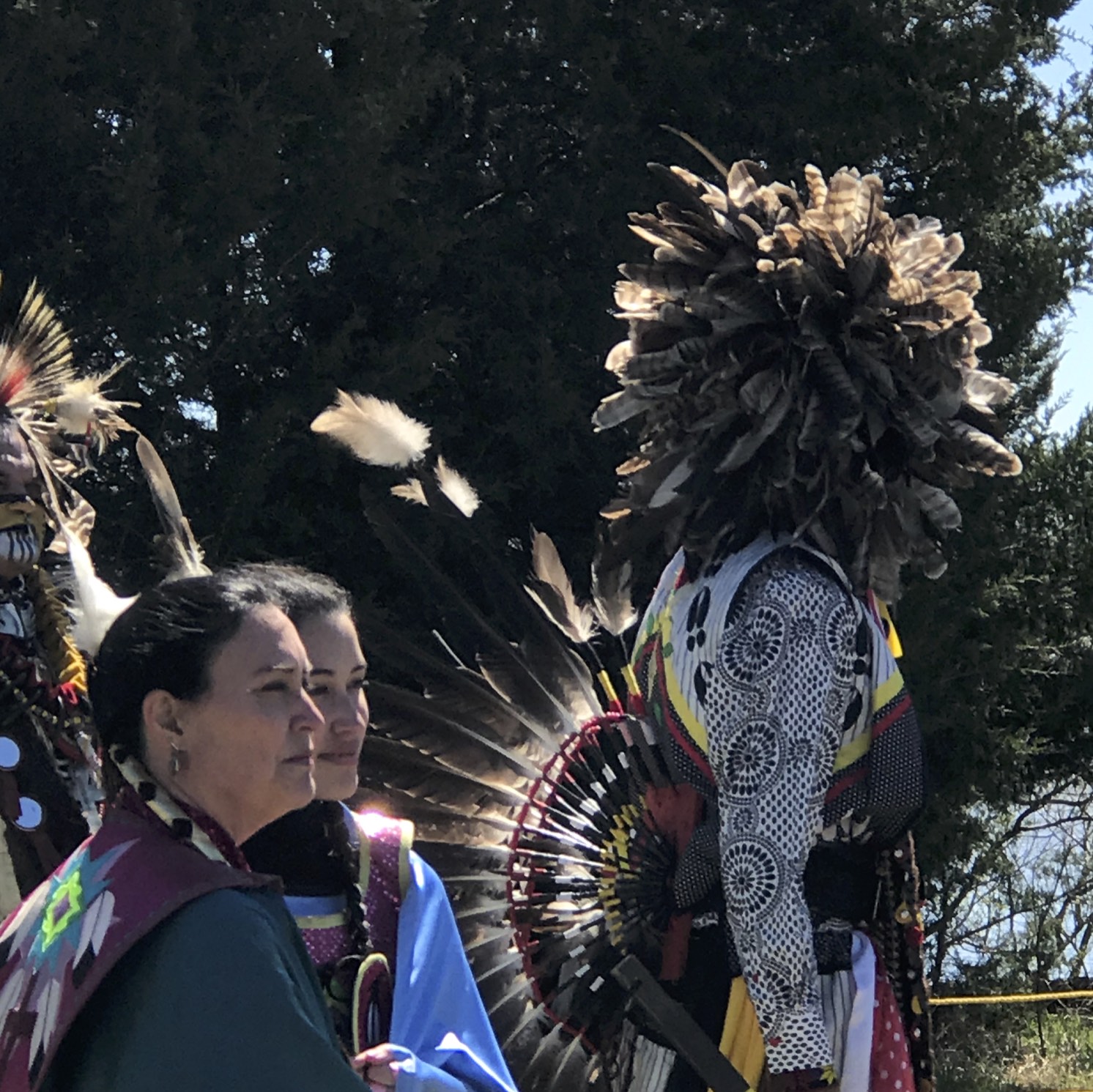

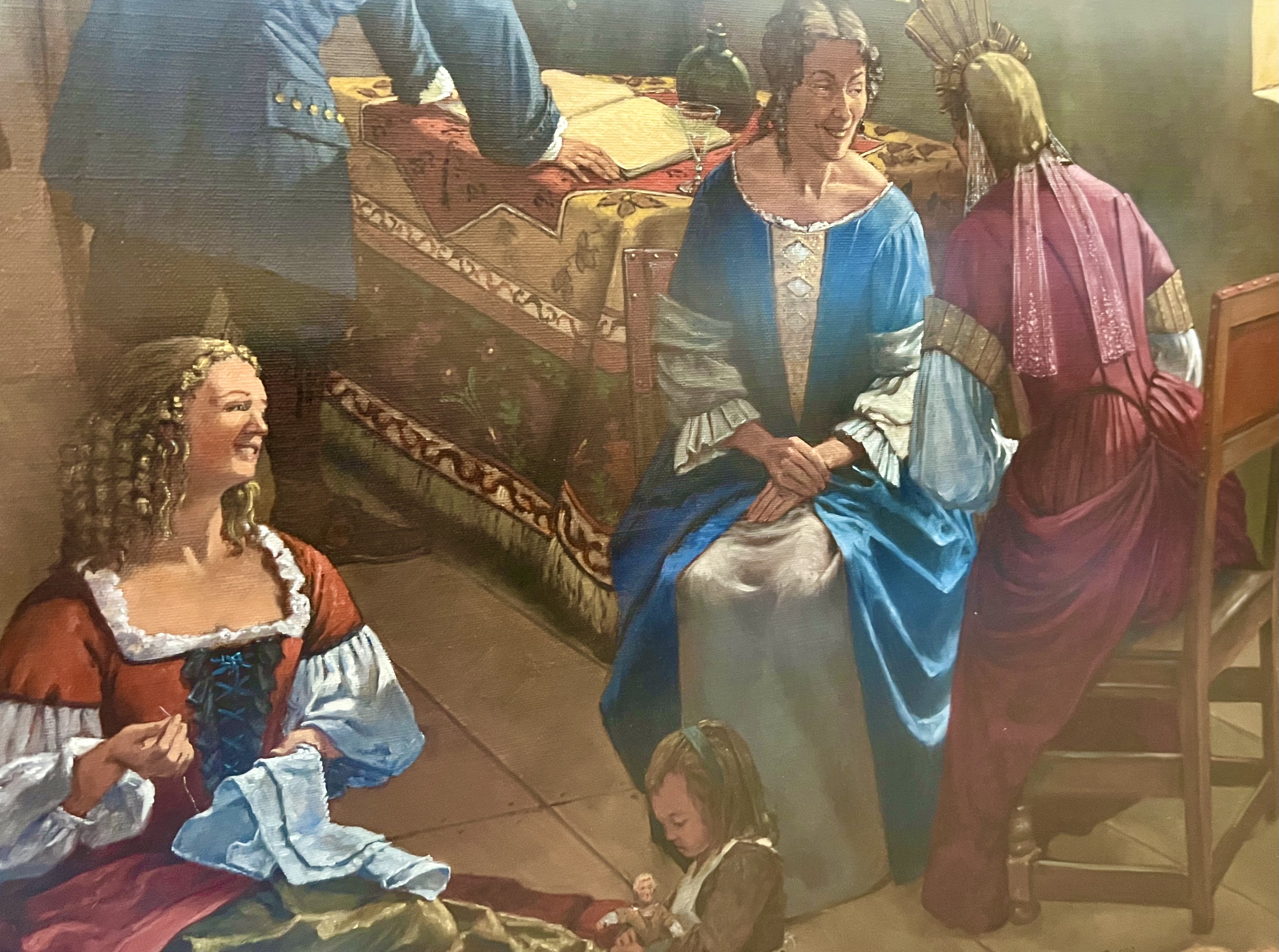

 Death was ever present in the life of 17th century Virginians. By 1640, the death rate had certainly declined since the disastrous early years of settlement. Yet, it was still much higher than in England or even New England due to disease and the conditions of the settlements. Morgan, in his study to approximate the life expectancy of those in Lower Norfolk County, estimated the average age of death at 47 years during the mid 1600s, whereas it was as long as 71 years for men in Andover, Massachusetts. Averages, though, do not tell the story of turmoil to families that resulted from shortened life expectancies, nor do they reveal unique characteristics of the Virginia population.[2]
Death was ever present in the life of 17th century Virginians. By 1640, the death rate had certainly declined since the disastrous early years of settlement. Yet, it was still much higher than in England or even New England due to disease and the conditions of the settlements. Morgan, in his study to approximate the life expectancy of those in Lower Norfolk County, estimated the average age of death at 47 years during the mid 1600s, whereas it was as long as 71 years for men in Andover, Massachusetts. Averages, though, do not tell the story of turmoil to families that resulted from shortened life expectancies, nor do they reveal unique characteristics of the Virginia population.[2]
 The kind and amount of power a woman had was largely determined by the English legal concept of coverture. A woman who was married had no legal standing as a feme covert apart from her husband. In general, any property or goods she had belonged to her husband who was in charge of all important decisions regarding their family. If a women was single (unmarried or widowed), she could, as a feme sole, own property, make contracts, and handle family decisions. In a few situations, married women were permitted to be a feme sole trader if she had a business or to act under a power of attorney if her husband was away. [4]
The kind and amount of power a woman had was largely determined by the English legal concept of coverture. A woman who was married had no legal standing as a feme covert apart from her husband. In general, any property or goods she had belonged to her husband who was in charge of all important decisions regarding their family. If a women was single (unmarried or widowed), she could, as a feme sole, own property, make contracts, and handle family decisions. In a few situations, married women were permitted to be a feme sole trader if she had a business or to act under a power of attorney if her husband was away. [4]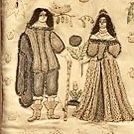 Although their overall numbers were less, women often outlived their husbands in Virginia, if they could survive childbirth. As many Virginian wives were relatively young when first widowed, a quick remarriage was common, and many experienced serial marriages, losing multiple spouses. A widow with land was a highly prized marriage “catch.” One of the powers Virginian widows exercised was control over their selection of their next marriage partner. Both men and women attempted to increase in social standing and wealth by marrying “up,” and a good match could increase the couple’s wealth and consolidate land into greater estates. Women who did not choose carefully, however, could find themselves in a worse situation if they reverted to a feme covert only to find that the new husband was irresponsible and treasure-seeking. Wise women began to use their widowed status as a feme sole to demand pre-nuptial agreements or to find ways to retain some control over what they had received from their prior marriage before tying the knot again. [5]
Although their overall numbers were less, women often outlived their husbands in Virginia, if they could survive childbirth. As many Virginian wives were relatively young when first widowed, a quick remarriage was common, and many experienced serial marriages, losing multiple spouses. A widow with land was a highly prized marriage “catch.” One of the powers Virginian widows exercised was control over their selection of their next marriage partner. Both men and women attempted to increase in social standing and wealth by marrying “up,” and a good match could increase the couple’s wealth and consolidate land into greater estates. Women who did not choose carefully, however, could find themselves in a worse situation if they reverted to a feme covert only to find that the new husband was irresponsible and treasure-seeking. Wise women began to use their widowed status as a feme sole to demand pre-nuptial agreements or to find ways to retain some control over what they had received from their prior marriage before tying the knot again. [5]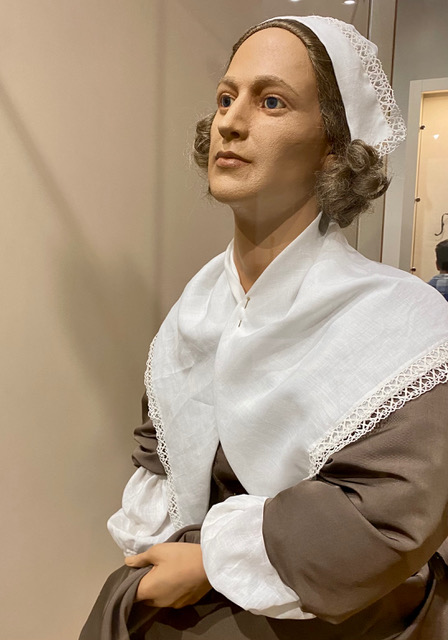
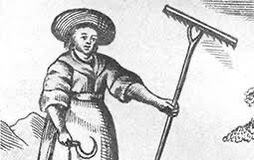 However, those widows whose husbands had been tenant farmers or were just starting out with property of their own could find themselves in serious straits if, at the time of death, it was time for planting or harvesting, and there was no one to help. As the tobacco economy frequently involved extended credit until a crop could be sold, widows might have had to settle their husband’s debts while fretting over an uncertain crop. There was also the care of small children to be considered by both young widows and widowers if they had to work in the fields. Thus, there were many pragmatic reasons for a quick remarriage and for women to willingly revert to their feme covert status. [7]
However, those widows whose husbands had been tenant farmers or were just starting out with property of their own could find themselves in serious straits if, at the time of death, it was time for planting or harvesting, and there was no one to help. As the tobacco economy frequently involved extended credit until a crop could be sold, widows might have had to settle their husband’s debts while fretting over an uncertain crop. There was also the care of small children to be considered by both young widows and widowers if they had to work in the fields. Thus, there were many pragmatic reasons for a quick remarriage and for women to willingly revert to their feme covert status. [7]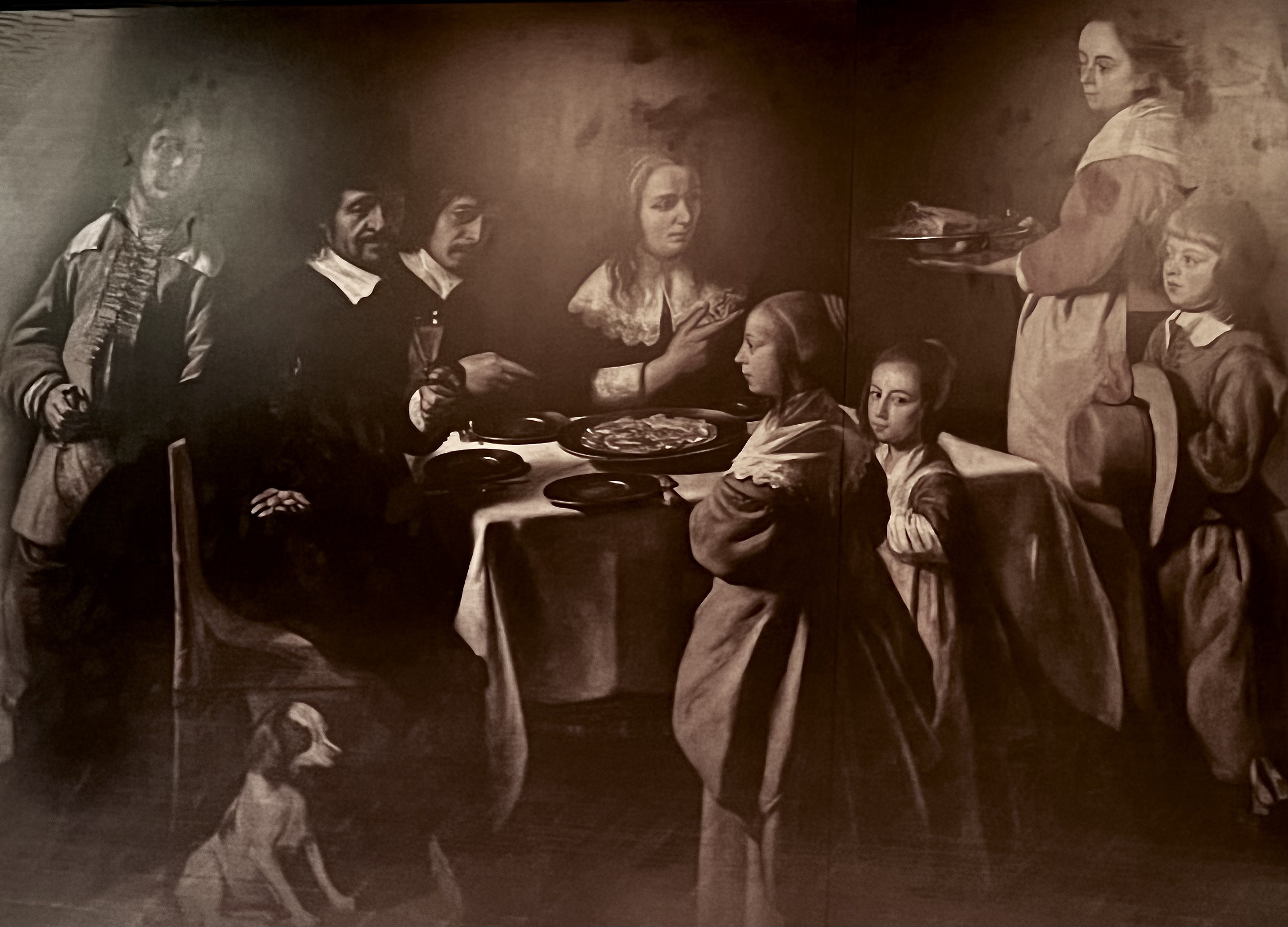
 While keeping track of inheritances could be a challenge, the emotional toll of deaths on both parents and siblings must have been great. In a study in Virginia, 73% of children had lost one parent and 30% had lost both their natural parents before they reached maturity. Even if the mother survived, children were legally considered orphans if the father had died, so the courts generally appointed guardians to oversee their care and estates. Parents had the heartbreak of not only losing spouses, but also children. In the Chesapeake area of 17th century Maryland, the death rate of infants was 25%, with 40-55% of children not reaching maturity. Deaths created a sense of impermanence in marriages and fluidity in the formation of familial ties. [9]
While keeping track of inheritances could be a challenge, the emotional toll of deaths on both parents and siblings must have been great. In a study in Virginia, 73% of children had lost one parent and 30% had lost both their natural parents before they reached maturity. Even if the mother survived, children were legally considered orphans if the father had died, so the courts generally appointed guardians to oversee their care and estates. Parents had the heartbreak of not only losing spouses, but also children. In the Chesapeake area of 17th century Maryland, the death rate of infants was 25%, with 40-55% of children not reaching maturity. Deaths created a sense of impermanence in marriages and fluidity in the formation of familial ties. [9] This incident left many unanswered questions such as why Mrs. Woodhouse wasn’t performing her wifely duty, what was the unkind usage, and whether any neighborly assistance was ever given. Clearly his wife was not meeting community expectations, and there were concerned neighbors and friends who were willing to step in. Some have speculated that Mrs. Woodhouse had left him, but on that same day in court, a complaint from Mr. Woodhouse joined with a petition from Mrs. Woodhouse asking that their run-away servant receive 20 lashes. Mrs. Woodhouse was still at home and back in court in August when a maid servant of Mr. Woodhouse was put in the Sheriff’s protective custody (where she died) after “being most unchristianlike used by her mistress.” It is unknown whether Mr. Woodhouse ever fully recovered from his illness, as he died in November 1655. Whatever tensions may have existed in their marriage, he still left his wife in his will the customary third of his moveable estate and use of his plantation until his son was of age. [12]
This incident left many unanswered questions such as why Mrs. Woodhouse wasn’t performing her wifely duty, what was the unkind usage, and whether any neighborly assistance was ever given. Clearly his wife was not meeting community expectations, and there were concerned neighbors and friends who were willing to step in. Some have speculated that Mrs. Woodhouse had left him, but on that same day in court, a complaint from Mr. Woodhouse joined with a petition from Mrs. Woodhouse asking that their run-away servant receive 20 lashes. Mrs. Woodhouse was still at home and back in court in August when a maid servant of Mr. Woodhouse was put in the Sheriff’s protective custody (where she died) after “being most unchristianlike used by her mistress.” It is unknown whether Mr. Woodhouse ever fully recovered from his illness, as he died in November 1655. Whatever tensions may have existed in their marriage, he still left his wife in his will the customary third of his moveable estate and use of his plantation until his son was of age. [12]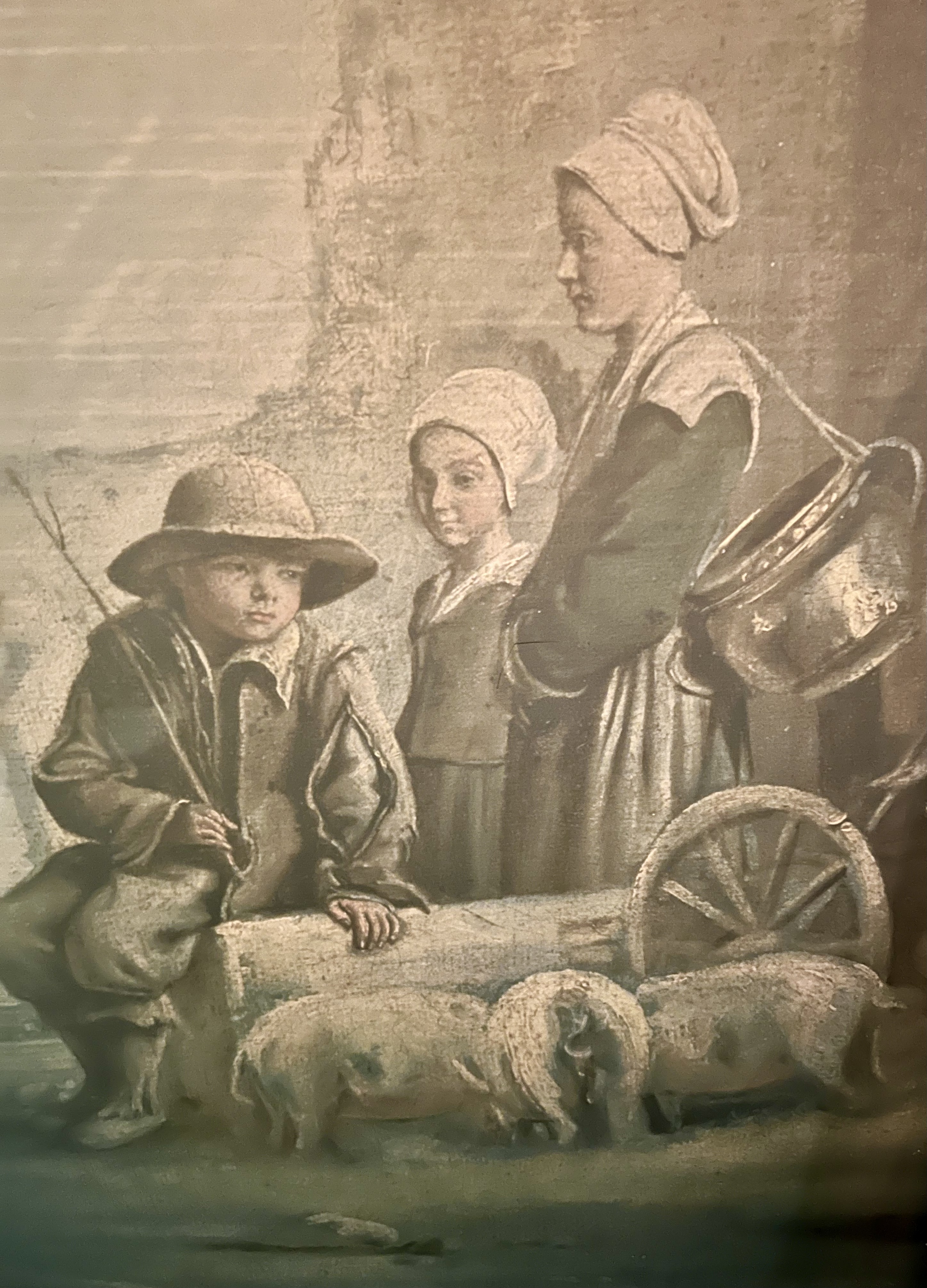 However, Mrs. Woodhouse Batts might have soon wished for her prior husband, for she had not chosen well. Being foresworn not to use his wife’s inheritance, he tried to use that of his stepchildren. In January 1656/7, only eight months after their marriage, Mary Batts was back in court with a petition because her husband “contrary to her expectation, destroys, spends, and consumes the estate left her children by her late husband.” No court action was recorded, but courts usually moved to preserve children’s inheritances. The situation of Mrs. Batts and her children, though, only got worse with apparently little financial support provided by her new husband. Two years later, she returned to court asking to sell two of the biggest steers which were in the children’s inheritances because her Woodhouse children “are in great want of clothes and other necessaries.” The court allowed them to be sold as long as they were replaced with two young steers. Despite the struggles under their stepfather, the Woodhouse children did finally receive their inheritances, marry well, and become prominent in the community. [13]
However, Mrs. Woodhouse Batts might have soon wished for her prior husband, for she had not chosen well. Being foresworn not to use his wife’s inheritance, he tried to use that of his stepchildren. In January 1656/7, only eight months after their marriage, Mary Batts was back in court with a petition because her husband “contrary to her expectation, destroys, spends, and consumes the estate left her children by her late husband.” No court action was recorded, but courts usually moved to preserve children’s inheritances. The situation of Mrs. Batts and her children, though, only got worse with apparently little financial support provided by her new husband. Two years later, she returned to court asking to sell two of the biggest steers which were in the children’s inheritances because her Woodhouse children “are in great want of clothes and other necessaries.” The court allowed them to be sold as long as they were replaced with two young steers. Despite the struggles under their stepfather, the Woodhouse children did finally receive their inheritances, marry well, and become prominent in the community. [13] While there were many complexities in being a Virginian widow, there was also power as a feme sole for those willing to grasp it. In 17th century Virginia, it was common for a husband to make his wife and mother of their young children the executrix of his will as she best knew their situation. This allowed her some control over when and how payments were made to claimants within the dictates of the will. Whereas England and New England had moved to restrict the customary widow’s 1/3 inheritance to just personal property, Virginia and Maryland allowed a more generous legacy in both personal and real property.
While there were many complexities in being a Virginian widow, there was also power as a feme sole for those willing to grasp it. In 17th century Virginia, it was common for a husband to make his wife and mother of their young children the executrix of his will as she best knew their situation. This allowed her some control over when and how payments were made to claimants within the dictates of the will. Whereas England and New England had moved to restrict the customary widow’s 1/3 inheritance to just personal property, Virginia and Maryland allowed a more generous legacy in both personal and real property.
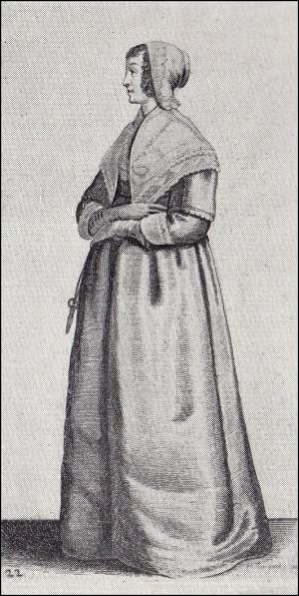 So many women who came to Virginia left little or no record of their lives. Not being able to connect Sarah Taylor with a husband or children, one can only wonder what brought her to the colony and when she became a widow. The inventory that was taken for the Lower Norfolk County Court at her death in November 1640 gives a more personal glimpse into a fashionable woman’s wardrobe than is usually found in inventories. It can be surmised she was then living in someone’s house as she had only her small “seabed” with pillows and bedding and 2 spoons as household items. Yet, Sarah Taylor had 5 smocks, wearing linen (undergarments?), 2 gowns with petticoats and waistcoats in addition to a silk gown with a “taffity” petticoat, shoes and stockings, 2 pairs of gloves, a hat, and a sea-green apron. Rarely is color mentioned in inventories, so it must have been impressive to the gentlemen who inventoried. She also had a looking glass (mirror) and comb and brush as well as thread and a smoothing iron. Maybe she had been a seamstress or a mantua (dress) maker, though all her items were recorded as old with nothing newly made. What dreams did she bring to Virginia along with those gowns? I hope she had occasion to wear her silk gown, taffity petticoat, and sea green apron in Virginia before she died. [16]
So many women who came to Virginia left little or no record of their lives. Not being able to connect Sarah Taylor with a husband or children, one can only wonder what brought her to the colony and when she became a widow. The inventory that was taken for the Lower Norfolk County Court at her death in November 1640 gives a more personal glimpse into a fashionable woman’s wardrobe than is usually found in inventories. It can be surmised she was then living in someone’s house as she had only her small “seabed” with pillows and bedding and 2 spoons as household items. Yet, Sarah Taylor had 5 smocks, wearing linen (undergarments?), 2 gowns with petticoats and waistcoats in addition to a silk gown with a “taffity” petticoat, shoes and stockings, 2 pairs of gloves, a hat, and a sea-green apron. Rarely is color mentioned in inventories, so it must have been impressive to the gentlemen who inventoried. She also had a looking glass (mirror) and comb and brush as well as thread and a smoothing iron. Maybe she had been a seamstress or a mantua (dress) maker, though all her items were recorded as old with nothing newly made. What dreams did she bring to Virginia along with those gowns? I hope she had occasion to wear her silk gown, taffity petticoat, and sea green apron in Virginia before she died. [16] This discussion has obviously been about colonial white women. Tragically, enslaved Blacks lived in a permanent state of impermanency, never knowing when their families might be separated. Being considered among the “property” that created wealth, their marriages, if allowed, were not recognized, nor were their family ties respected. The death of a master created anxiety as to whether they would be sold or separated. They were denied the most basic of freedoms and powers. Their sorrows were unfathomable.[17]
This discussion has obviously been about colonial white women. Tragically, enslaved Blacks lived in a permanent state of impermanency, never knowing when their families might be separated. Being considered among the “property” that created wealth, their marriages, if allowed, were not recognized, nor were their family ties respected. The death of a master created anxiety as to whether they would be sold or separated. They were denied the most basic of freedoms and powers. Their sorrows were unfathomable.[17] Because of the unique circumstances in 17th century Virginia, there was need for English women to assume greater responsibilities and to act with greater autonomy than elsewhere. However, as society became more stable, life expectancies extended, and the colony moved into the 18th century, a number of scholars have noted that the power and freedom given to women, especially widows, began to decrease. Sons, rather than wives, were made executors, women’s presence in the courts decreased, and widows’ opportunities to control property diminished. Linda Sturtz noted: “Seventeenth-century Virginia culture made space for self-willed women.” Sarah Thorowgood Gookin Yeardley was one of the brave women who filled that space. [19]
Because of the unique circumstances in 17th century Virginia, there was need for English women to assume greater responsibilities and to act with greater autonomy than elsewhere. However, as society became more stable, life expectancies extended, and the colony moved into the 18th century, a number of scholars have noted that the power and freedom given to women, especially widows, began to decrease. Sons, rather than wives, were made executors, women’s presence in the courts decreased, and widows’ opportunities to control property diminished. Linda Sturtz noted: “Seventeenth-century Virginia culture made space for self-willed women.” Sarah Thorowgood Gookin Yeardley was one of the brave women who filled that space. [19]
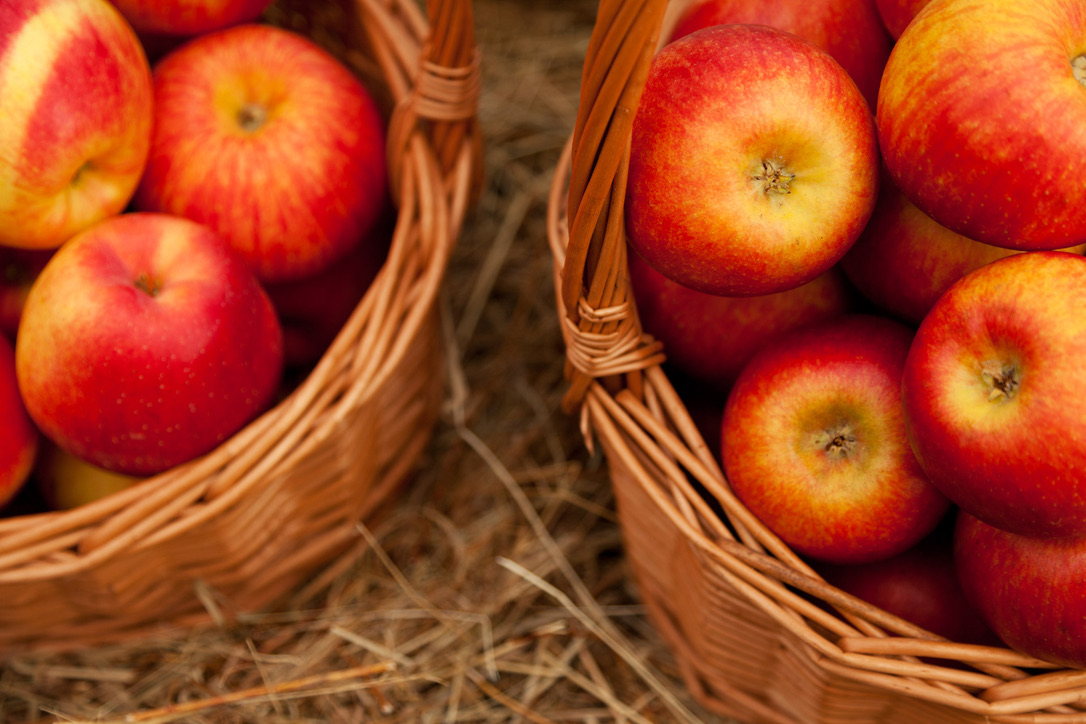 At the end of her letter, Sarah included a postscript addressed to Thomas Ivy, the High Sheriff who delivered her letter: “My respects to yourself and wife most kindly remembered to whom I have sent a small basket of apples.” There is no physical portrait or description of Sarah, and attempting to draw her personality portrait also has its limitations. Sarah could easily be judged litigious by her number of court cases, but not knowing the number of apple baskets she gave away makes it hard to know if she was also kind and generous to friends.[4]
At the end of her letter, Sarah included a postscript addressed to Thomas Ivy, the High Sheriff who delivered her letter: “My respects to yourself and wife most kindly remembered to whom I have sent a small basket of apples.” There is no physical portrait or description of Sarah, and attempting to draw her personality portrait also has its limitations. Sarah could easily be judged litigious by her number of court cases, but not knowing the number of apple baskets she gave away makes it hard to know if she was also kind and generous to friends.[4]
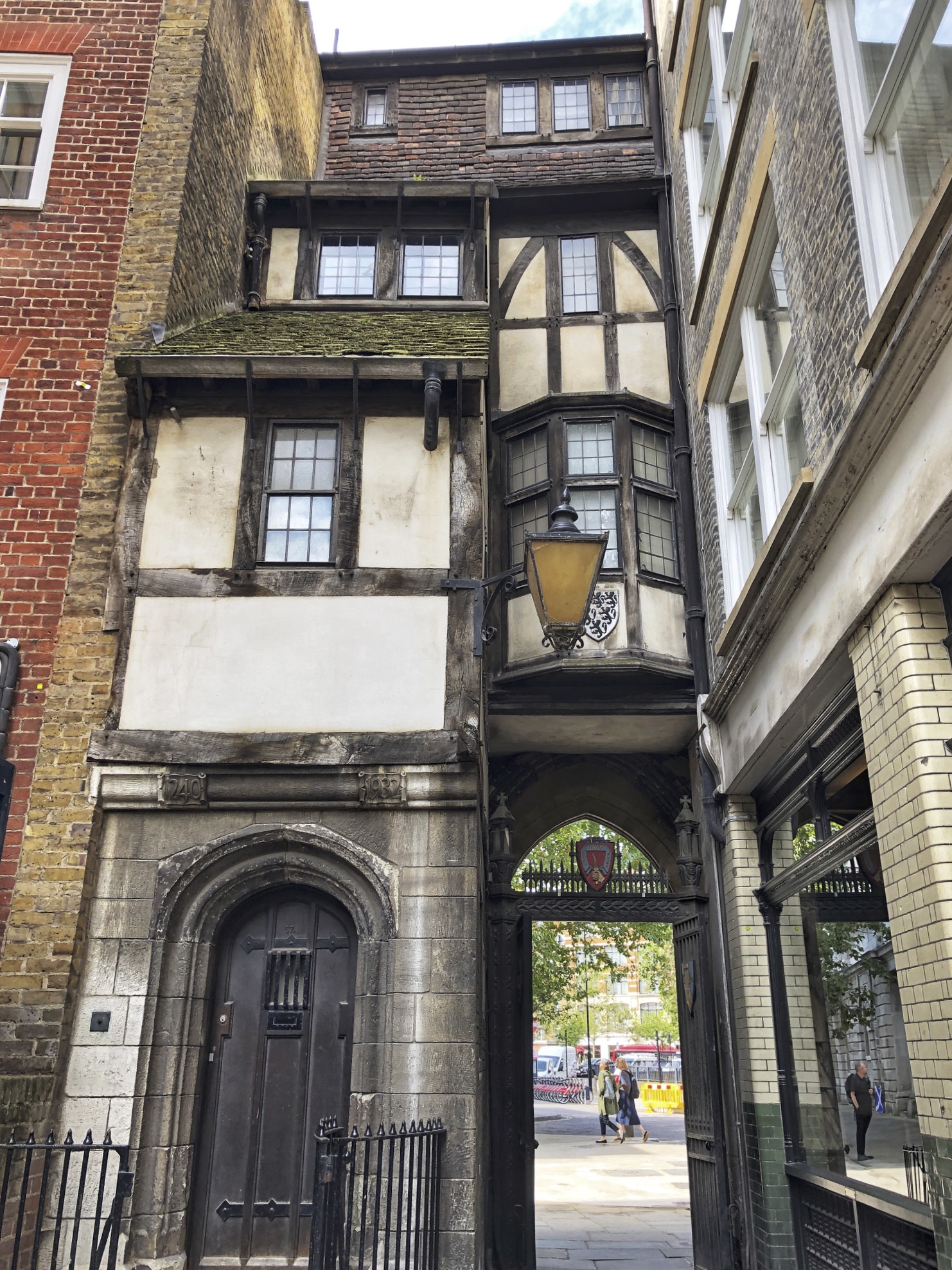
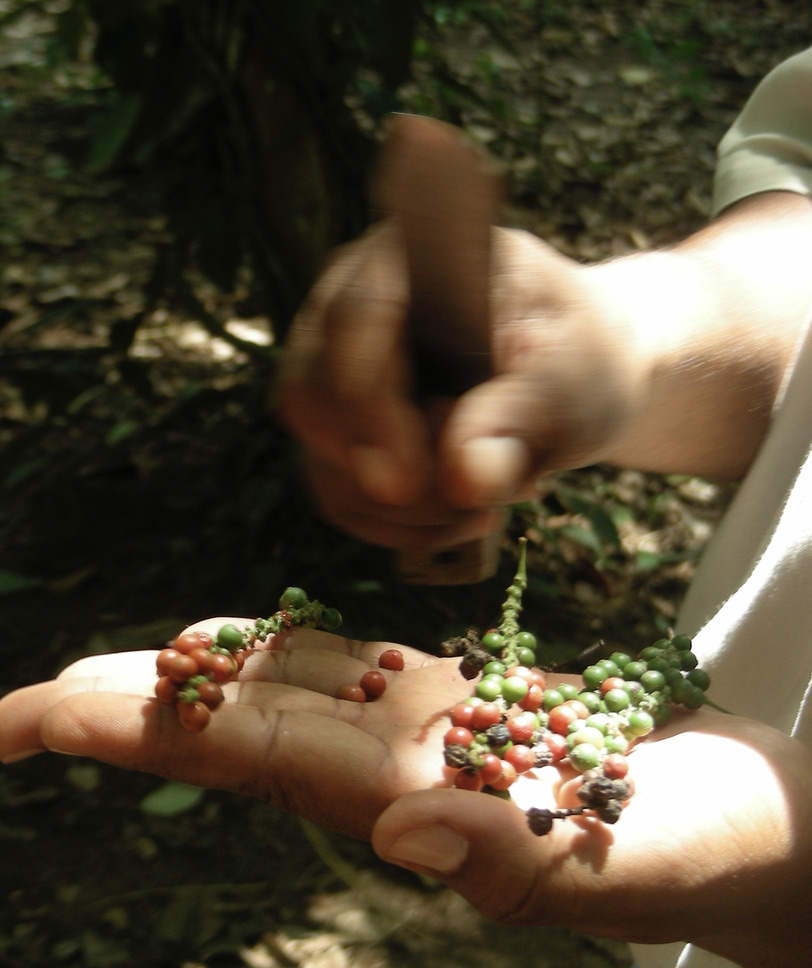
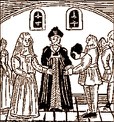 Key questions prompting the initiation of this blog were how Sarah Offley and Adam Thorowgood got together and why she left her comfortable life to come to Virginia. In an earlier post, it was noted that there were no connections between their fathers, Thorowgood being a minister in Norfolk and Offley a merchant in London and both having died while Adam was serving his indentureship in Virginia. It was more likely that Sarah and Adam’s older brothers had a part in connecting them or at least giving approval for the match of 23-year-old Adam and 18-year-old Sarah in 1627. Sarah, with her considerable dowery and family connections, likely would have had other prospects and could have lived a predictable and comfortable life in England. Yet, something attracted her to adventuresome Adam when he returned to England and excited her about a more challenging and uncertain life far away from family. See prior
Key questions prompting the initiation of this blog were how Sarah Offley and Adam Thorowgood got together and why she left her comfortable life to come to Virginia. In an earlier post, it was noted that there were no connections between their fathers, Thorowgood being a minister in Norfolk and Offley a merchant in London and both having died while Adam was serving his indentureship in Virginia. It was more likely that Sarah and Adam’s older brothers had a part in connecting them or at least giving approval for the match of 23-year-old Adam and 18-year-old Sarah in 1627. Sarah, with her considerable dowery and family connections, likely would have had other prospects and could have lived a predictable and comfortable life in England. Yet, something attracted her to adventuresome Adam when he returned to England and excited her about a more challenging and uncertain life far away from family. See prior 
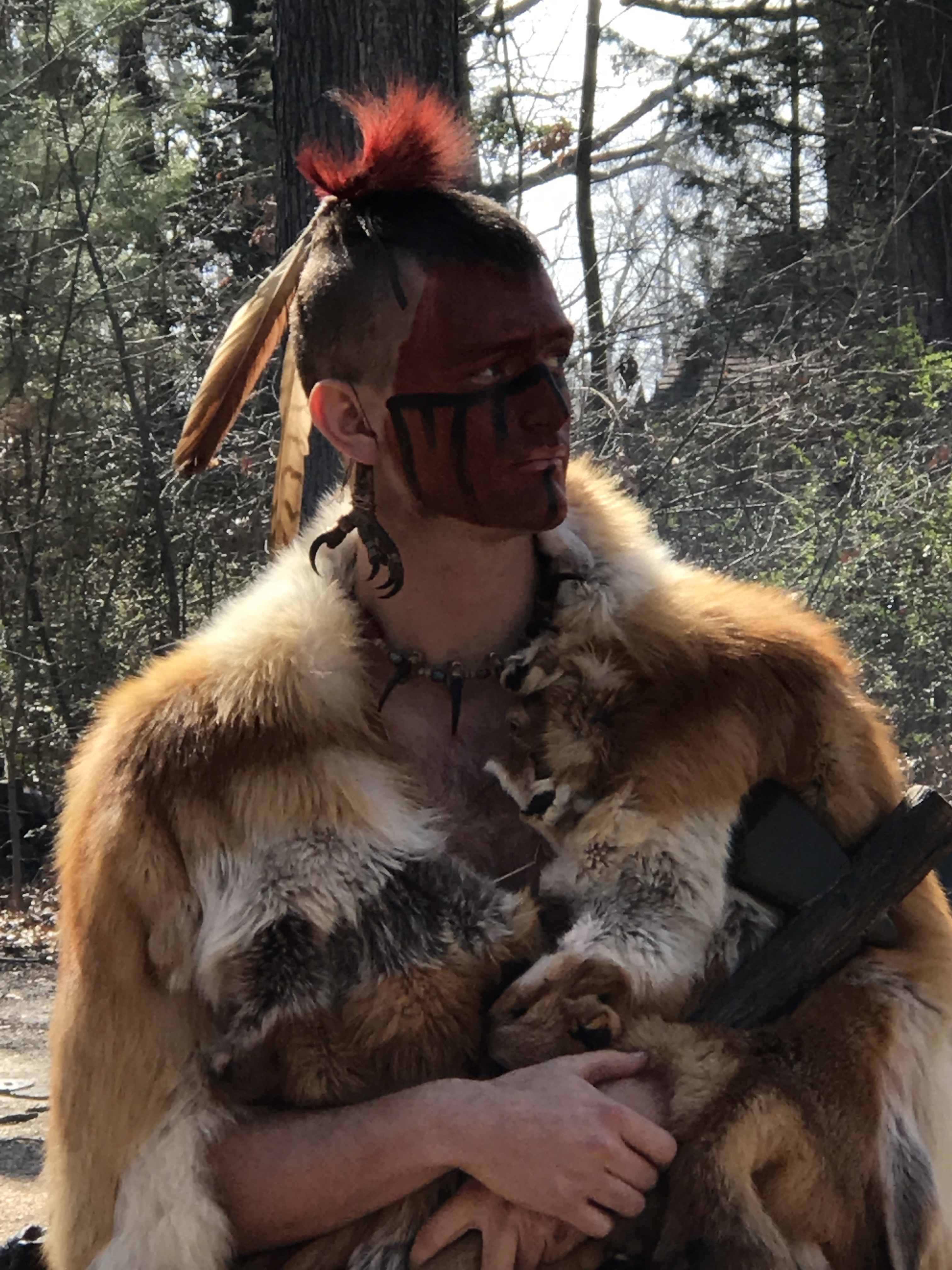 These traits were evident in an event near the end of Sarah’s life. It appeared to be with pride that her third husband, Frances Yeardley, wrote on May 8, 1654 of the following incident to John Ferrar, Esq., the former treasurer of the Virginia Company in London. More context and detail will be given in a future post. Francis had befriended a native tribe in North Carolina and invited its chief to visit him in Virginia. The chief accepted the invitation, but when he appeared with his great men, Francis was away conducting business in Maryland. The coming of the chief created concern and displeasure among Sarah Yeardley’s neighbors. Not one to be intimidated by native peoples or neighbors, Sarah acted boldly and took the situation literally in hand. Francis wrote:[15]
These traits were evident in an event near the end of Sarah’s life. It appeared to be with pride that her third husband, Frances Yeardley, wrote on May 8, 1654 of the following incident to John Ferrar, Esq., the former treasurer of the Virginia Company in London. More context and detail will be given in a future post. Francis had befriended a native tribe in North Carolina and invited its chief to visit him in Virginia. The chief accepted the invitation, but when he appeared with his great men, Francis was away conducting business in Maryland. The coming of the chief created concern and displeasure among Sarah Yeardley’s neighbors. Not one to be intimidated by native peoples or neighbors, Sarah acted boldly and took the situation literally in hand. Francis wrote:[15]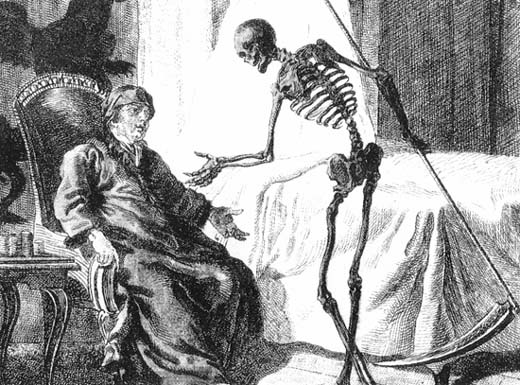
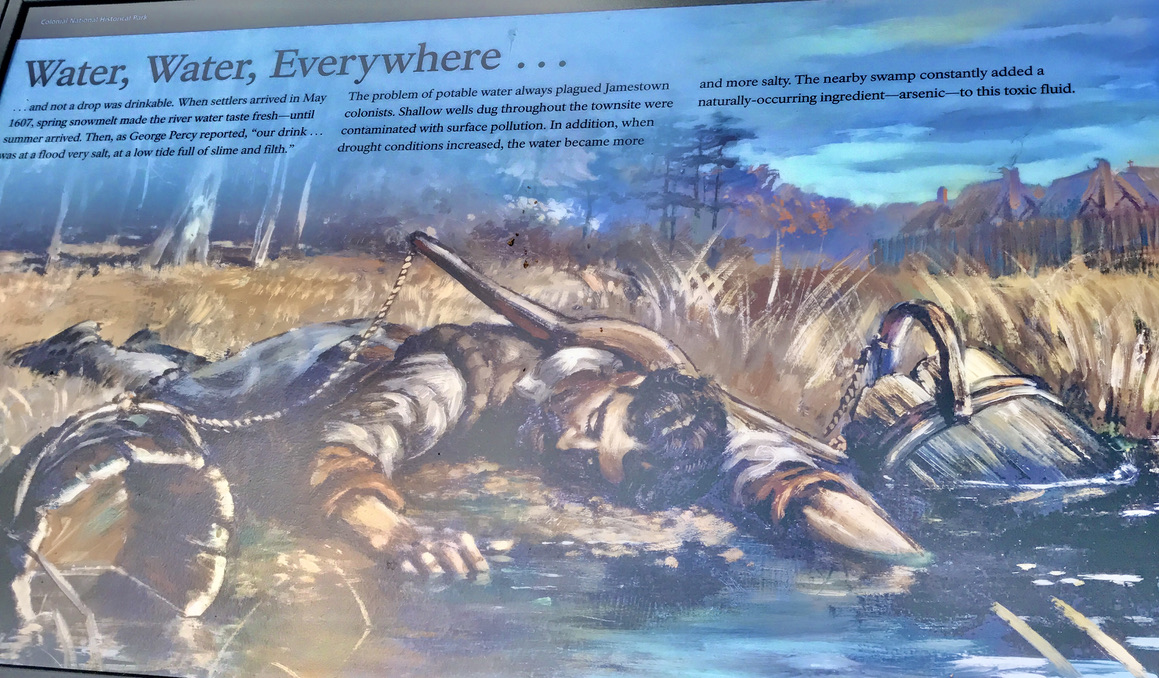
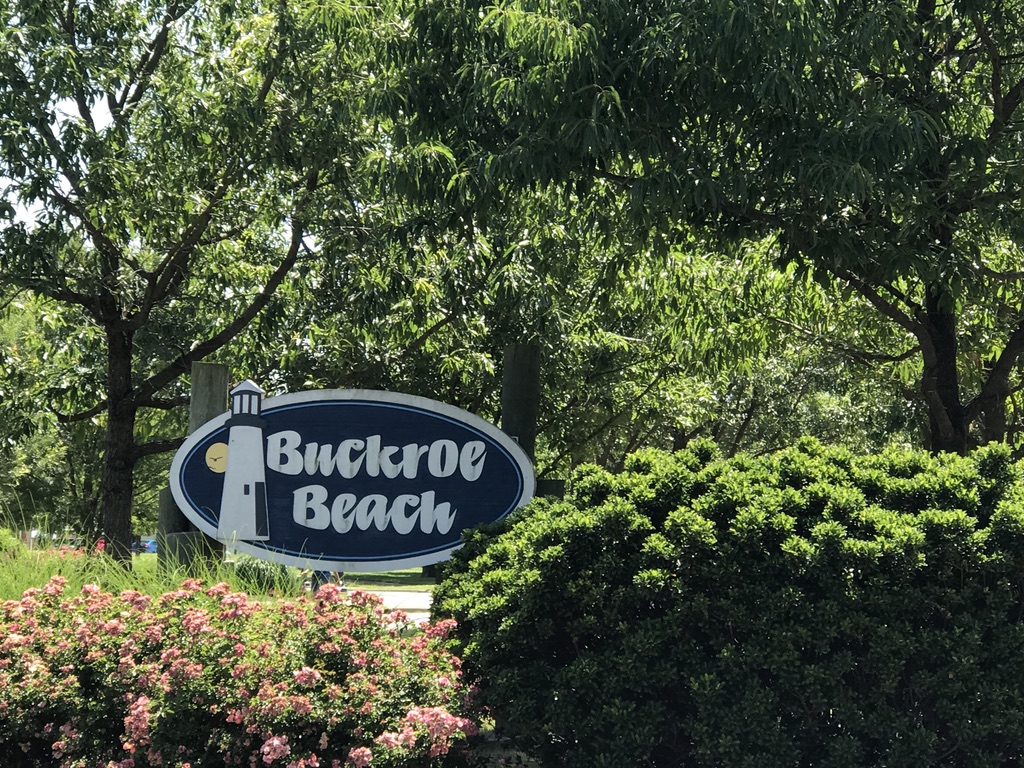 In 1610, Dr Lawrence Bohune was the first English physician sent to the Virginia Colony. Dr. John Pott was sent to replace him in 1620, but few trained doctors followed in subsequent years. Physician services were so expensive that the General Assembly noted in 1639 the “immoderate and excessive rates and prices exacted by practitioners in physick and chyrurgery.”. Most Virginians tried herbs and remedies on their own, sometimes seeking out a surgeon instead of a physician as they were cheaper, though not as well regarded or trained. Despite their political differences, Gov. John Harvey even asked the English courts to overturn a 1630 Virginia court conviction of Dr. Pott because he was “the only physician in Virginia skilled in epidemical diseases” at the time. In 1639/40 when Adam became ill, Dr. Pott had moved to the area that would become Williamsburg, but a new physician, Dr. George Calvert, had arrived who was acquiring land using his headrights in the Buckroe area of Elizabeth City. Dr. Calvert was called upon to treat Adam. [4] When Adam’s estate was being settled in April 1641, it was noted in the James City Quarter Court that
In 1610, Dr Lawrence Bohune was the first English physician sent to the Virginia Colony. Dr. John Pott was sent to replace him in 1620, but few trained doctors followed in subsequent years. Physician services were so expensive that the General Assembly noted in 1639 the “immoderate and excessive rates and prices exacted by practitioners in physick and chyrurgery.”. Most Virginians tried herbs and remedies on their own, sometimes seeking out a surgeon instead of a physician as they were cheaper, though not as well regarded or trained. Despite their political differences, Gov. John Harvey even asked the English courts to overturn a 1630 Virginia court conviction of Dr. Pott because he was “the only physician in Virginia skilled in epidemical diseases” at the time. In 1639/40 when Adam became ill, Dr. Pott had moved to the area that would become Williamsburg, but a new physician, Dr. George Calvert, had arrived who was acquiring land using his headrights in the Buckroe area of Elizabeth City. Dr. Calvert was called upon to treat Adam. [4] When Adam’s estate was being settled in April 1641, it was noted in the James City Quarter Court that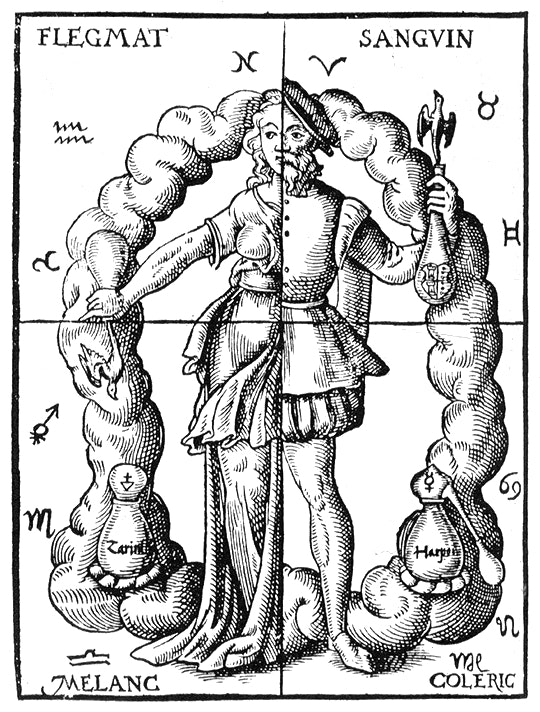
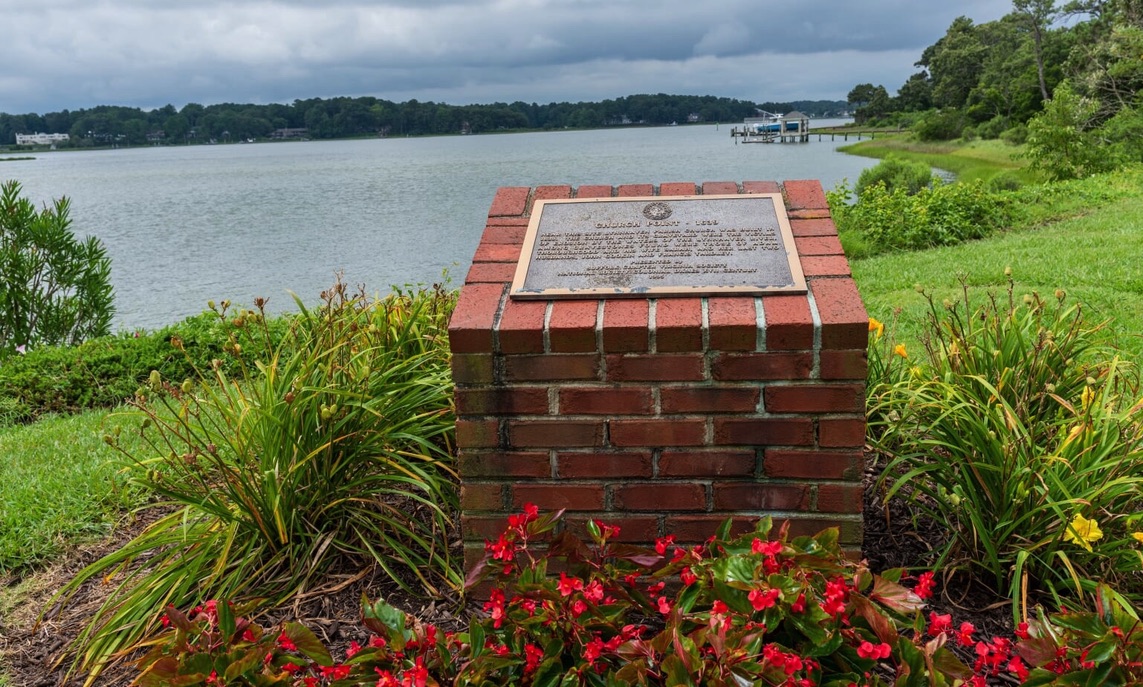


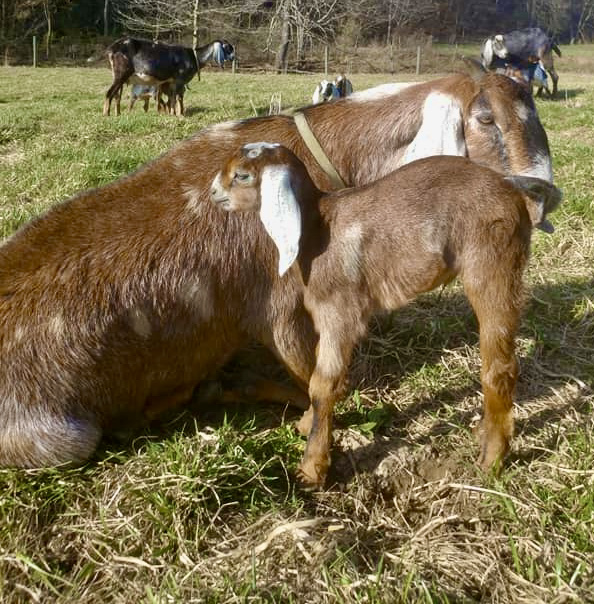
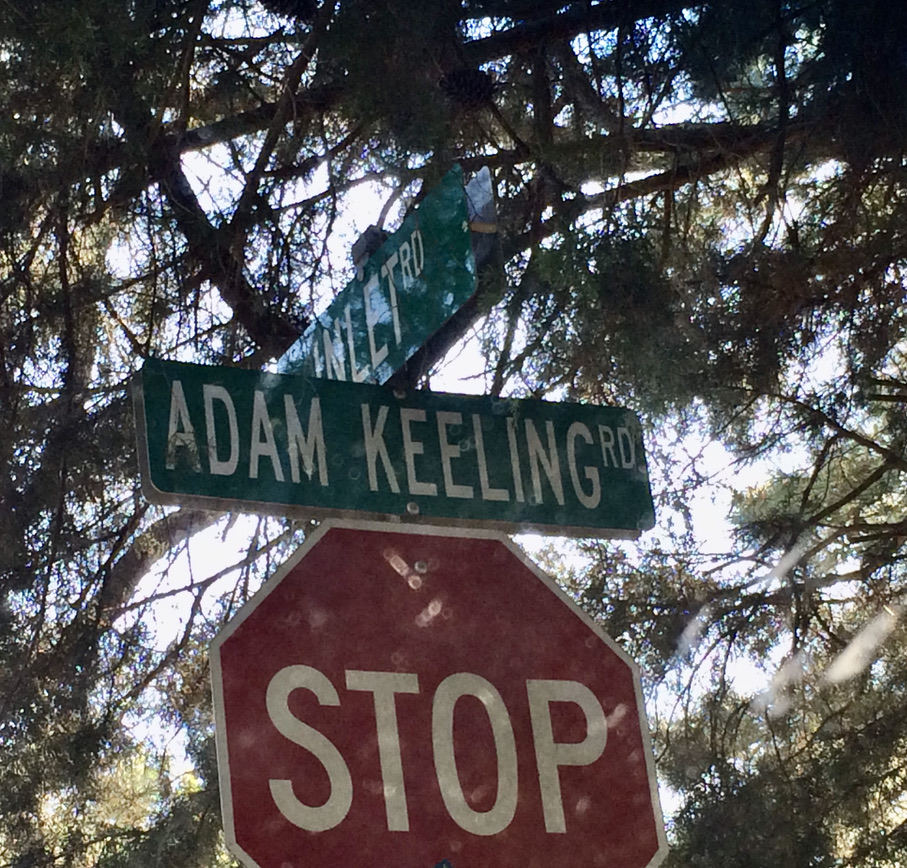 The entry “To my godson, Adam Keeling, one breeding goat,” explicitly stated Adam K.’s relationship to Adam T. who was his godfather and namesake. Thomas Keeling, Adam K.’s father, had been been brought to Virginia as a headright by Adam Thorowgood in 1628 aboard the Hopewell. In 1634, Thomas himself transported four headrights to the Colony, including his wife Anne. In 1637, he was an agent for Adam Thorowgood, and in 1640 he was appointed a vestryman for the parish. Thomas became an Ensign and then a Lieutenant in the militia. He acquired property across the Lynnhaven River from the Thorowgoods, and their descendants were neighbors and friends for many years. Like the later brick Thoroughgood House, there is a privately-owned brick ancestral home of the Keelings from that same era that gained the name “Ye Dudleys.” When Thomas died, Ann Keeling married Robert Bray. [15]
The entry “To my godson, Adam Keeling, one breeding goat,” explicitly stated Adam K.’s relationship to Adam T. who was his godfather and namesake. Thomas Keeling, Adam K.’s father, had been been brought to Virginia as a headright by Adam Thorowgood in 1628 aboard the Hopewell. In 1634, Thomas himself transported four headrights to the Colony, including his wife Anne. In 1637, he was an agent for Adam Thorowgood, and in 1640 he was appointed a vestryman for the parish. Thomas became an Ensign and then a Lieutenant in the militia. He acquired property across the Lynnhaven River from the Thorowgoods, and their descendants were neighbors and friends for many years. Like the later brick Thoroughgood House, there is a privately-owned brick ancestral home of the Keelings from that same era that gained the name “Ye Dudleys.” When Thomas died, Ann Keeling married Robert Bray. [15]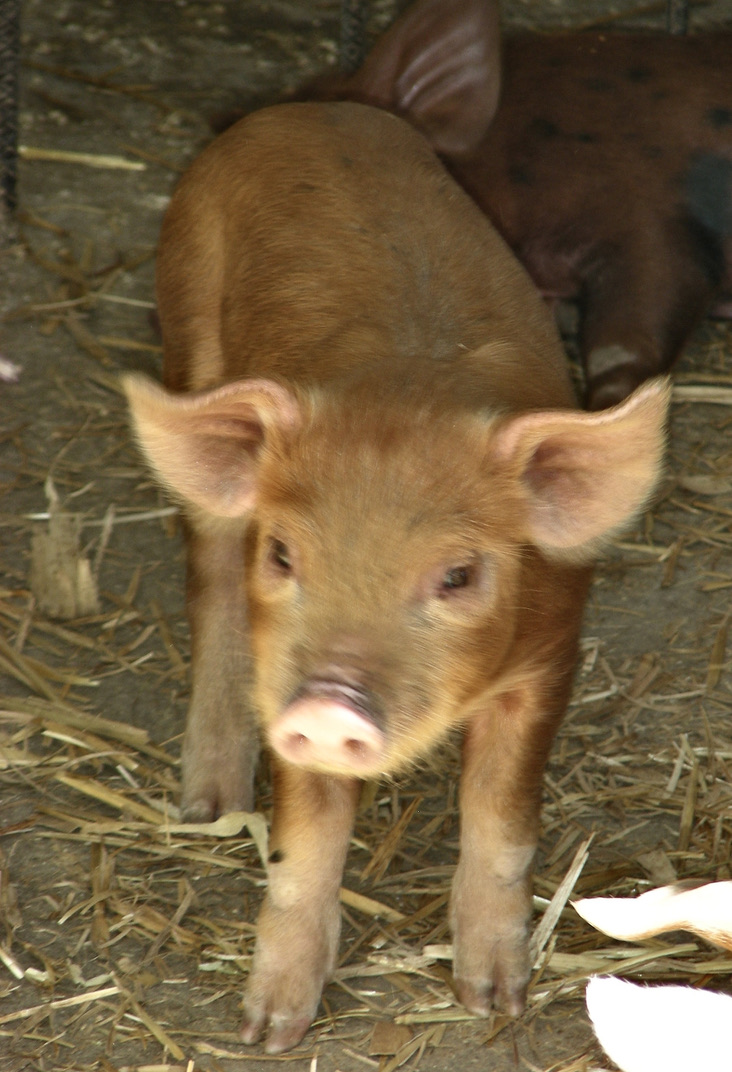 Jane Wheeler and William Stephens each received both a breeding goat and a shoat (young pig). However, there are no records of any connection they had to Adam Thorowgood. Neither Jane nor William appear in court or land records with the Thorowgoods or their associates nor were they prominent in the Colony. Ann Hayes included a kinswoman named Jane Needham in her will, which might lead one to speculate a re-marriage or transcription error, but Adam Thorowgood gave no relationship to this Jane. Perhaps Jane Wheeler and William Stephens had rendered special services or assisted in the time of Adam’s illness. Whatever, they were both recipients of a generous gift. [17]
Jane Wheeler and William Stephens each received both a breeding goat and a shoat (young pig). However, there are no records of any connection they had to Adam Thorowgood. Neither Jane nor William appear in court or land records with the Thorowgoods or their associates nor were they prominent in the Colony. Ann Hayes included a kinswoman named Jane Needham in her will, which might lead one to speculate a re-marriage or transcription error, but Adam Thorowgood gave no relationship to this Jane. Perhaps Jane Wheeler and William Stephens had rendered special services or assisted in the time of Adam’s illness. Whatever, they were both recipients of a generous gift. [17]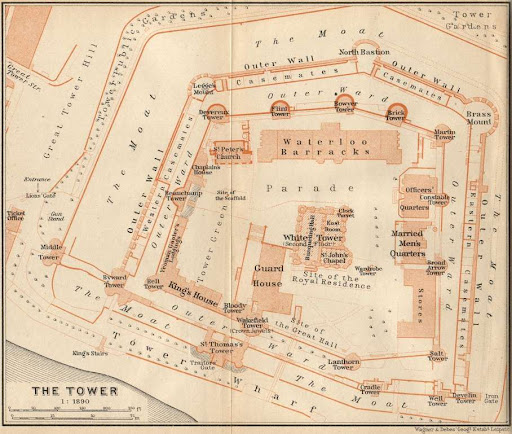 For the English affairs, Adam appointed his “dearly beloved brother Sir John Thorowgood of Kensington” and Mr. Alexander Harris whom Adam identified as his wife’s uncle living on Tower Hill. It was logical that Adam would rely on his brother Sir John who was a Gentleman of the Bed Chamber of Charles I and with whom Adam had been involved with tobacco shipments. However, the identity and involvement of Mr. Alexander Harris is a mystery. Sarah did not have an “Uncle Alexander,” and there is no Harris to be found in the extensive official Offley Pedigree or known of in the Osbourne line. Even if Harris were extended kin to Sarah Offley Thorowgood, she had several wealthy and influential brothers living in London who could have handled any claims. Perhaps, Harris worked for or with one of her uncles. In that era, Tower Hill was still the main place for executions, but, according to the London tithable list for 1638, Alexander Harris was one of the wealthy living there amongst the almshouses, foundry, small shops, and housing for foreigners. Was he the Alexander Harris who was the former warden of Fleet Prison or the one involved with shipping to Virginia? How Adam connected to Alexander is still a puzzle. [19]
For the English affairs, Adam appointed his “dearly beloved brother Sir John Thorowgood of Kensington” and Mr. Alexander Harris whom Adam identified as his wife’s uncle living on Tower Hill. It was logical that Adam would rely on his brother Sir John who was a Gentleman of the Bed Chamber of Charles I and with whom Adam had been involved with tobacco shipments. However, the identity and involvement of Mr. Alexander Harris is a mystery. Sarah did not have an “Uncle Alexander,” and there is no Harris to be found in the extensive official Offley Pedigree or known of in the Osbourne line. Even if Harris were extended kin to Sarah Offley Thorowgood, she had several wealthy and influential brothers living in London who could have handled any claims. Perhaps, Harris worked for or with one of her uncles. In that era, Tower Hill was still the main place for executions, but, according to the London tithable list for 1638, Alexander Harris was one of the wealthy living there amongst the almshouses, foundry, small shops, and housing for foreigners. Was he the Alexander Harris who was the former warden of Fleet Prison or the one involved with shipping to Virginia? How Adam connected to Alexander is still a puzzle. [19]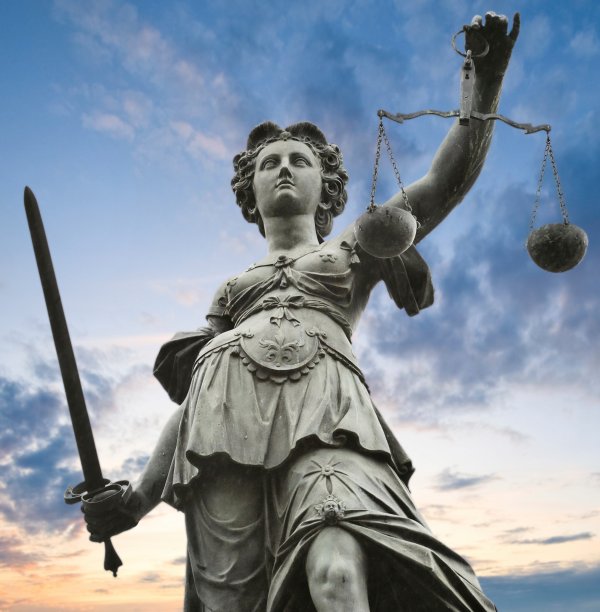
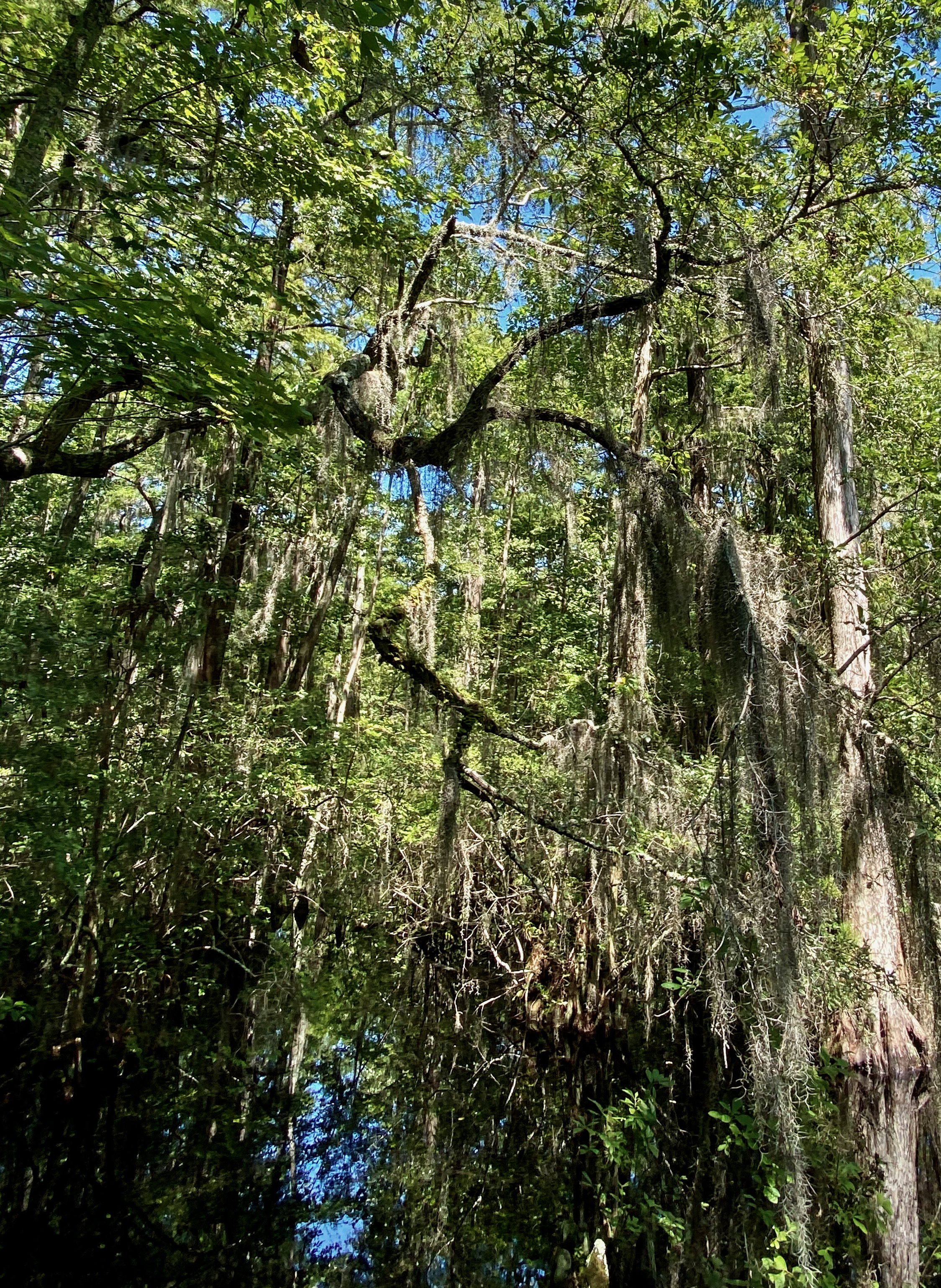
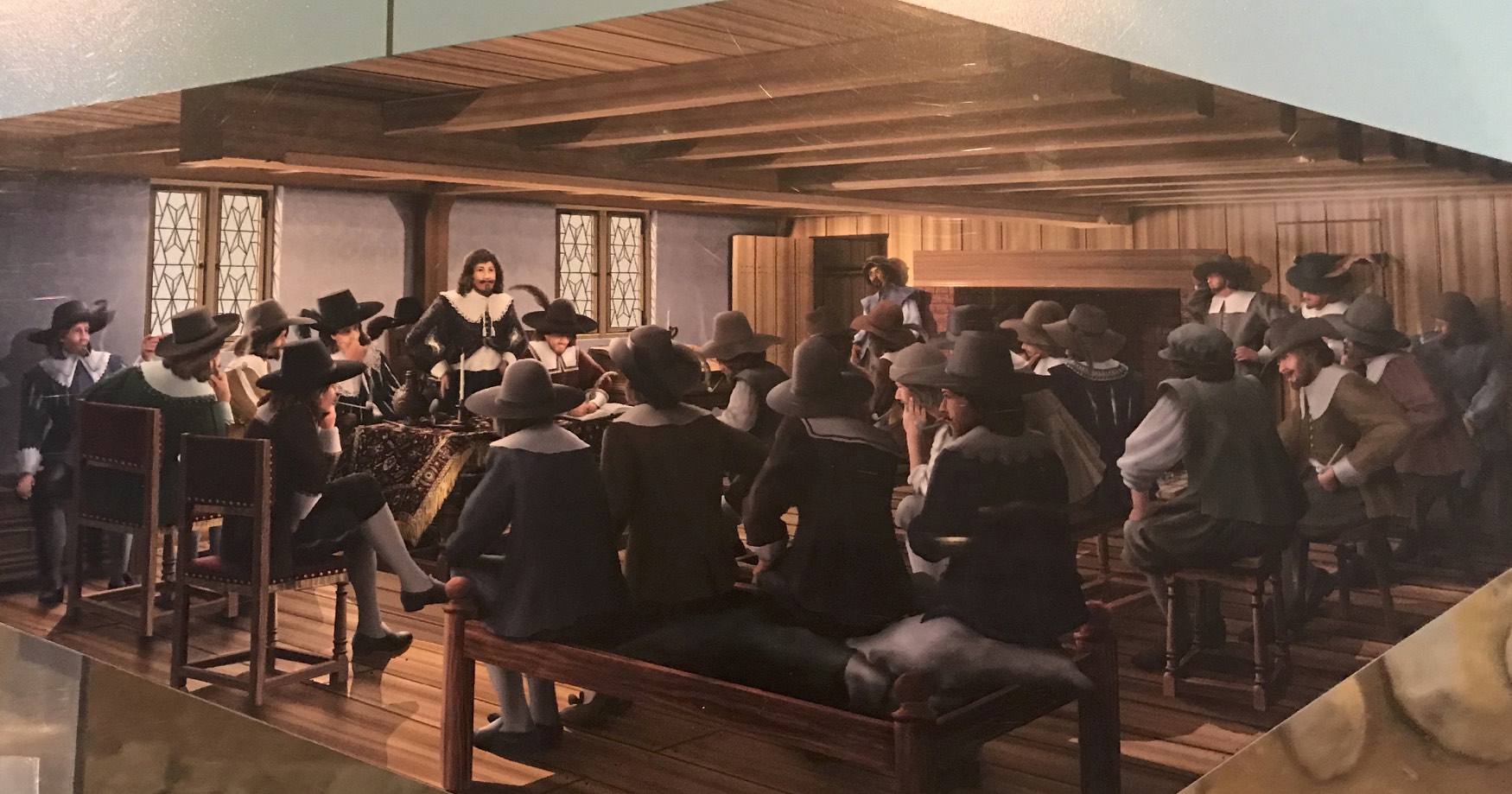
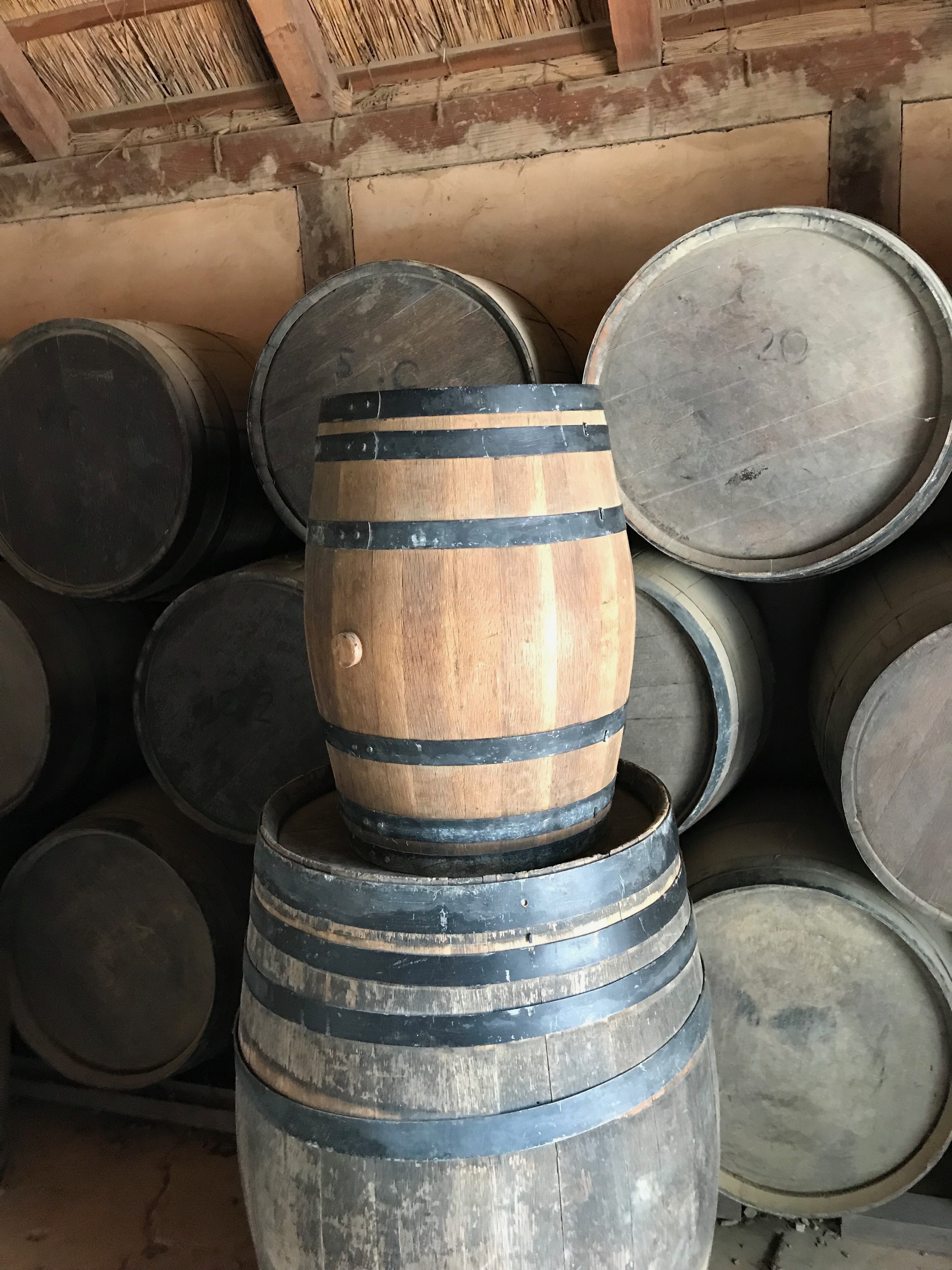 The first case of the first court was actually brought by Adam Thorowgood against a woman, Ann Fowler. Thorowgood’s servants had found and marked a lost cask by the seaside which William Fowler later came upon and took to his house. It was not the taking of the cask which was at issue, but Mistress Fowler’s responses when Adam’s servants came to claim it. Mistress Fowler was brought to court because, when told the cask would be returned to Capt. Thorowgood, she declared, “Let Capt. Thorowgood Kiss my arse.” She also called the agent of Thorowgood, Thomas Keeling, a “Jacknape, Newgate rogue, and brigand” and threatened if he did not leave, “she would break his head.” When this was confirmed by other witnesses, the court found that Anne Fowler did “in a shameful, uncomely and irreverent manner…with aggravation of many unusual terms” disrespect Adam Thorowgood and in a “shameful and reproachful manner…with abusive names and promiscuous speeches” defame Thomas Keeling. She was sentenced to 20 stripes on her bare shoulders and required to ask forgiveness of Adam Thorowgood and Thomas Keeling at the court that day and at Church on Sunday, both of which were held at the Thorowgood house. [4]
The first case of the first court was actually brought by Adam Thorowgood against a woman, Ann Fowler. Thorowgood’s servants had found and marked a lost cask by the seaside which William Fowler later came upon and took to his house. It was not the taking of the cask which was at issue, but Mistress Fowler’s responses when Adam’s servants came to claim it. Mistress Fowler was brought to court because, when told the cask would be returned to Capt. Thorowgood, she declared, “Let Capt. Thorowgood Kiss my arse.” She also called the agent of Thorowgood, Thomas Keeling, a “Jacknape, Newgate rogue, and brigand” and threatened if he did not leave, “she would break his head.” When this was confirmed by other witnesses, the court found that Anne Fowler did “in a shameful, uncomely and irreverent manner…with aggravation of many unusual terms” disrespect Adam Thorowgood and in a “shameful and reproachful manner…with abusive names and promiscuous speeches” defame Thomas Keeling. She was sentenced to 20 stripes on her bare shoulders and required to ask forgiveness of Adam Thorowgood and Thomas Keeling at the court that day and at Church on Sunday, both of which were held at the Thorowgood house. [4]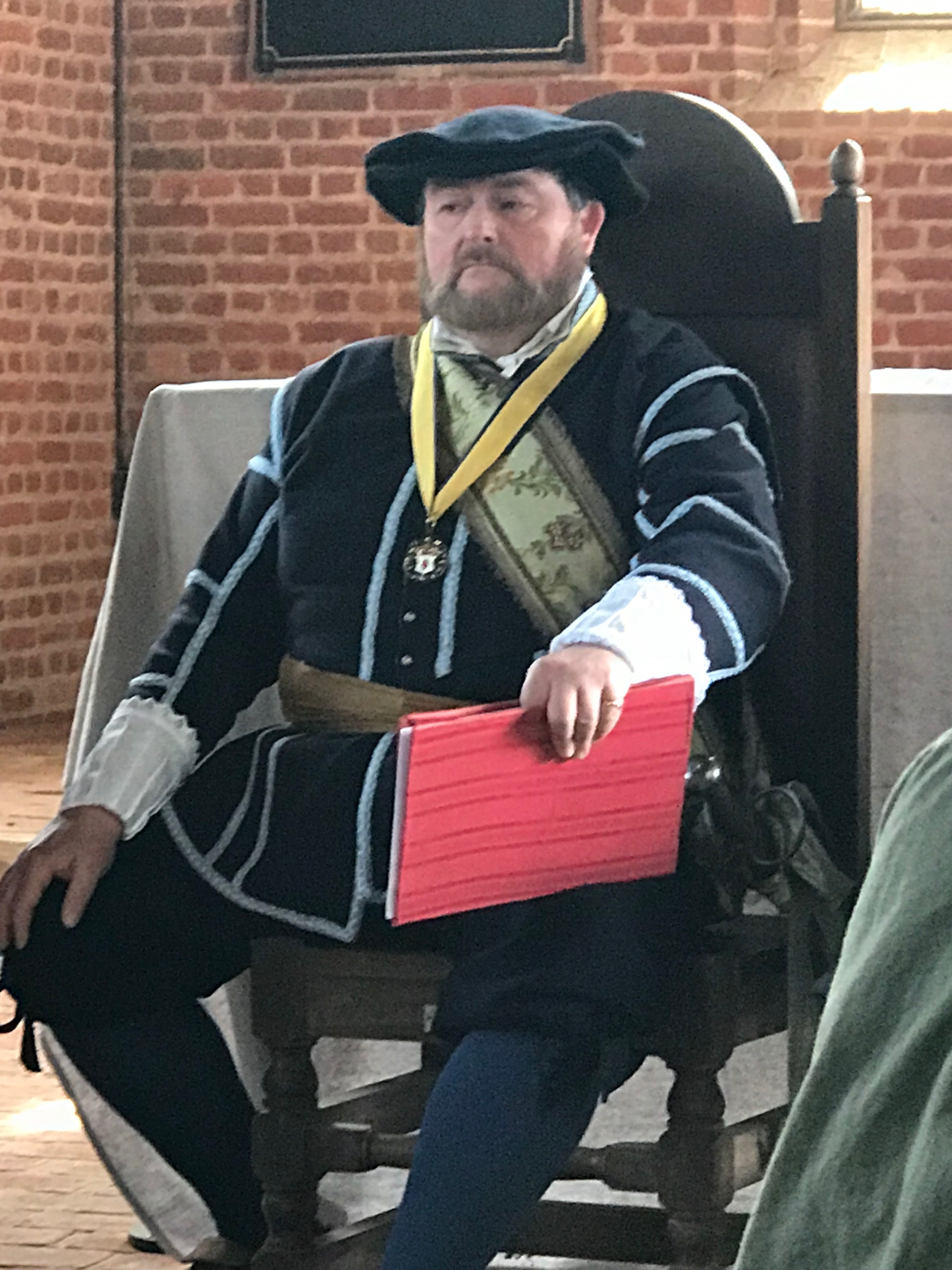
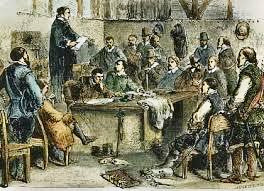 Many of the cases left to county courts fell within the tradition of English common law with the expectation that the untrained justices would govern “by laws resembling those of England as closely as circumstances would permit.” The overriding principle to guide them was seeking “perfect justice and equity of the case.” [8] It was hoped that these teams of justices would use their collective wisdom, governmental experience, and Christian ethics to make reasonable decisions and do right by their citizens.
Many of the cases left to county courts fell within the tradition of English common law with the expectation that the untrained justices would govern “by laws resembling those of England as closely as circumstances would permit.” The overriding principle to guide them was seeking “perfect justice and equity of the case.” [8] It was hoped that these teams of justices would use their collective wisdom, governmental experience, and Christian ethics to make reasonable decisions and do right by their citizens. 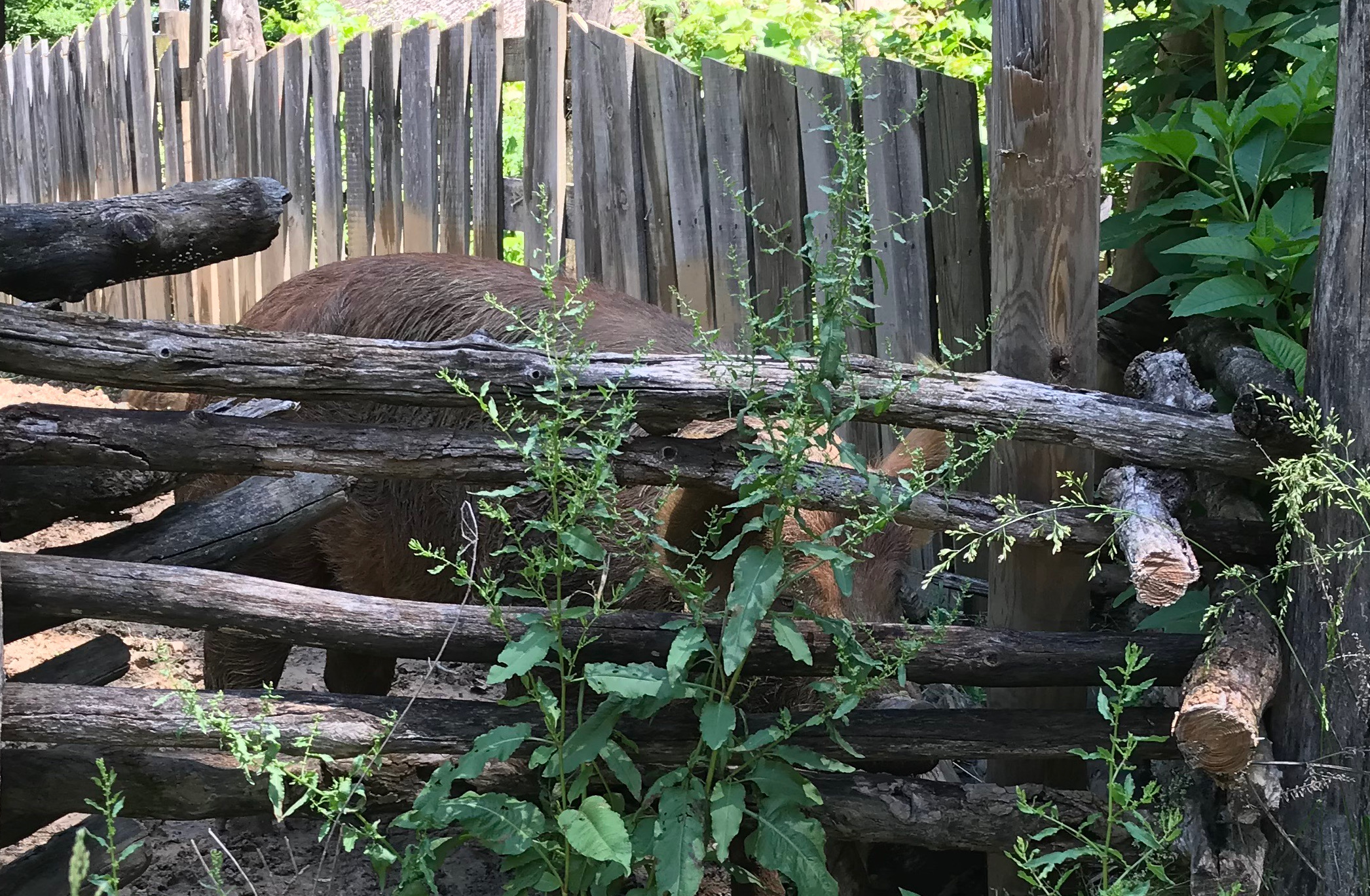

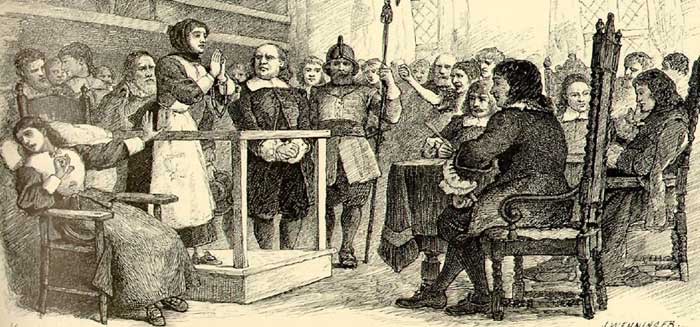 Slander cases (11%) were scandalous and spectacular. While some of the complaints may seem petty by our modern standards, they were a serious matter in colonial courts. The first case referenced above was about more than Thorowgood’s bruised ego and clearly sent a message to county residents. This was a very new community that was just coming together, as everyone had arrived within the prior 3-4 years when land grants were given. It was the beginning of local administration for this county and, while some justices might have known each other previously in Elizabeth City, it was the first time they were working together as a unit. It was also an era when respect and deference were expected: children to parents, servant to master, subject to the King and his envoys. Yet, cases sometimes revealed underlying resentment and anger against their successful leaders. [13]
Slander cases (11%) were scandalous and spectacular. While some of the complaints may seem petty by our modern standards, they were a serious matter in colonial courts. The first case referenced above was about more than Thorowgood’s bruised ego and clearly sent a message to county residents. This was a very new community that was just coming together, as everyone had arrived within the prior 3-4 years when land grants were given. It was the beginning of local administration for this county and, while some justices might have known each other previously in Elizabeth City, it was the first time they were working together as a unit. It was also an era when respect and deference were expected: children to parents, servant to master, subject to the King and his envoys. Yet, cases sometimes revealed underlying resentment and anger against their successful leaders. [13]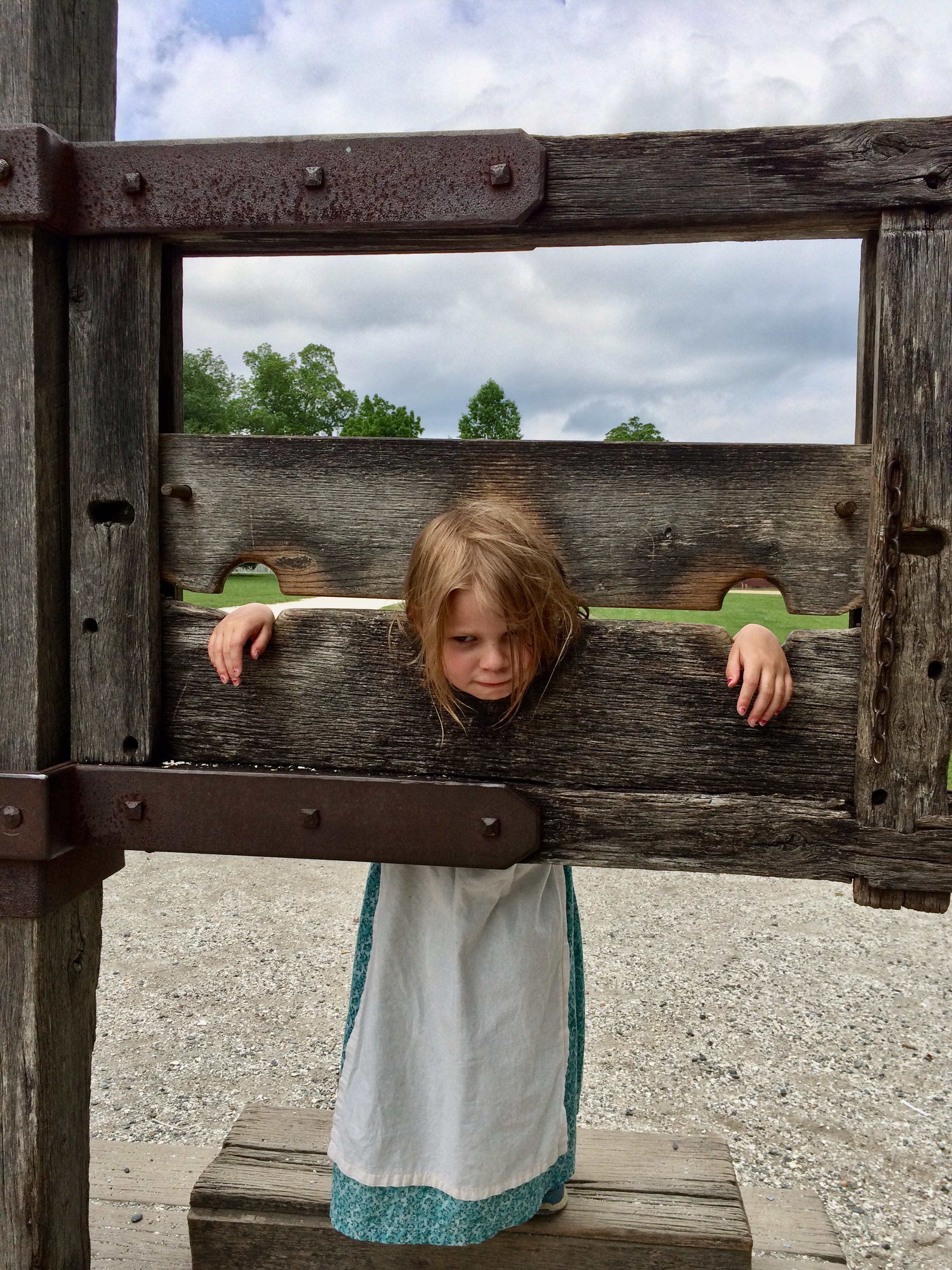 The next year a more damaging accusation was levied at another justice, John Sibsey. Debra Glascocke, the wife of a carpenter, falsely accused Sibsey of having a child with one of his maids, for which Glascocke was given 100 stripes on her shoulders and required to ask forgiveness in court and at church. A similar punishment was given to Margaret Harrington when she accused, but could not prove, that Cornelius Loyd had abused the body of Sarah Julian, another justice’s wife. However, it was not just women who told such stories. When drunk, Thomas Davis falsely boasted that he had been with Anne Clarke and Richard Lowe falsely scandalized Anne Bitkings, a planter’s wife. They were both ordered to ask forgiveness and had to pay for the building of stocks. [15]
The next year a more damaging accusation was levied at another justice, John Sibsey. Debra Glascocke, the wife of a carpenter, falsely accused Sibsey of having a child with one of his maids, for which Glascocke was given 100 stripes on her shoulders and required to ask forgiveness in court and at church. A similar punishment was given to Margaret Harrington when she accused, but could not prove, that Cornelius Loyd had abused the body of Sarah Julian, another justice’s wife. However, it was not just women who told such stories. When drunk, Thomas Davis falsely boasted that he had been with Anne Clarke and Richard Lowe falsely scandalized Anne Bitkings, a planter’s wife. They were both ordered to ask forgiveness and had to pay for the building of stocks. [15]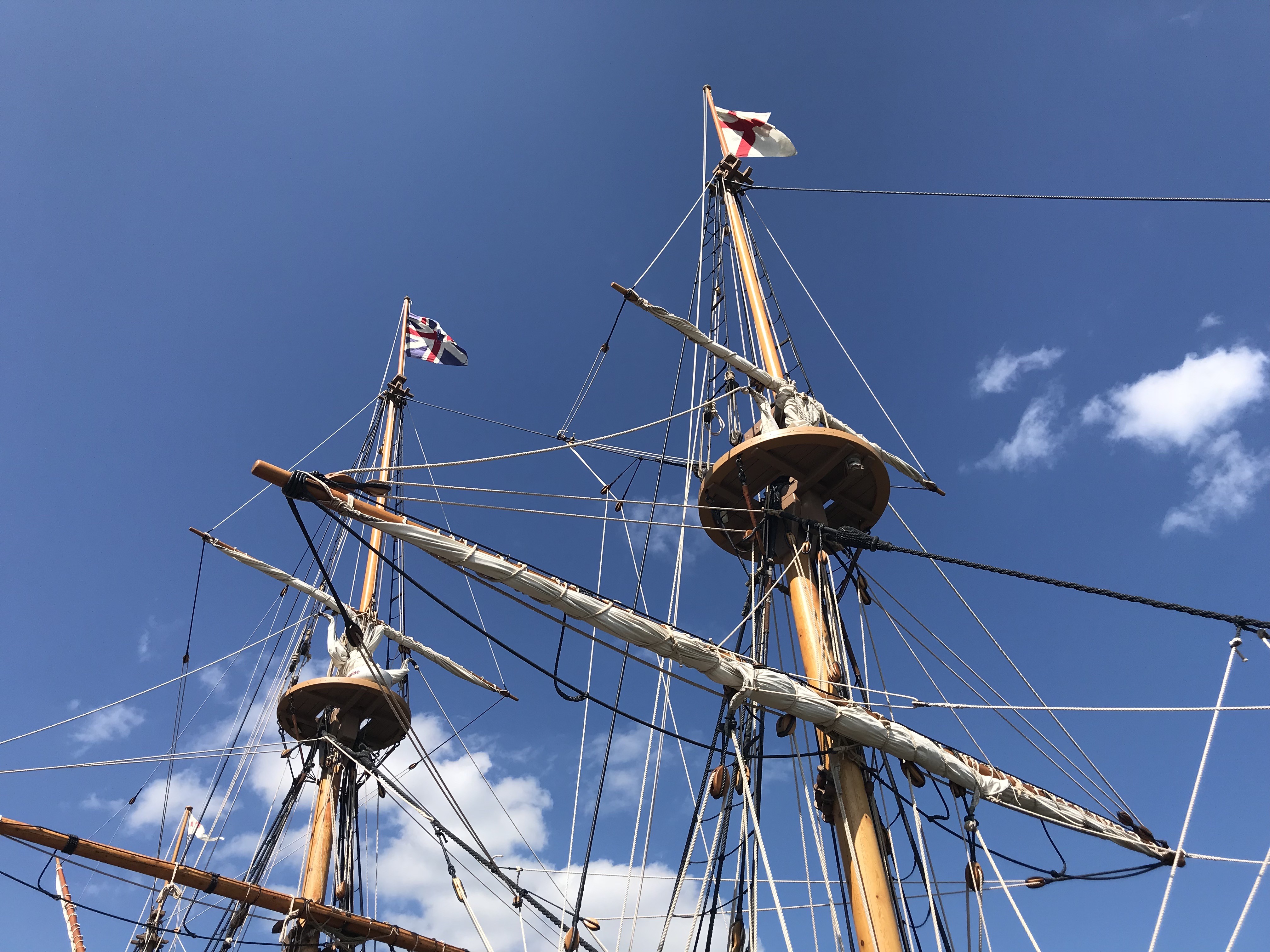 Any violent felony cases would have gone to Jamestown, but there were no county reports or fact finding indicating such incidents occurred in those years. However, in 1638, the servants of John Sibsey in his absence raised a mutiny against his agent, William Edwards, for which they each received 100 stripes. The only reported assault involved the wounding of a fellow mariner “in a desperate and dangerous manner without cause” for which those sailors were returned to their ship and ordered to pay the surgeon when they reached England for the treatment of the wound. [17]
Any violent felony cases would have gone to Jamestown, but there were no county reports or fact finding indicating such incidents occurred in those years. However, in 1638, the servants of John Sibsey in his absence raised a mutiny against his agent, William Edwards, for which they each received 100 stripes. The only reported assault involved the wounding of a fellow mariner “in a desperate and dangerous manner without cause” for which those sailors were returned to their ship and ordered to pay the surgeon when they reached England for the treatment of the wound. [17]
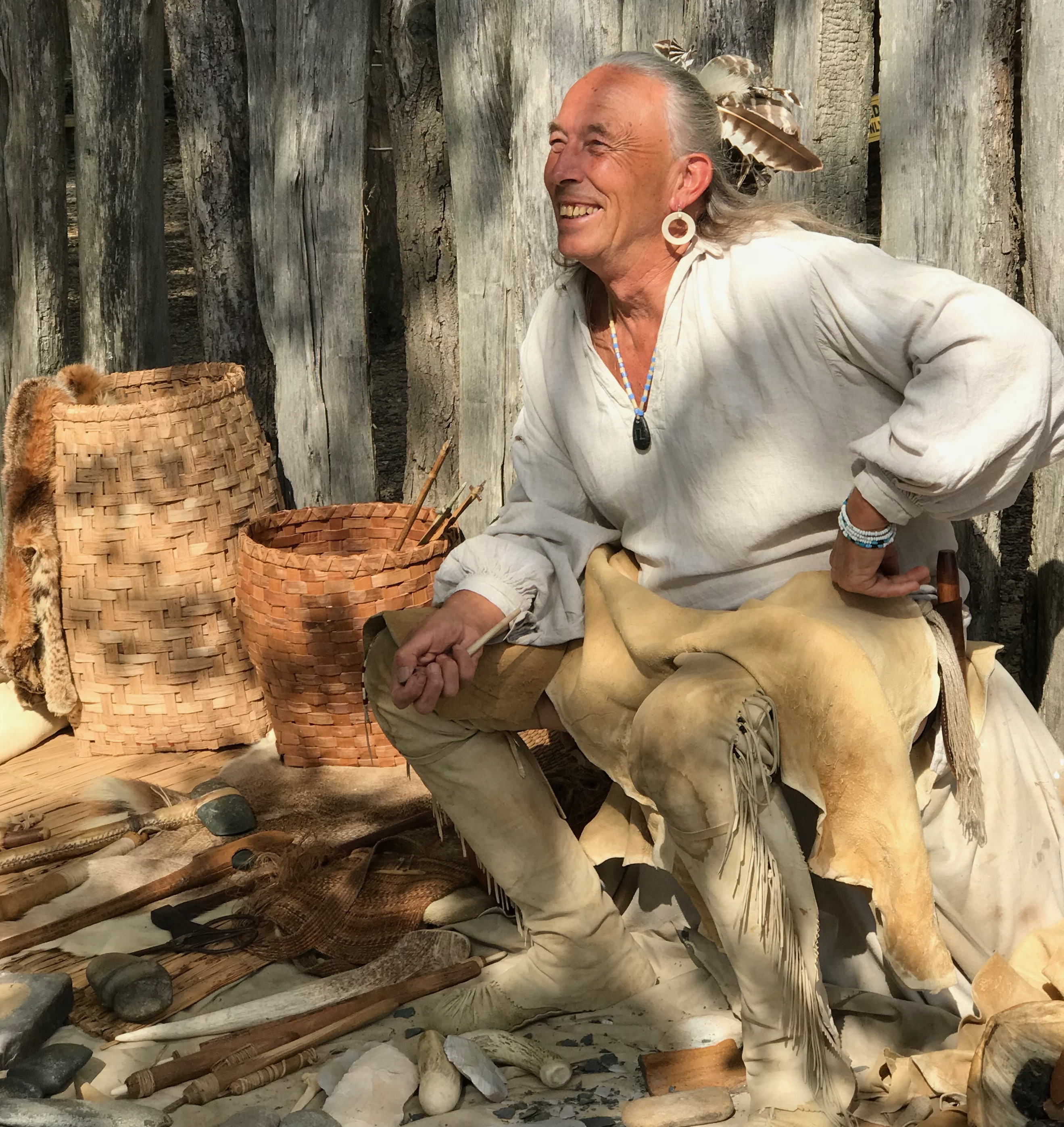 The Governor and Assembly set the policy for dealing with Indians, and in 1639 they ordered the county court to conscript “fifteen sufficient men” with food and supplies to march against the Nanticoke Tribe of the Eastern Shore, even though they were not a threat to the Lower Norfolk area. The court also provided licenses to bargain with the Indians, and Christopher Burroughs received a 500 lb. tobacco fine when he bargained without one. [18]
The Governor and Assembly set the policy for dealing with Indians, and in 1639 they ordered the county court to conscript “fifteen sufficient men” with food and supplies to march against the Nanticoke Tribe of the Eastern Shore, even though they were not a threat to the Lower Norfolk area. The court also provided licenses to bargain with the Indians, and Christopher Burroughs received a 500 lb. tobacco fine when he bargained without one. [18] 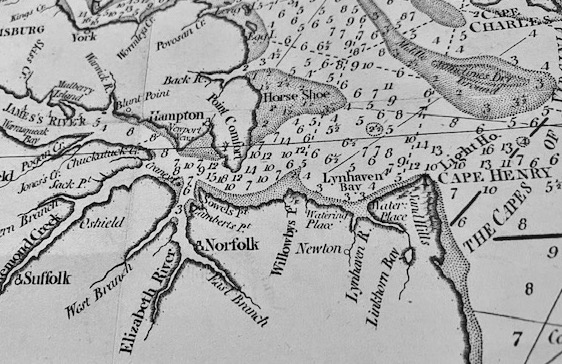 The death of Adam Thorowgood was unexpected in the winter of 1639/40, but, of course, the court proceeded on. Thomas Willoughby was appointed the presiding justice, and the court continued to rotate being held at the homes of justices until May 1646 when it was decided that all future courts should be held at the tavern of William Shipp on the Eastern Branch of the Elizabeth River. It was not only convenient, but also provided desirable refreshments. In 1655, the Norfolk commissioners ordered that a market and church should also be built for the Elizabeth Parish on Mr. Shipp’s land. As the General Assembly had ordered a similar set up of church, court, and market in each parish, plans were made to also build on Thorowgood land, but the order was rescinded before it was done. However, in January 1660, the first Lower Norfolk County court house was finally designated to be built at Thomas Harding’s plantation on Broad Creek off the Elizabeth River. Although its exact location is not known, it was near today’s dividing line between Norfolk and the City of Virginia Beach. [19]
The death of Adam Thorowgood was unexpected in the winter of 1639/40, but, of course, the court proceeded on. Thomas Willoughby was appointed the presiding justice, and the court continued to rotate being held at the homes of justices until May 1646 when it was decided that all future courts should be held at the tavern of William Shipp on the Eastern Branch of the Elizabeth River. It was not only convenient, but also provided desirable refreshments. In 1655, the Norfolk commissioners ordered that a market and church should also be built for the Elizabeth Parish on Mr. Shipp’s land. As the General Assembly had ordered a similar set up of church, court, and market in each parish, plans were made to also build on Thorowgood land, but the order was rescinded before it was done. However, in January 1660, the first Lower Norfolk County court house was finally designated to be built at Thomas Harding’s plantation on Broad Creek off the Elizabeth River. Although its exact location is not known, it was near today’s dividing line between Norfolk and the City of Virginia Beach. [19] 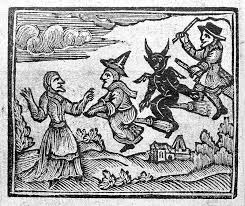 In a study of the crimes and misdemeanors (excluding debts and administrative decisions) in Lower Norfolk County from 1637 until 1675 just before Bacon’s Rebellion, James Horn found that serious crimes increased. While property offenses were 13.5%, including theft (6%) and killing of livestock (5%), violent crimes increased to 11% with 13 murders (2.7%) and 23 physical assaults (4.8%). Defamation continued to be a problem (23.4%), and there was a significant increase in reported sexual offenses (30%). Contempt of court and challenges to authority made up 12% with another 10% miscellaneous charges, including 2 accusations of witchcraft. [20]
In a study of the crimes and misdemeanors (excluding debts and administrative decisions) in Lower Norfolk County from 1637 until 1675 just before Bacon’s Rebellion, James Horn found that serious crimes increased. While property offenses were 13.5%, including theft (6%) and killing of livestock (5%), violent crimes increased to 11% with 13 murders (2.7%) and 23 physical assaults (4.8%). Defamation continued to be a problem (23.4%), and there was a significant increase in reported sexual offenses (30%). Contempt of court and challenges to authority made up 12% with another 10% miscellaneous charges, including 2 accusations of witchcraft. [20]